














Welcome to the autumn issue of the Journal!
You’ll notice this issue has a fresh new look –part of our commitment to making the journal more engaging, accessible and relevant to our readers.
These words are being penned immediately following Cyclone Alfred’s weekend of wet weather in Brisbane – for most of those in our office fortunately a minor inconvenience, and we hope the same for our readers.
This also marks the last edition for our wonderful editor, Eve White, who has commenced her full time ‘dream job.’ Eve took over from Anne Currey in 2022 and has kept the publication going to an incredible standard. We welcome Gemma Nardone from MyTinyHQ who will take up the reins from the next edition.
We also say farewell to Madeleine Farmilo who has been doing an incredible job of working on a major compliance and clean up project for our Registered Training Organisation. Mads is undertaking some further study towards a new career supporting teaching.
New website and head office
Have you checked out www.irrigationaustralia.com.au yet? Thanks to a mammoth effort we have a brand-new website with a vastly improved layout and some nice new tools, including a map interface for our membership and certification directories. We’re keen to hear what you think – the changes will hopefully make it a lot easier to bring you new content as it happens, with a much more serviceable interface for our staff.
By the time you read this, our head office staff will also have moved to a new location: 1/35 Paringa Road, still at Murrarie, but further east. The new space is much more practical for our needs, with less unused meeting space and a warehouse that provides greater flexibility for storage and training equipment.
Training news
We’re working hard to increase training enrolments following a quiet irrigation season. As part of this effort, we’ll soon launch our new training platform and
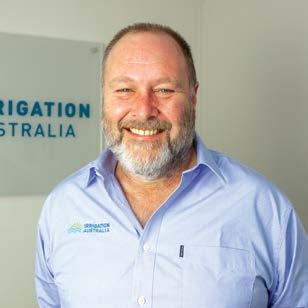
introduce a revised membership framework, developed with input from external marketing experts.
A range of new training materials is also in rapid development, including some new online-only courses and a microcredential for Queensland members –Irrigation Efficiency and Practical Skills – which is being developed with financial support from the Queensland Government.
Every course we deliver is being re-designed to offer more flexible delivery options with a new, feature-rich learning management system. Our goal is to tailor both content and delivery to ensure that you get the most value from your investment in developing your team’s skills and knowledge.
Please join us on 9 April for a webinar showcasing the new system and gathering member feedback on the types of training you’d like to see – where and when. And, save the date for an important session on the Future of Irrigation Australia – 21 May!
Irrigation careers
We’ve been making progress on careers projects to support the rollout of www.irrigationcareers.org.au Keep an eye on the e-news for updates as they happen. These include a partnership with atWork Australia, which offers potential staff placements with federal government financial support, and our new talent hub with Goheadhunt – a cost-effective, alternative to traditional recruitment, designed to better match potential candidates with employers.
New Irrigation Futures sponsor: Rivulis
Finally, we’d like to welcome Rivulus to our amazing list of Irrigation Futures sponsors and supporters. For any other organisations interested in being part of this great initiative and to jump on the back of our big upcoming marketing campaign, please reach out to dave.cameron@irrigation.org.au
Simon Treptow, Board Chair
Dave Cameron, CEO

SNAPSHOT
The Nicholson Irrigation System (NIS), developed by Nicholson River Winery in East Gippsland, uses conventional drippers to deliver water directly to the plant roots via PVC pipe.
This method saves water by reducing watering time, evaporation, and weed growth.
It is easy to repair and maintain and lowers power and herbicide use.
A network of tensiometers to measure soil moisture complements the NIS.
NIS costs more than line irrigation at about $3.50 to $4 per plant, mainly due to labour; retrofitting is more expensive.
Half an hour to one hour is ample watering time with the NIS, and Ken, the vineyard manager, says it has reduced water use from 3 ML/ha to less than 1 ML/ha per year.
At Nicholson River Winery in East Gippsland, Victoria, irrigation has always been a balancing act –keeping vines healthy while making the most of limited water resources. After decades of using conventional drip irrigation, vineyard owner Ken Eckersley and his team set out to find a better way. They developed a new system that delivers water more efficiently, reduces evaporation, and promotes deeper root growth.
The irrigation system is easy to install, using plumbing components that are readily available. This article describes how they did it.
The property has been producing wine for almost 30 years and relies on irrigation to supplement the variable 663 mm rainfall at Nicholson, in East Gippsland, Victoria.
The first vines planted relied solely on rainfall. Without irrigation, they established deep root systems, which helped them access water from deeper soil layers. According to Ken, these older vines are still producing the best fruit on the property.
Over time, as rainfall became less reliable, the vineyard installed drip irrigation to ensure a consistent water supply. In 2010, Jeff Paterson, Peter O'Keeffe and Ken Eckersley of Nicholson River Winery won first prize in the Southern Rural Water Waterwise award for groundwater users. The judges commended the system as being highly adaptable to other forms of agriculture.
However, they found that newly planted vines performed poorly. Extended drought, coupled with competition from summer grasses and inadequate water, resulted in plants with limited root development. These plants were also often diseased.
As a solution, the vineyard managers came up with the idea of combining conventional drippers with sections of PVC pipe to deliver water directly to the plant roots. This idea developed into what they call the Nicholson Irrigation System (NIS), which delivers water directly to the plant roots, is longlasting and ensures leaks and blockages are easy to fix.
The NIS combines the benefits of surface drip irrigation and subsurface irrigation. It uses 13 mm or 19 mm irrigation lines with pressure-compensation drippers located at each vine. Each emitter drips into a 40 mm PVC pipe that is inserted into the ground at the base of the plant.
Installation involves using a post-hole drill to dig to a depth of about one metre.
This loosens the soil to a depth of about half a metre below the PVC pipe to allow water to freely flow into the soil.
Gypsum can be added to clay soils to help improve soil structure during installation and to help with water penetration. The 60 cm length of PVC pipe is then inserted into the ground with 10 cm exposed above ground. The base of the PVC pipe is cut on an angle to reduce blockages during installation.
“In times of long-term rainfall decline, and rising costs, it can be the difference between viability and a slowly declining vineyard.”
The NIS delivers water directly to the plant's root zone rather than to the ground surface. This means less water is lost to evaporation and to competing grasses. Plant roots are also able to extend deeper into the soil rather than staying near the surface.
The NIS allows plants to quickly respond to added fertilisers or fertigation, although nutrients must be carefully applied to avoid burning the sensitive roots.
The introduction of the NIS has also been complemented with an extensive network of tensiometers to measure soil moisture.
The NIS also allows for a variation in dripper rates according to soil types. An unexpected benefit of installing the system is that the PVC pipe has provided a habitat for snails to collect in, which are then killed by baits.
Water-logging may be a problem with this system in some soil types. Installing the PVC pipe with an angled end, drilling the watering holes deeper than the PVC pipe and adding gypsum into the hole, can help to increase infiltration rates. The potential impact of water-logging can also be managed by varying the volume of water delivered to each plant by changing the rate at each dripper, based on soil type.
Installing the new system costs more than in-line irrigation at about $3.50 to $4 per vine. More than half of this is the labour
cost. It costs more to retrofit an existing line irrigation system as more labour is needed.
But according to Ken, it is a worthwhile investment. “In times of long-term rainfall decline, and rising costs, it can be the difference between viability and a slowly declining vineyard,” Ken said.
So far, the eight-hectare vineyard has had half of its 16,000 vines upgraded to receive water through the NIS. In future, Ken plans to automate the irrigation system with electronic valves and a timing unit, as half an hour to an hour is ample watering time with the NIS system. The original drip irrigation system took six to eight hours per watering.
Ken says there are huge savings to be made with the new system. “Our vineyard is a work in progress; however, there are indications that water use has reduced from three megalitres per hectare per year to one megalitre per hectare per year,” Ken said.
Acknowledgment. This is an edited version of an article, reprinted with permission from Agriculture Victoria: ‘Water use and pumping costs’, Agriculture Victoria website, accessed 14 March 2024.

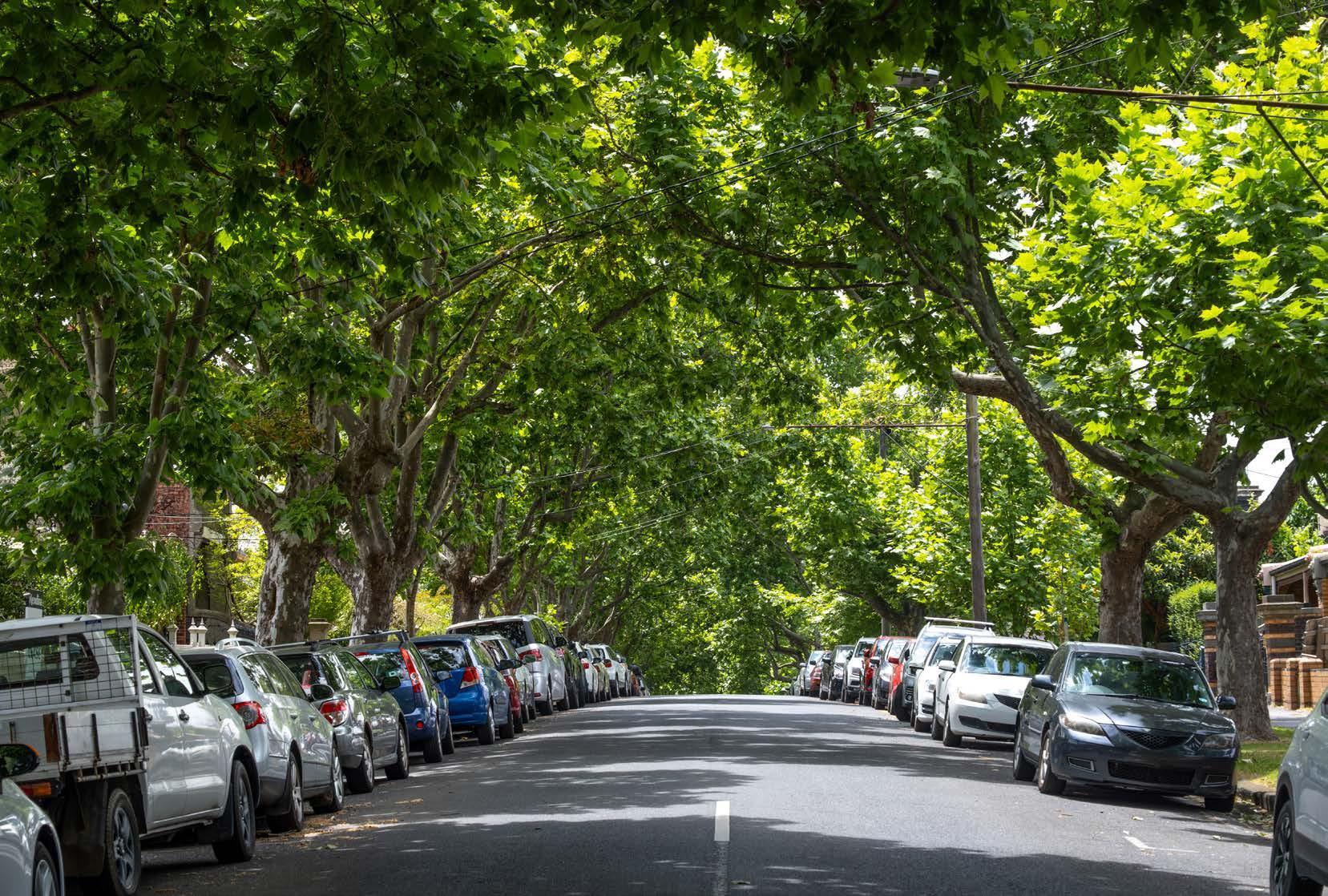
Instead of draining stormwater away, passive irrigation puts it to good use –sending it to green spaces where it helps keep cities cooler and greener.
Stormwater from rain and urban runoff is a free water source that can be redirected using gravity, making passive irrigation a low-cost, energyefficient solution.
These systems let water soak into the ground or move underground, reducing runoff, preventing erosion, and helping plants thrive.
Street trees struggle to get enough water in cities, but passive irrigation can help – though challenges like space constraints and maintenance need to be considered.
Wicking lawns store water underground, cutting evaporation, keeping grass greener for longer, and making better use of stormwater.
• Costs: Can be pricier than conventional landscaping. SNAPSHOT
As cities heat up in our changing climate, councils are looking for ways to keep urban areas cooler and greener. One approach is passive irrigation. Instead of treating stormwater as a problem to be drained away, this approach redirects it into vegetated areas using gravity – helping plants and trees thrive while reducing stormwater pollution.
Water sources for passive irrigation
Stormwater, including runoff from rain and roofs, is a key water source for passive irrigation. Instead of letting it rush down drains, we can put it to good use.
Here are some benefits:
• It is cost-effective and energy efficient. There’s no need for pumps or extra energy – gravity does the work.
• It helps keep cities cool and green. More water for plants means lusher, more liveable spaces.
• It reduces stormwater impacts. Slowing runoff improves water quality and reduces erosion in waterways.
There are many ways to incorporate passive irrigation into urban landscapes. Here’s a closer look at two key approaches:
Passively irrigated street trees. Urban street trees often struggle to get enough water, thanks to compacted soils and surrounding hard surfaces. Rainwater simply runs off roads and footpaths instead of soaking into the soil. That’s where passive irrigation comes in – diverting stormwater into tree pits with enough soil volume to support deep root growth.
But fitting street trees into existing infrastructure isn’t always easy. Common challenges include:
This article, based on Designing for a Cool City – Guidelines by the CRC for Water Sensitive Cities, outlines how passive irrigation can be designed, built, and maintained to keep urban landscapes greener, cooler, and more liveable. The article focuses on two approaches: passive irrigation of street trees and wicking lawns. Approaches to passive irrigation
• Space constraints: Underground pipes, powerlines, and street furniture can limit available space.
• Infrastructure conflicts: Roots and excess water might interfere with nearby footings or drainage systems.
• Road safety: Trees must be positioned to maintain clear sightlines.
• Maintenance needs: Vegetated landscapes require upkeep.




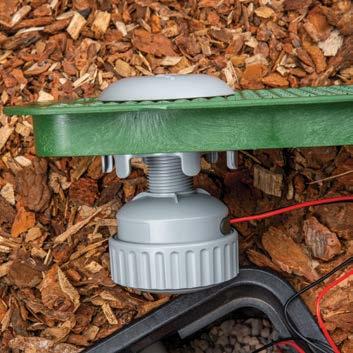
Go wire-free with the Wireless Valve Link! Using advanced radio technology, this innovative system makes it easy to connect valves without running wire or cutting into hardscape. Designed for Hunter ICC2 and HCC Controllers, it saves time and money with simplified installation, quick station expansion, and reduced maintenance. When complex landscapes pose a challenge, go wireless!

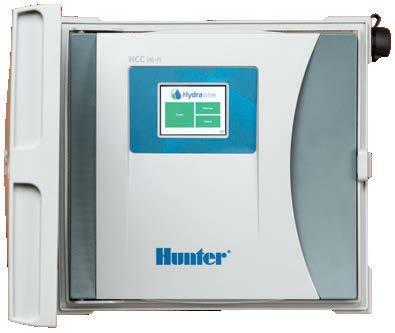
To learn more, visit hunter.info/ WVLem

National Free Call: 1-800-HUNTER
Toll-Free Fax: 1 -800-651-680
www.hrproducts.com.au hrsales@hrproducts.com.au
LANDSCAPE IRRIGATION | Built on Innovation® Learn more. Visit hunterirrigation.com

Tel: 1-300-856-368
Fax: 1-300-856-369
www.nelsonirrigation.com.au info@nelsonirrigation.com.au
50 Lynch Street Hawthorn, VIC 3122, Australia Tel: 61-3-9562-9918
Passive irrigation systems channel stormwater from nearby surfaces into green spaces. The water can either soak in at the surface or be delivered underground, where it slowly rehydrates the soil and plant roots over time. The goal is to store and distribute water naturally, reducing the impact of hard, impermeable surfaces while supporting long-term plant health.

The best locations avoid clashes with existing infrastructure, but when that’s not possible, it might be necessary to reconfigure existing infrastructure.
Once the location of the street trees has been determined, the catchment area will then also be influenced by the crossfall of the street, the location of side entry pits and the roof drainage of adjacent buildings. The catchment area will have a large influence on the soil moisture of the system.
Wicking lawns. Unlike traditional lawns that rely on surface watering, wicking lawns have a built-in subsurface reservoir. Water moves upward through the soil via capillary action, meaning less evaporation and more efficient use of water. This setup provides a reliable source of moisture, keeping turf healthy and resilient while reducing the need for frequent irrigation.
Wicking lawns work best on flat surfaces (or terraced areas) but aren’t suitable for sloped landscapes. Their design is flexible, scaling from small home gardens to large sports fields. Unlike tree irrigation systems that prioritise soil volume, wicking lawns are shaped by landscape design needs and available space.
So, why choose a wicking lawn over a surface-irrigated one?
• The grass stays green all day: Since water is stored underground, there’s no need to schedule watering around public use.
• It’s a safe way to use stormwater: The separation between people and water reduces contamination risks.
• It’s highly efficient: No evaporation losses from sprinklers, and the turf only takes up the water it needs.
• It encourages deep root growth: Stronger roots lead to more resilient grass.
• It maintains even colour and density: Better visual appeal, with less patchy growth.
• It uses stormwater nutrients. Reducing the need for additional fertilisers.
Pre-start meeting
Bulk earthworks
Impervious liner
Underdrainage
Structural cell/soil
Soil media
Finished levels and hard landscape features
Protective measures
Landscape installation
Landscape establishment
• It improves usability: Smart drainage prevents waterlogging, making it easier to maintain and use after rain.
• It helps with carbon capture: A wellwatered lawn absorbs more CO2 and stays significantly cooler.
Building passive irrigation into urban landscapes
Getting passive irrigation right takes careful planning. Civil engineers, landscape architects, and urban designers all need to work together to make it happen. Key considerations include:
• Construction timing: Passive irrigation features must be installed at the right stage in the process.
• Sediment and erosion control: Bypassing stormwater in the early phase can prevent clogging.
• Temporary irrigation: New plantings may need extra watering for the first couple of growing seasons.
Getting passive irrigation right takes careful planning. Civil engineers, landscape architects, and urban designers all need to work together to make it happen.
Clarify responsibilities and design details
Set out system
Location of existing services
Base course preparation
Install to specification
Ensure layout and size match design
Layout and install to specifications
Ensure material delivered to site meets specification
Test in-situ material
Ensure final levels align with surrounding infrastructure
Ensure systems are protected during construction phase before landscape installation
Ensure plants are healthy and meet specification
Provide additional maintenance required during establishment
While passive irrigation is designed to be low-maintenance, regular care is still essential. Here’s what’s involved:
• Clearing debris and sediment: Preventing blockages that could reduce soaking into the soil.
• Managing plant densities: Infill planting where necessary to maintain system integrity.
• Weeding and pruning: Keeps plants healthy and visually appealing.
• Surface adjustments: Fixing minor soil displacement or erosion issues.
If larger problems arise – such as excessive sediment buildup, poor drainage, or plant failure – more significant maintenance might be needed. Keeping track of maintenance activities helps refine management strategies and ensures long-term performance.
Passive irrigation is a smart, sustainable, and low-energy way to keep urban landscapes
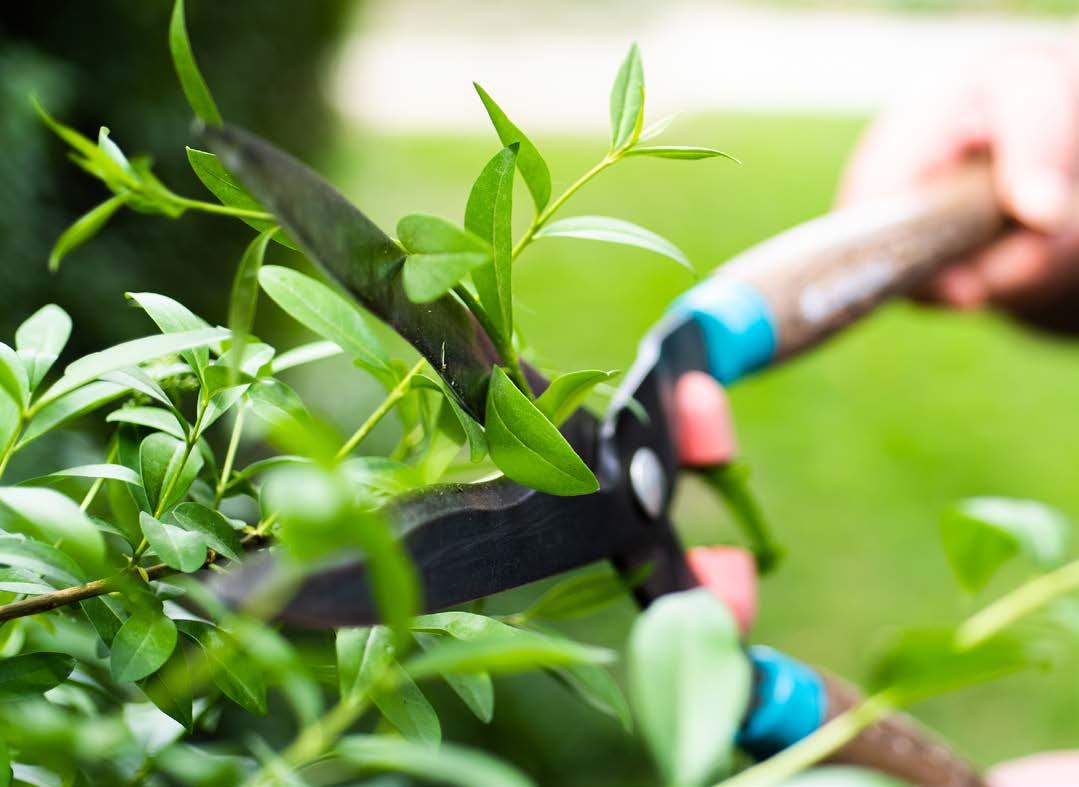
green and cool. By making the most of stormwater, cities can improve plant health, reduce heat, and protect waterways – all while cutting down on unnecessary water use. As urban areas continue to grow, integrating passive irrigation into landscape planning will be crucial for building greener, more resilient communities.
Acknowledgment. This is an edited excerpt, published with permission, from Designing for a cool city – Guidelines by the CRC for Water Sensitive Cities. You can download the complete guidelines here
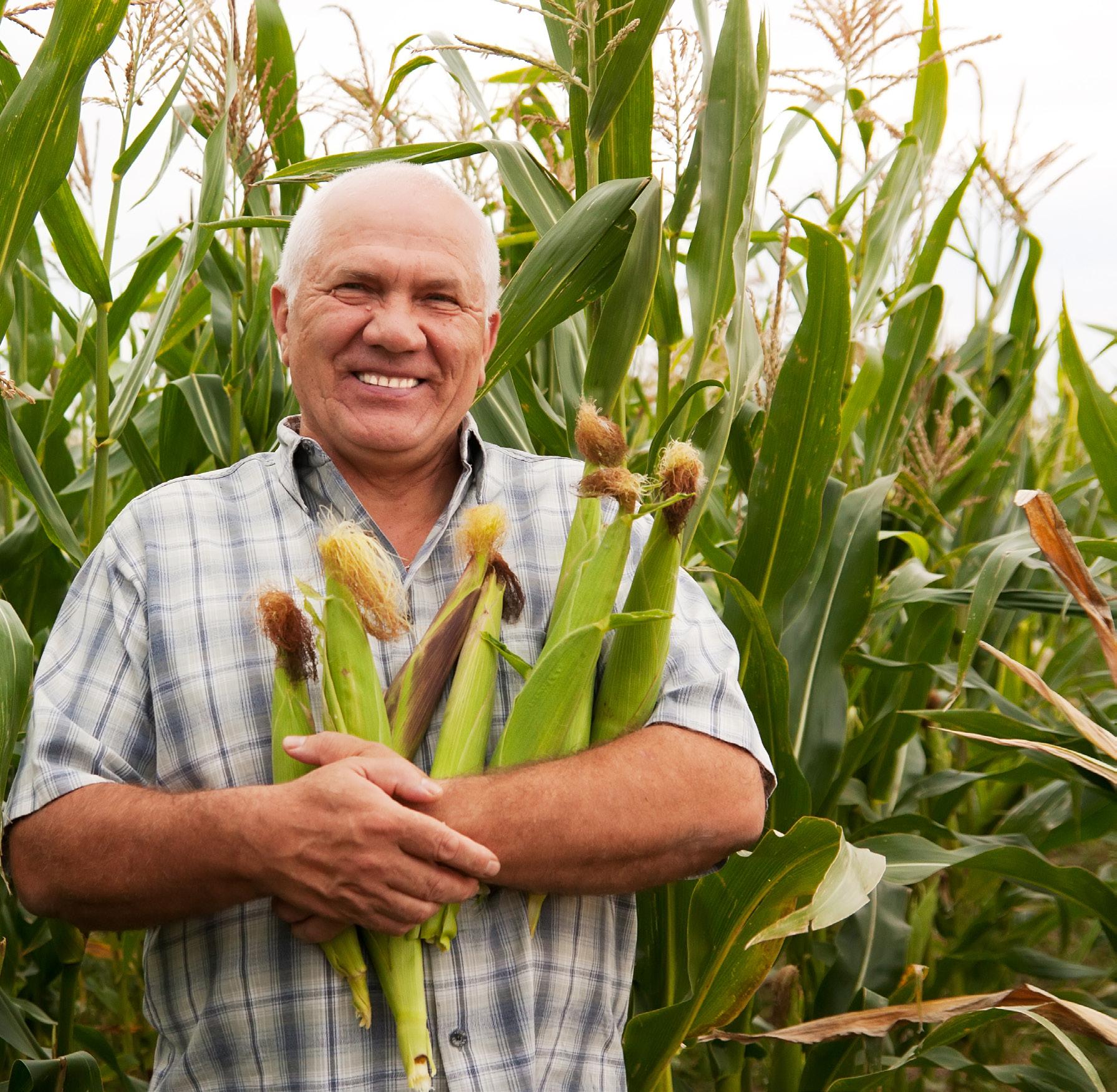

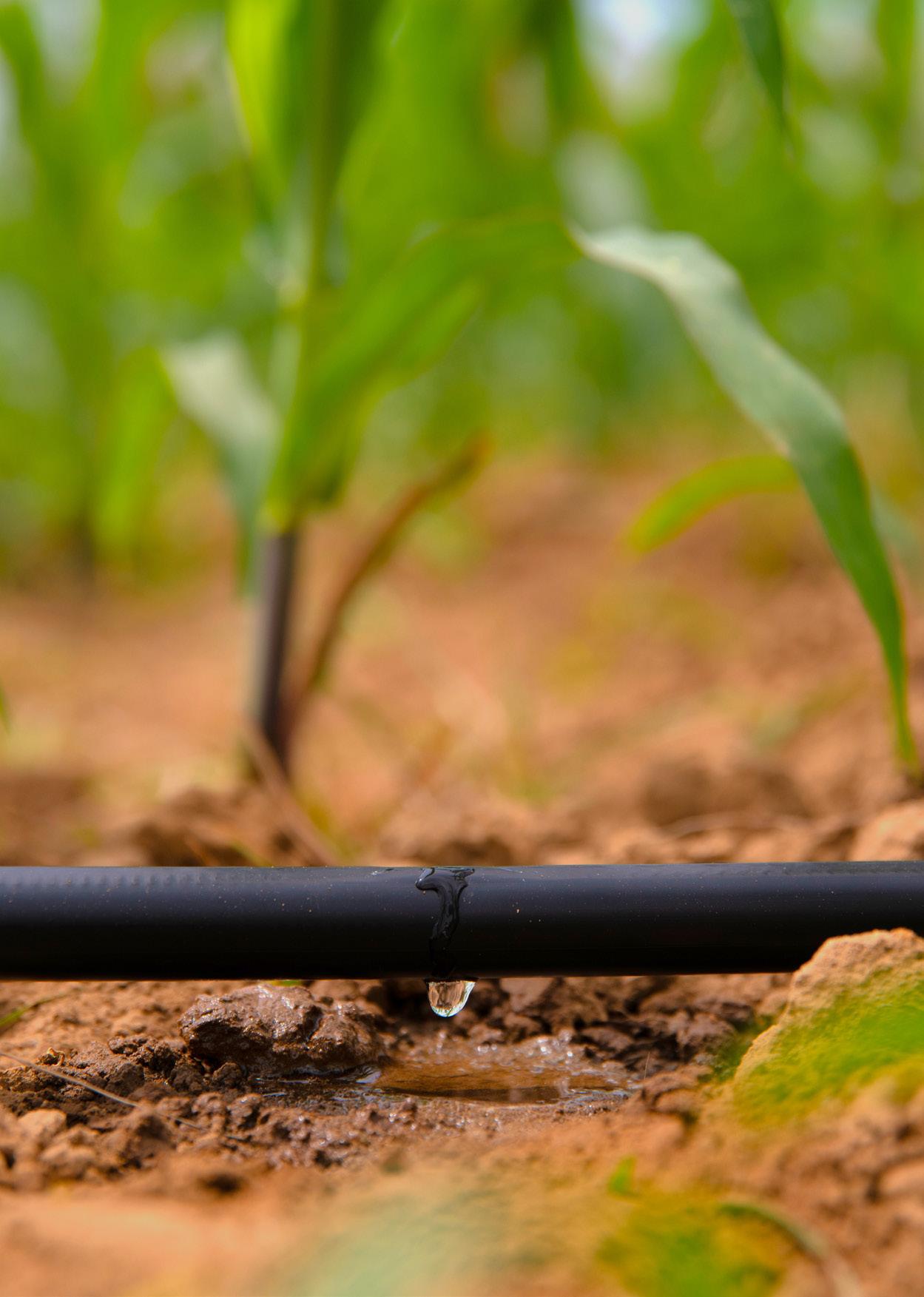

Finding the sweet spot
A recent study looked at how regulated deficit irrigation (RDI) can boost sugar levels in citrus for better flavour without hurting yields.
It found that March and April are the best months to apply RDI to balance sweetness with minimal fruit size loss.
Cutting irrigation by 50 per cent for eight weeks saved 0.77 ML/ha without harming tree health.
Troyer citrange rootstock saw greater size reductions than Poncirus trifoliata under RDI.
Afourer mandarins handled RDI well, but more research is needed for a bigger sugar boost.
Future trials will refine timing, explore clay soils, and test advanced imaging tech for monitoring.
Australian citrus growers need to produce fruit that meets consumer preferences while managing water efficiently. With Asian markets accounting for most of Australia’s citrus exports and favouring sweeter fruit, improving sugar content without reducing yield is a key challenge.
A recent Hort Innovation–funded research project, conducted by AgEcon, explored whether regulated deficit irrigation (RDI) could be used to enhance citrus sweetness while maintaining fruit size and tree health. RDI is not a new concept – it has been studied since the 1970s in crops like grapes and stone fruit – but advances in irrigation technology, soil moisture sensors, and stress monitoring tools have made it easier to apply with precision. By deliberately reducing water supply at key growth stages, growers can influence sugar accumulation in fruit while maintaining overall productivity.
The four-year study, carried out at the Dareton Primary Industries Institute near the Sunraysia district, tested this approach
on three navel orange varieties – M7, Washington Navel, and Lane Late – grafted onto two rootstocks, Poncirus trifoliata and Troyer citrange. The goal was to refine RDI timing and intensity to improve fruit quality while minimising negative impacts on fruit size.
The study found that applying RDI in March or April increased sugar levels by 1–1.5 °Brix, a measure of sugar concentration in fruit juice that directly influences perceived sweetness. Earlier applications, in February, resulted in even higher sugar levels but also led to greater reductions in fruit size. On average, for every 1 °Brix increase, the proportion of large fruit (81–87 mm) decreased by 10 per cent. The effect was more pronounced in trees grafted onto Troyer citrange compared with those on Poncirus trifoliata, which were less sensitive to early water reductions.
To strike the right balance between sweetness and fruit size, the researchers
found that applying RDI in the first week of April worked best for Washington and Lane Late navels. This timing enhanced sugar content while limiting size loss, making it a practical option for commercial growers.
The RDI strategy involved an initial twoweek drying period until tree water stress reached 8–10 bar stem water potential, as measured by pressure chambers, and tensiometer readings exceeded -60 kPa at 30 cm soil depth. Irrigation was then reduced to 50 per cent for eight weeks before being restored to full capacity. This method saved 0.77 ML/ha over the RDI period without compromising tree health, making it a viable option for growers looking to improve water efficiency.
Additional trials on Afourer mandarins showed that RDI could increase sugar levels by 1 °Brix without noticeable effects on fruit size, suggesting it could be a promising
strategy for other citrus varieties. However, further research is needed to determine whether a 2 °Brix increase is achievable without affecting fruit quality.
The study also highlighted the influence of seasonal conditions. In wetter years, particularly in the Riverina, rainfall reduced tree stress, limiting RDI’s effectiveness. Future trials will explore RDI applications in clay soils, such as those at Curlwaa, NSW, to assess whether different soil types affect outcomes.
The research team also tested dronemounted thermal and multispectral cameras to detect canopy temperature differences between RDI treatments. However, temperature variations were minimal – less than 1°C – suggesting that more advanced thermal imaging technology may be needed to monitor tree stress effectively.
The final report for this project outlines a series of recommendations for citrus
growers that are intended as general guidelines developed from the four seasons of regulated deficit irrigation trial results on navel oranges.
It is suggested that growers test regulated deficit irrigation on a small scale of approximately 2–5 rows, including a control row, before it is extended to a full block of trees. The responses might vary due to different soil types, rootstocks, tree health, crop management practices and climatic conditions.
Information. You can read the full report Improving citrus quality with regulated deficit irrigation (CT17000) here
This project has been funded by Hort Innovation, using the citrus research and development levy and contributions from the Australian Government. Hort Innovation is the grower-owned, not-for-profit research and development corporation for Australian horticulture.
You can count on our expert and committed team specialising in irrigation. We have the ability to source unique and specific industry products.

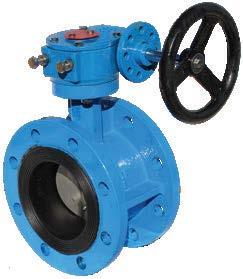
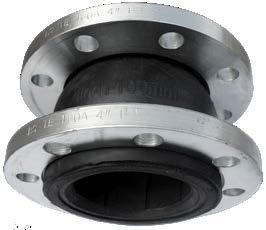
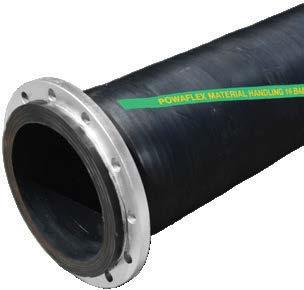
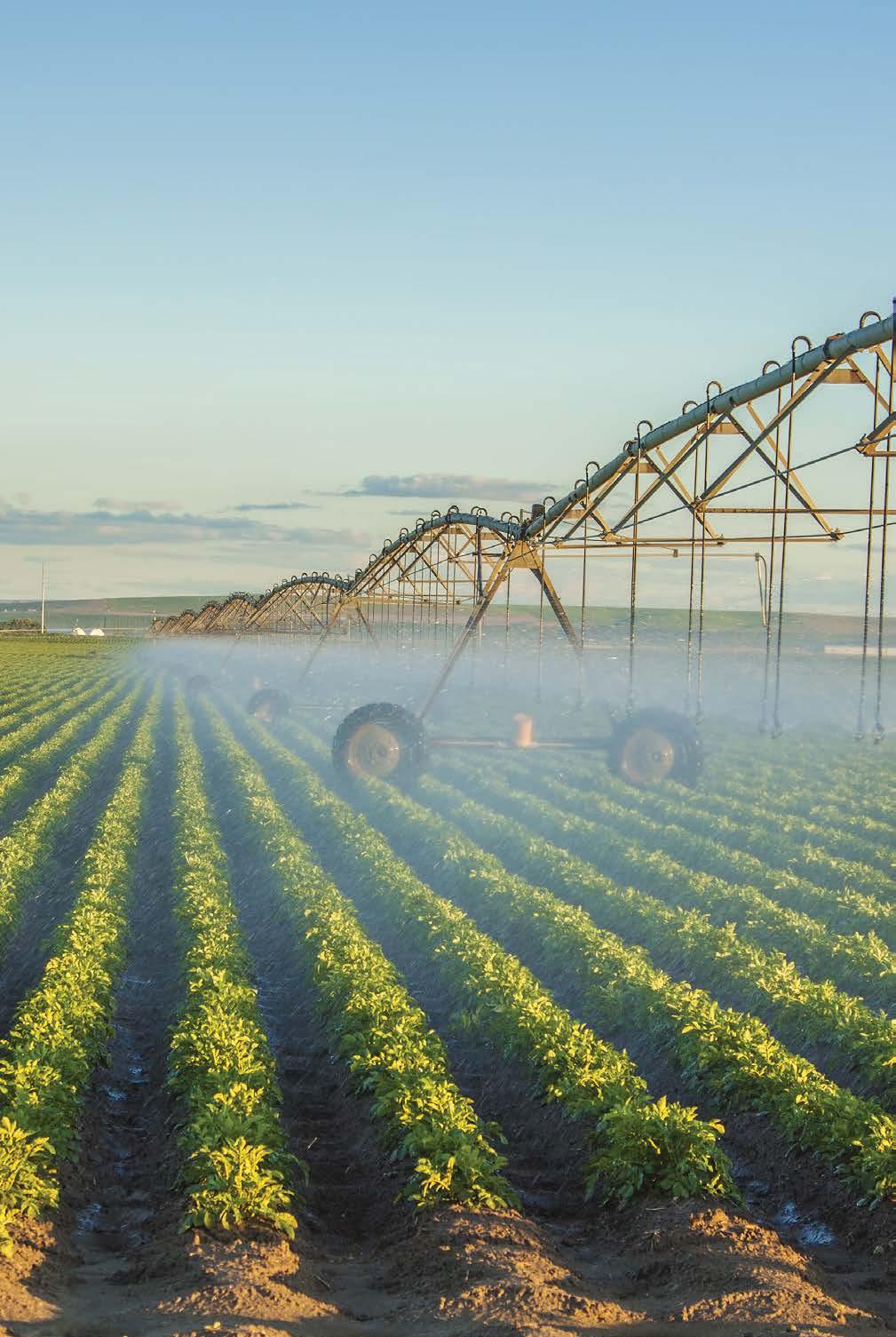






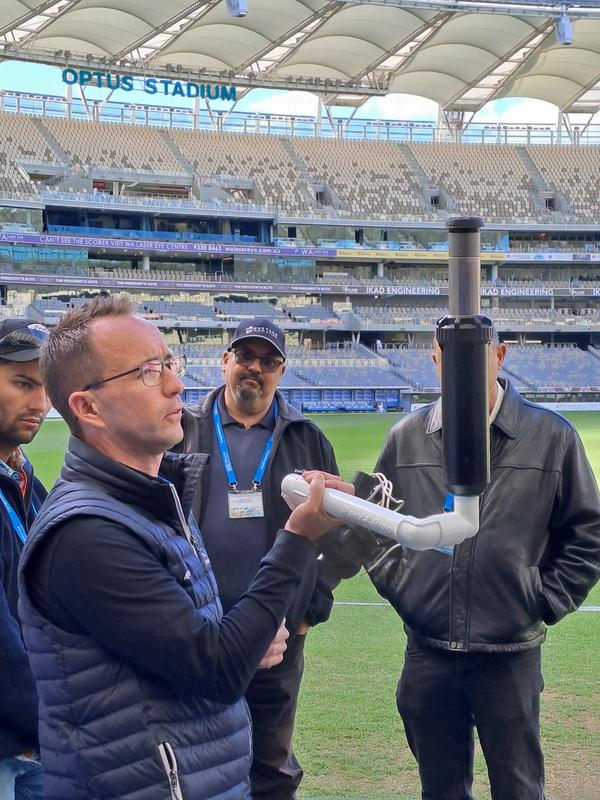

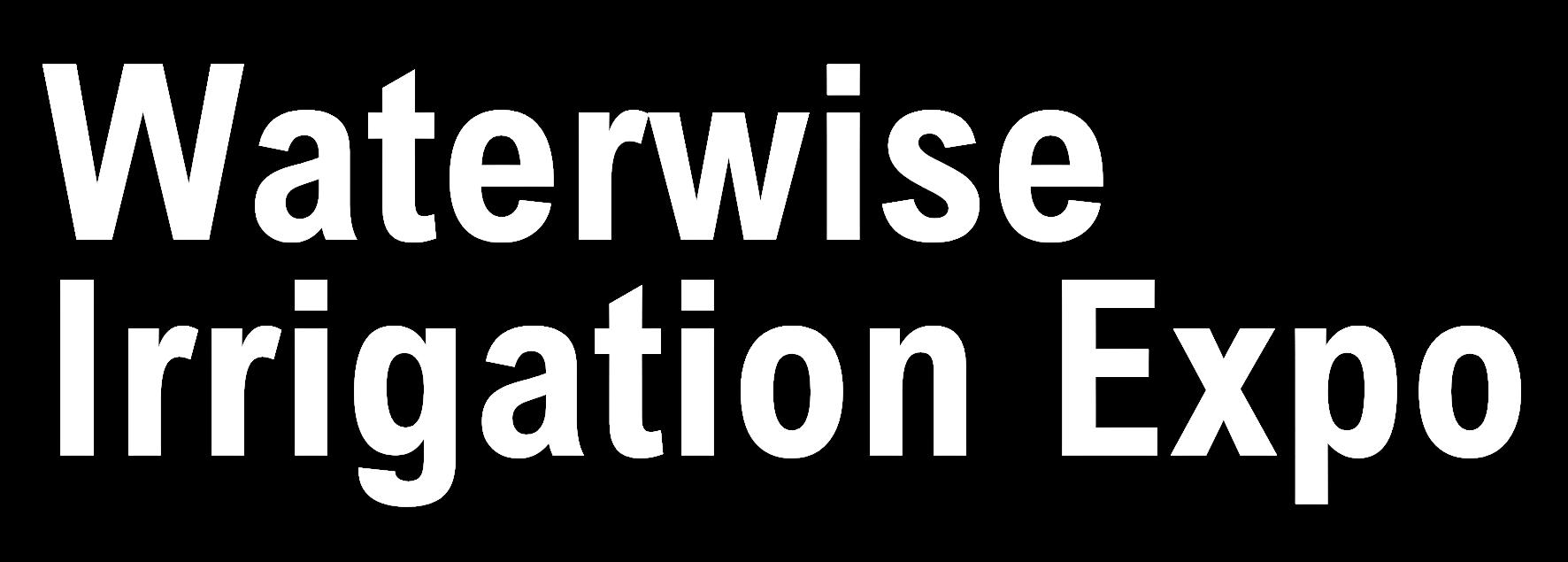
As the ultimate gathering for Western Australia’s urban landscape industry, the 2025 Waterwise Irrigation Expo serves as a vital platform for industry leaders, innovators, and stakeholders to connect, share insights, and explore the latest technologies that drive efficient and sustainable water solutions Only one exhibition booth and two exclusive sponsorship opportunities remain! Plus, the event program is launching soon, with delegate registrations opening in early April! Contact rebecca.new@irrigation.org.au for







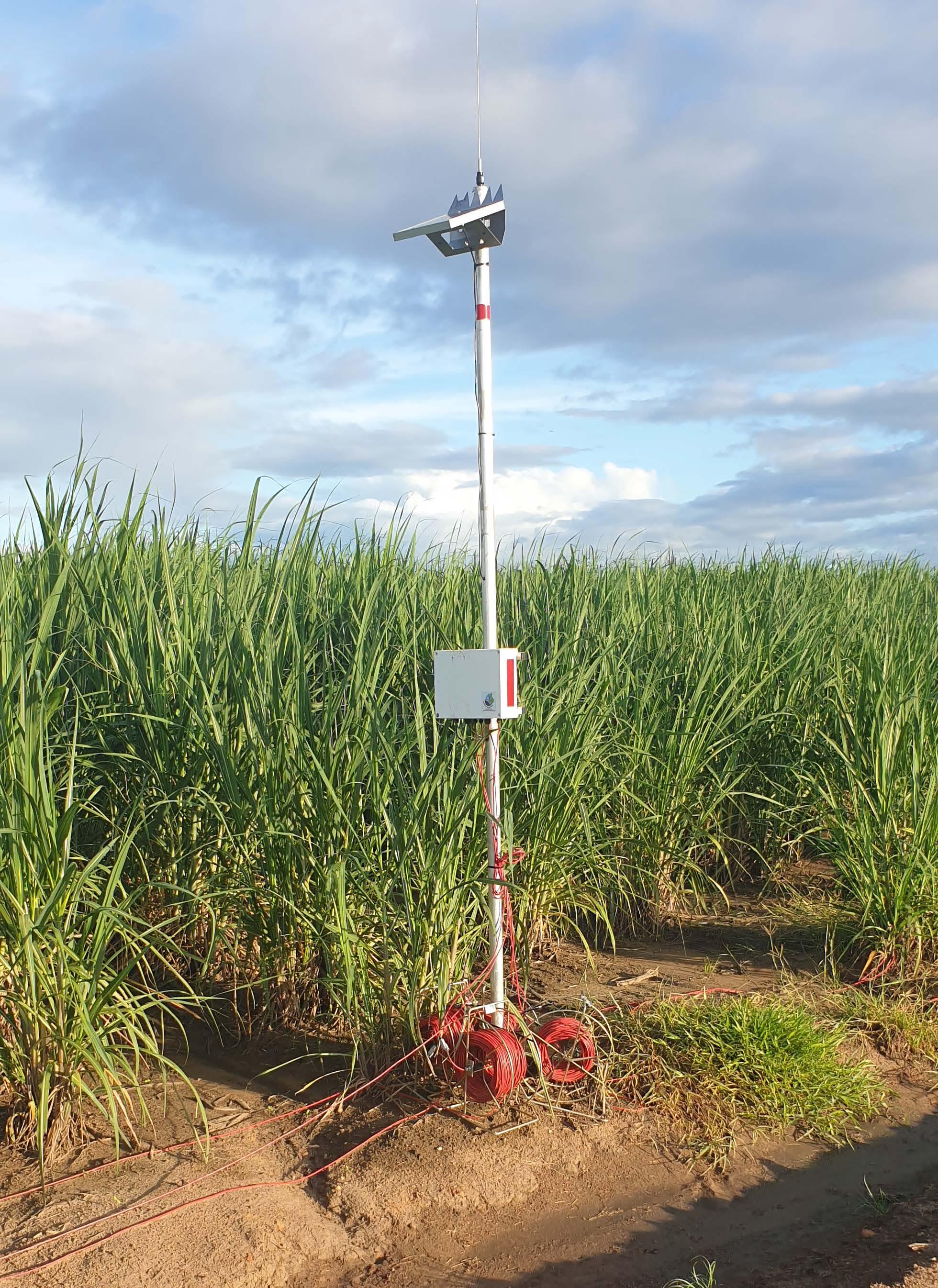
Aglantis’ AgTech Officer Barry Cross providing Ayr sugarcane farmer Andrew Castelanelli guidance on how to use Aglantis’ Smart Irrigation system

Farmers have long relied on fixed irrigation schedules, leading to water waste, higher costs, and fertiliser runoff.
Smart-farming company Aglantis, and La Trobe University have been working together to develop a smart irrigation system that adapts to real-time conditions, cutting costs and improving sustainability.
Installed on an 80 ha sugarcane farm, it has saved veteran farmer Mark Castelanelli 15,000 km of travel per year.
Unlike other smart systems, this one is purpose-built for the sugarcane industry, reducing labour costs and increasing efficiency.
IoT sensors feed data into a digital twin, which automates irrigation based on soil moisture, temperature, and sunlight.
Future upgrades will add full automation, predictive maintenance, and intelligent sequencing to optimise water use further.
BY GEMMA NARDONE

For decades, farmers have relied on fixed irrigation schedules –watering crops based on set times rather than real-time conditions. This often leads to wasted water, higher costs, and excess fertiliser running off into waterways, harming ecosystems like the Great Barrier Reef. But now technology is allowing irrigation systems to ‘think’ for themselves, responding dynamically to soil conditions and weather, and reducing risk.
That’s the idea behind a smart irrigation system developed by Aglantis in partnership with La Trobe University’s Cisco Centre for Artificial Intelligence and Internet of Things, directed by Cisco Research Chair, Professor Wei Xiang. Originally designed to reduce fertiliser runoff into the reef, the system has evolved into a cost-effective irrigation solution that helps farmers optimise water use, cut costs and improve sustainability.
Installed on an 80 ha sugarcane farm in Townsville, the system has been a game-changer for veteran farmer Mark Castelanelli, who used to drive 15,000 km a year to manage irrigation.
Mark said that while other smart systems had been on the market for a few years, this was the first that had been purpose-built for the sugarcane industry. He has found that the system saves labour costs, increases efficiency and leaves time to focus on other
things. The current set-up allows Mark to schedule irrigation for a full calendar year, and to adjust as he goes. Aglantis Managing Director, Luke Malan, said that the aim is to achieve full automation with the technology.
“The system turns on a pump, opens a valve, and combines that with sensor data to automate the process, saving water and electricity.”
Traditional irrigation follows fixed schedules, but this one responds to actual conditions in the field, using IoT sensors to measure soil moisture, temperature, and sunlight in real time. This data is fed into a digital twin – a virtual model of the farm’s irrigation system that mirrors real-world conditions. The digital twin continuously analyses the data, deciding when and how much to water, reducing waste and ensuring crops get exactly what they need.
Malan explains, “The system turns on a pump, opens a valve, and combines that with sensor data to automate the process, saving
water and electricity.” The system is compact and integrates a solar panel, sensors, an antenna, actuators, and a battery on a retractable pole.
While the system's validation capabilities were expected to be a key selling point, Malan has been surprised by farmers' positive response to the aerial view interface and its ease of use. Another standout feature, he said, is how the system reduces the need for soil probes. With the Aglantis setup, probes measure moisture levels based on soil type, rather than placing them in every block across the farm.
The first version of the system, developed in La Trobe’s Cisco Centre for AI and IoT and launched in December 2024, allows farmers to remotely control irrigation. The next phase will introduce full automation, integrating more data to prioritise irrigation sequences dynamically.
According to Professor Wei Xiang, further development will add features to improve productivity and crop yields.
Ultimately, the system could include intelligent sequencing to determine the perfect order of irrigation across different farm sections, predictive maintenance and continuous learning from historical data, seasonal patterns and crop responses.
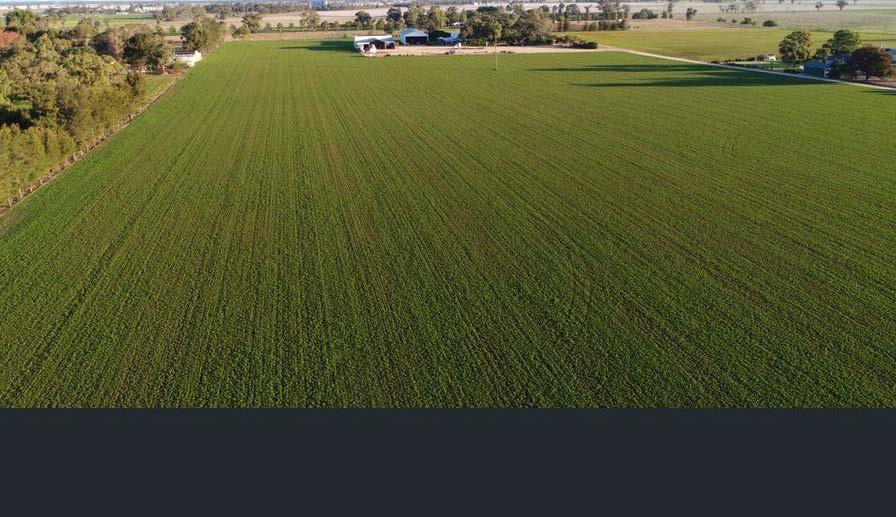
Rob and Susannah Tuck operate ten farms in the Macquarie Valley in a 40 km radius near Narromine. They have a diversified mix of 5000 ha of dryland rotational cropping and between 1200 to 2000 ha cotton under irrigation, and a livestock enterprise.
Embracing technology
The Tucks are familiar with the advantages of technology and have been early adopters. They’ve been using GPS tracking in the controlled traffic management of vehicles in cropping areas, yield mapping as part of precision agronomy applications, monitoring sensors, and internet connectivity for some time.
Managing irrigation with technology
Managing irrigation involves constantly checking pumps. The sensors installed for this monitoring have provided great advantages. Previously, someone needed to drive to check pumps during the night and first thing in the morning to ensure they were operating correctly. Now, with the new system, staff can monitor the data remotely and travel only if there’s an issue, such as a pump shutting down. This improvement boosts safety, helps staff detect problems faster, and saves fuel and wear on vehicles.
However, although the pumps are constantly monitored, they are not controlled remotely. The sensors allow staff to view readings on a device, but they still need to do a regular physical check to verify the data. The sensors are also set up to send an alert signal to a mobile phone – for example, in the case of malfunction. The alert levels are adjustable for urgency.
system and sensor technology
The irrigation system is fully closed with a tail-return system designed to capture the water and prevent runoff. The sensors
monitor the system’s effectiveness, transmitting data to a dashboard to show if water levels are backing up or dropping. This allows the operator to adjust the pumps to control water flow at specific locations.
In addition to the sensors, Rob has installed cameras that provide an overview of pumps, drains, channel heights, and sheds. The Tucks have a mix of connectivity with both Wi-Fi and 4G. These cameras do not replace the sensor data but offer a quick overview of the situation, acting as a backup to the sensors. Rob notes that cameras can also be used at night, offering additional peace of mind while systems are running.
The Tucks have converted from a large floodirrigated area (manual with siphons) to an overhead pressurised system. This transition came with two significant advantages:
1. A consistent saving in the volume of water used, along with telemetry connections to monitor the performance of irrigation machines, allowing the operator to quickly address issues.
2. Telemetry also allows for better recordkeeping of the volume of water applied during the growing season.
Centralised data for better decision-making
All data, including that from weather stations and rain gauges, is sent to a dashboard on the office computer, where the platform converges it. This allows data from different providers to appear on the same screen for easy comparison.
The Tucks’ experience with technology
The Tucks have found that this technology allows them to:
• monitor remote devices from the phone, office, or kitchen table
• spend more quality time with family measure resource use for economic advantages to the business
• make more informed business decisions based on more data.
Acknowledgment. This article is an edited version of a case study published on the NSW Department of Primary Industries and Regional Development website, under a CC BY 4.0 Licence. You can read the original version here

Click here to see Rob talking about how technology has changed the way he manages irrigation.

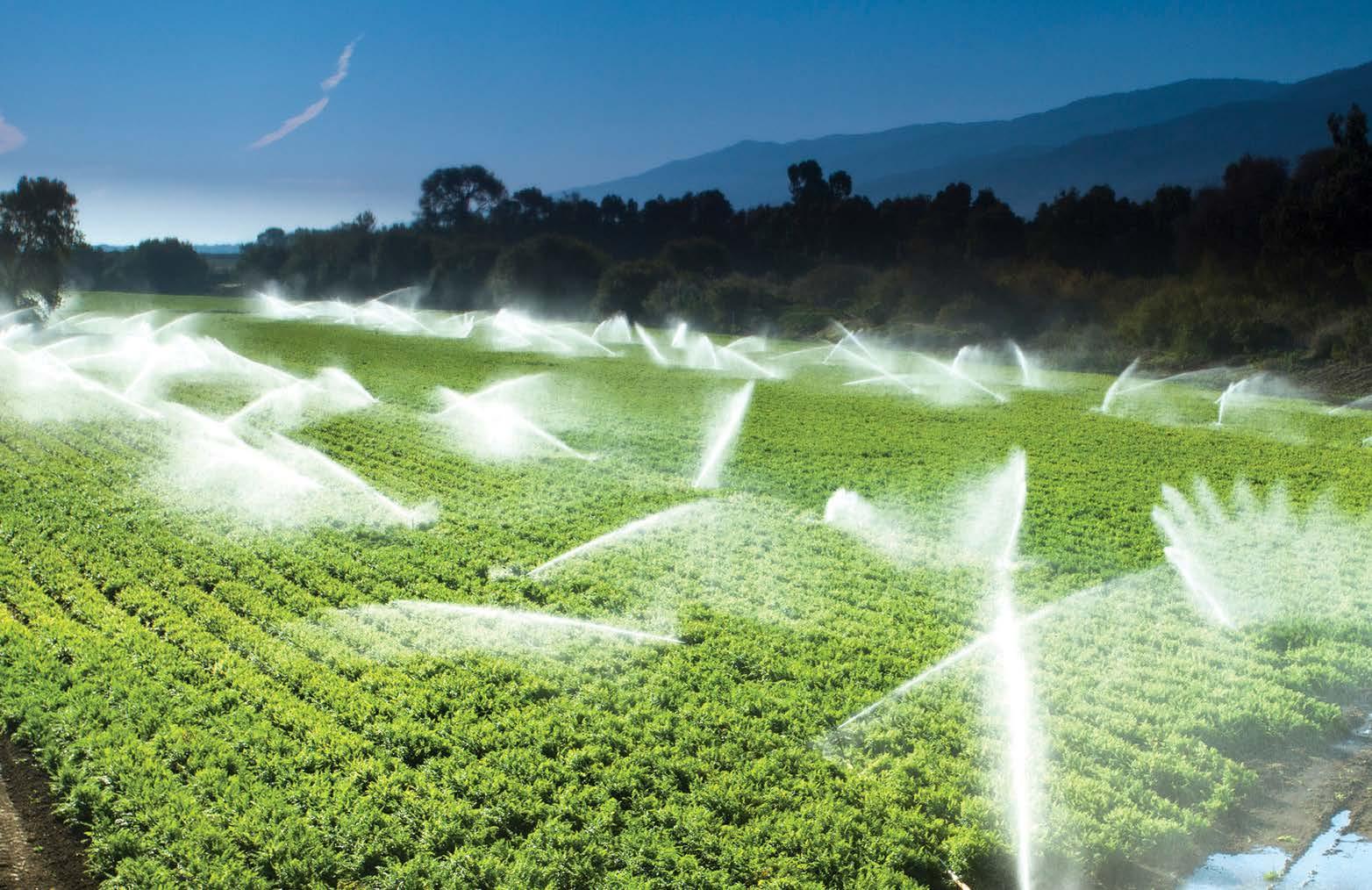
With world class european design and manufacture, Lowara e-SV multi-stage pumps are at the heart of the system.
Hydrovar X brings the best energy efficiency performances with its frequency converter coupled with an integrated IE5 assisted synchronous motor.
It’s the right combination of motors, variable speed drives, and pumps—meeting IES2 standards and delivering superior energy efficiency, maximum savings, and a rapid return on investment.
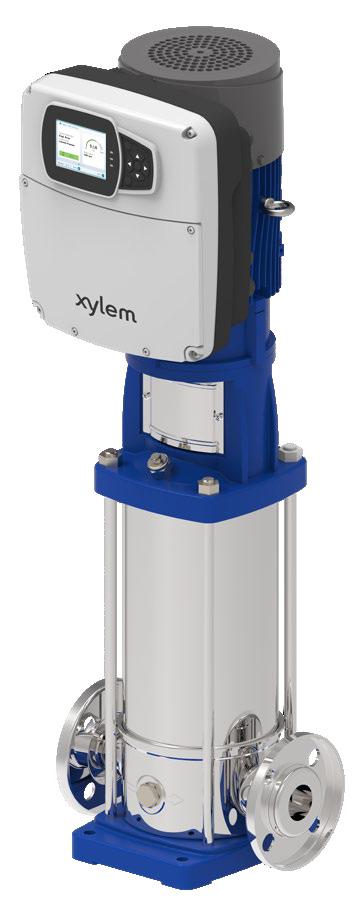
Scan the QR code below to see how Australia’s first Hydrovar X installation reduced upfront costs and ongoing expenses. Optimise irrigation with intelligent pumping solutions

Professor

On farm trials show that VARIwise technology can save 10 per cent of water and increase productivity by 5 per cent in cotton and pasture farming.
The University of Southern Queensland (UniSQ) has received $1.5 million from the Australian Government to develop VARIwise commercially.
Associate Professor Alison McCarthy (recipient of the 2021 International Commission on Irrigation and Drainage (ICID) Irrigation Young Professionals WatSave Award) leads the research.
Initially, overhead and surface irrigation systems are expected to benefit the most and will be the focus of the new project.
Compatible with any irrigation system, VARIwise produces a suggested irrigation volume, day, and location that is universal across all systems.
The team will address barriers to widespread adoption through a lack of knowledgeable local consultants, by actively engaging tech-savvy irrigation consultants to work closely with growers and stakeholders at trial sites in Queensland, New South Wales, and Tasmania.
The next step for VARIwise is moving from research trials to whole-field evaluations while expanding its testing across more regions.
VARIwise is expected to be commercially available mid-2028.
BY GEMMA NARDONE
Australia’s cotton and dairy industries will benefit from new technology that improves water efficiency and helps them adapt to climate change.
The University of Southern Queensland (UniSQ) has received $1.5 million from the Australian Government, in a project led and co-funded by Cotton Research and Development Corporation, to translate irrigation technology research into a commercial product. The technology, called VARIwise, is a precision irrigation system designed to improve how water is used on farms.
Associate Professor Alison McCarthy (recipient of the 2021 International Commission on Irrigation and Drainage (ICID) Irrigation Young Professionals WatSave Award) leads the research, noting that cotton industry water efficiency has increased by just 0.3 per cent annually. “VARIwise represents a step change in water use efficiency gains. The system ensures water is applied only when and where it is required, with the correct depth,” Associate Professor McCarthy said. This means that VARIwise could deliver a much larger and
more immediate improvement in irrigation efficiency, helping farmers better adapt to climate variability and production challenges.
Overview of the VARIwise design
VARIwise combines multiple data sources, such as soil, plant, and weather conditions, to determine the exact irrigation needs of a farm. Tests have shown it can save 10 per cent of water and increase productivity by 5 per cent in cotton and pasture farming.
In previous research, the team collaborated with cotton growers in Queensland and New South Wales and dairy farmers in Tasmania to develop and validate VARIwise. They conducted plot trials on commercial farms, comparing irrigation strategies – one that fills the soil-water deficit and another using optimisation algorithms, like VARIwise, to maximise water-use efficiency based on predicted yield. “This allowed us to verify potential water-use efficiency gains, incorporate grower feedback, and integrate commercially available irrigation control hardware, such as variable-rate irrigation and infield sensors,” said Associate Professor McCarthy.
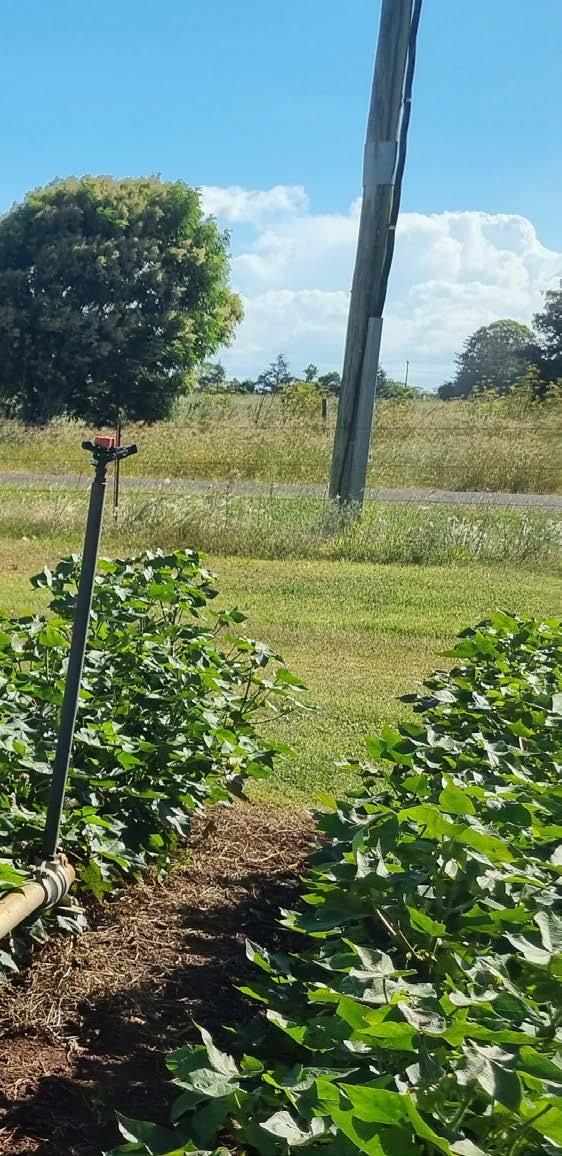

Initially, overhead and surface irrigation systems are expected to benefit the most and will be the focus of the new project. However, Associate Professor McCarthy said that the optimisation process in VARIwise is compatible with any irrigation system, producing a suggested irrigation volume, day, and location that is universal across all systems.
A key barrier to widespread adoption of advanced irrigation control technology is the availability of knowledgeable local consultants to support growers on-farm. The team will address this by actively engaging tech-savvy irrigation
consultants who will work closely with growers and stakeholders at trial sites in Queensland, New South Wales, and Tasmania. The outcomes will be shared with industry stakeholders, including growers, consultants, and irrigation technology providers – through extension activities.
The next step for VARIwise is moving from research trials to whole-field evaluations while expanding its testing across more regions. “This will lead to full-scale commercial deployment, and we expect VARIwise to be available in a commercialready package by project completion in mid2028,” said Associate Professor McCarthy.
Sulzer provides high-performance pumping solutions designed to meet the demands of Australia’s water supply systems. Our vertical and horizontal pumps are built for both gravity and pressurised irrigation, delivering exceptional efficiency, reliability, and durability in even the most challenging conditions. With a strong reputation for innovation and energy-efficient technology, we ensure long-term performance that supports sustainable irrigation practices.
For expert solutions tailored to your needs, visit sulzer.com/irrigation or contact our local team at info.water.au@sulzer.com

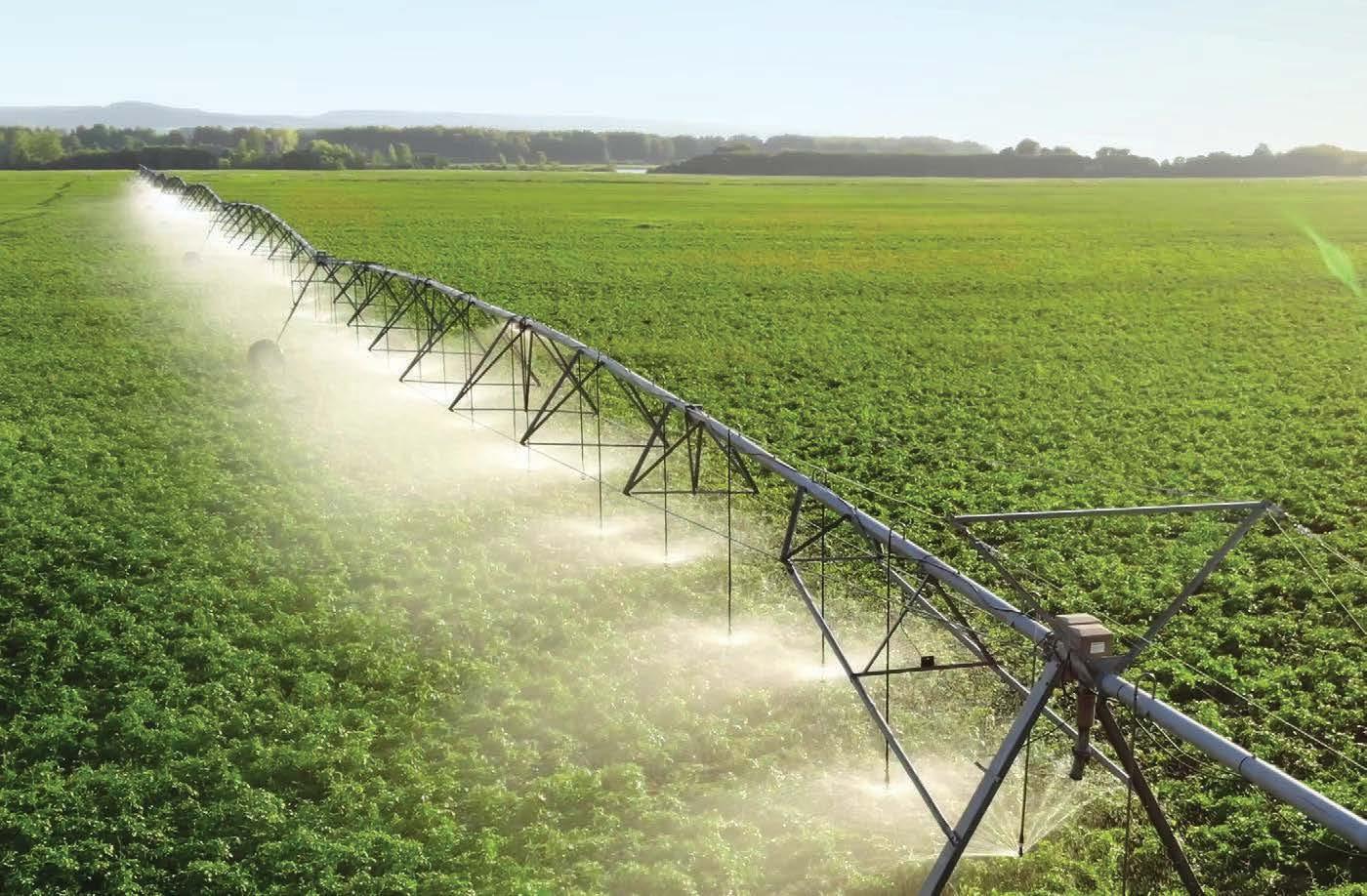
In 2023 the planned expansion of the Wyangala Dam was scrapped because it wasn’t economically viable. Photo: Ben Jayes / Shutterstock.

As projects such as the proposed Wyangala Dam expansion demonstrate, Australia can no longer afford to gamble its water future on outdated, costly and environmentally destructive solutions. It’s time to end the wasteful spending.
In Australia and worldwide, big dam cost overruns can be up to 825 per cent. The average overrun is 120 per cent. Public costs for private gains are a major concern.
The fixation on building and expanding dams means innovative alternatives are often ignored. These other options include recycling water, managing demand and carefully recharging aquifers (using aquifers as underground dams).
The National Water Grid Fund exemplifies the misguided “build more dams” mindset. Its portfolio of 61 large water projects has a total capital cost estimate of up to $10 billion. Only 23 of these projects have publicly available business cases. More than $1.7 billion in committed funding is shrouded in secrecy.
To avoid repeating costly mistakes and mismanaging taxpayers’ money, we need a smarter approach to major water projects. This includes independent assessments and greater transparency, with business cases made public and decision-making open to scrutiny.
Infrastructure planning must account for long-term climate impacts on water availability. Planning for climate change is vital

JOHN KANDULU, RESEARCH FELLOW, COLLEGE OF BUSINESS, GOVERNMENT AND LAW, FLINDERS UNIVERSITY RICHARD KINGSFORD, PROFESSOR, SCHOOL OF BIOLOGICAL, EARTH AND ENVIRONMENTAL SCIENCES, UNSW SYDNEY SARAH ANN WHEELER, MATTHEW FLINDERS PROFESSOR IN WATER ECONOMICS, FLINDERS UNIVERSITY.
Climate change and biodiversity loss are mounting threats to Australia’s water security. So we often hear calls for more dams. But is that the answer? Our recent research reveals large dam projects are costly gambles with public money. They often fail to deliver promised economic benefits. They also have major environmental, financial and social impacts.
In New South Wales, some members of the Lower Lachlan River community were concerned about plans to expand Wyangala Dam. They first asked us in 2020 to investigate its full costs and benefits, with findings presented at a local workshop in 2022.
The first WaterNSW estimate of capital and operating costs was A$620 million in 2018. Within a few years, it had soared to as much as $2.1 billion. In 2023, the project was scrapped because it wasn’t economically viable.
Similar concerns surround other projects overseas and in Australia, including Hells Gate Dam in Queensland, and Dungowan Dam and Snowy Hydro 2.0 in NSW.
To avoid repeating costly mistakes and mismanaging taxpayers’ money, we need a smarter approach to major water projects. This includes independent assessments and greater transparency, with business cases made public and decision-making open to scrutiny. And planning for climate change must become a priority.
Inadequate economic assessments of big dam projects are a global problem. The Grand Ethiopian Renaissance Dam and India’s Subansiri Lower Hydroelectric Project promised big, but had rising price tags and devastating impacts on ecosystems.
In Australia and worldwide, big dam cost overruns can be up to 825 per cent. The average overrun is 120 per cent. This casts serious doubt on such projects’ financial and social viability. Public costs for private gains are a major concern.
Our study reviewed the original business case for the Wyangala Dam expansion. The original study had concluded there would be net social benefits and gave the project the green light.
Our review found the business case was seriously flawed. It overestimated benefits and grossly underestimated physical capital and environmental costs. Estimated building costs blew out by 239 per cent. If the project had gone ahead, the costs would undoubtedly have increased.
On top of this, assessments of impacts on rivers and wetlands were poor and superficial. They greatly undervalued the environmental effects of expanding the dam, particularly on downstream wetlands.
On the other side of the equation, its benefits were overblown, particularly for water security and agriculture.
Local voices believed many of their concerns had been ignored. There were deep concerns that flood-dependent farmers downstream might lose some of their livelihoods. Indigenous communities were worried about their cultural sites being destroyed.
Our analysis provided a more rigorous assessment of benefits and costs of the Wyangala Dam expansion.
We found total project costs were underestimated by at least 116 per cent. The benefits were inflated by 56 per cent. This meant the true impacts on the environment, agriculture and local communities were misrepresented.

Rethinking Australia’s water future
Our analysis provides a salutary lesson on why we need to rethink water security. Instead of sinking billions into dams, we should find smart and sustainable ways to manage our water.
The fixation on building and expanding dams means innovative alternatives are often ignored. These other options include recycling water, managing demand and carefully recharging aquifers (using aquifers as underground dams).
The National Water Grid Fund exemplifies the misguided “build more dams” mindset. Its portfolio of 61 large water projects has a total capital cost estimate of up to $10 billion. Despite this massive investment, only 23 of these projects have publicly available business cases. It leaves more than $1.7 billion in committed funding shrouded in secrecy.
This lack of transparency is alarming, given the history of cost overruns and inadequate assessment of environmental damage. It points to the urgent need to reassess our approach to water security. The public has a right to know that their governments are spending wisely.
To avoid repeating costly mistakes and mismanaging taxpayers’ money, we need a smarter approach. Independent business cases should be mandated for all major water projects.
In Australia and worldwide, big dam cost overruns can be up to 825 per cent. The average overrun is 120 per cent.
We also need a strong public sector capable of transparent evaluation. Promised new National Environmental Standards as part of reforms to environmental protection laws are likely to require rigorous scrutiny too. We must embrace transparency by opening decision-making to public scrutiny and diverse perspectives, including local voices and Indigenous stakeholders, from the start.
Finally, infrastructure planning must account for long-term climate impacts on water availability. Planning for climate change is vital.
As projects such as the proposed Wyangala Dam expansion demonstrate, Australia can no longer afford to gamble its water future on outdated, costly and environmentally destructive solutions. It’s time to end the wasteful spending.
Instead, we need to channel our efforts into truly effective, sustainable and transparent water management. Strategies must give priority to community needs, First Nations’ water rights, environmental protection and longterm climate resilience.
Acknowledgment. This article was originally published on The Conversation website and is reprinted here under a CC BY-ND 4.0 licence

At Irrigation Australia, we are deeply committed to building a sustainable Australian irrigation industry through applied research, high-quality skills and careers development, and balanced policy advice.
We would like to extend our sincere appreciation to the following leading irrigation companies which sponsor our 'Irrigation Futures' initiatives. Their invaluable support, which often includes financial contributions and the provision of modern equipment and facilities for our students, plays a vital role in shaping the future of our industry

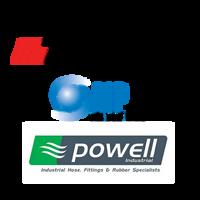




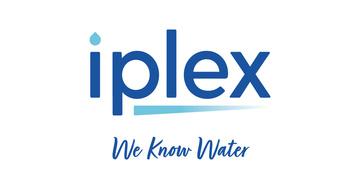













Irrigation Futures provides a model which builds real opportunities for engagement and offers a unique chance to shape a sustainable future for irrigation. If you’re interested in supporting our initiative, please reach out for more information
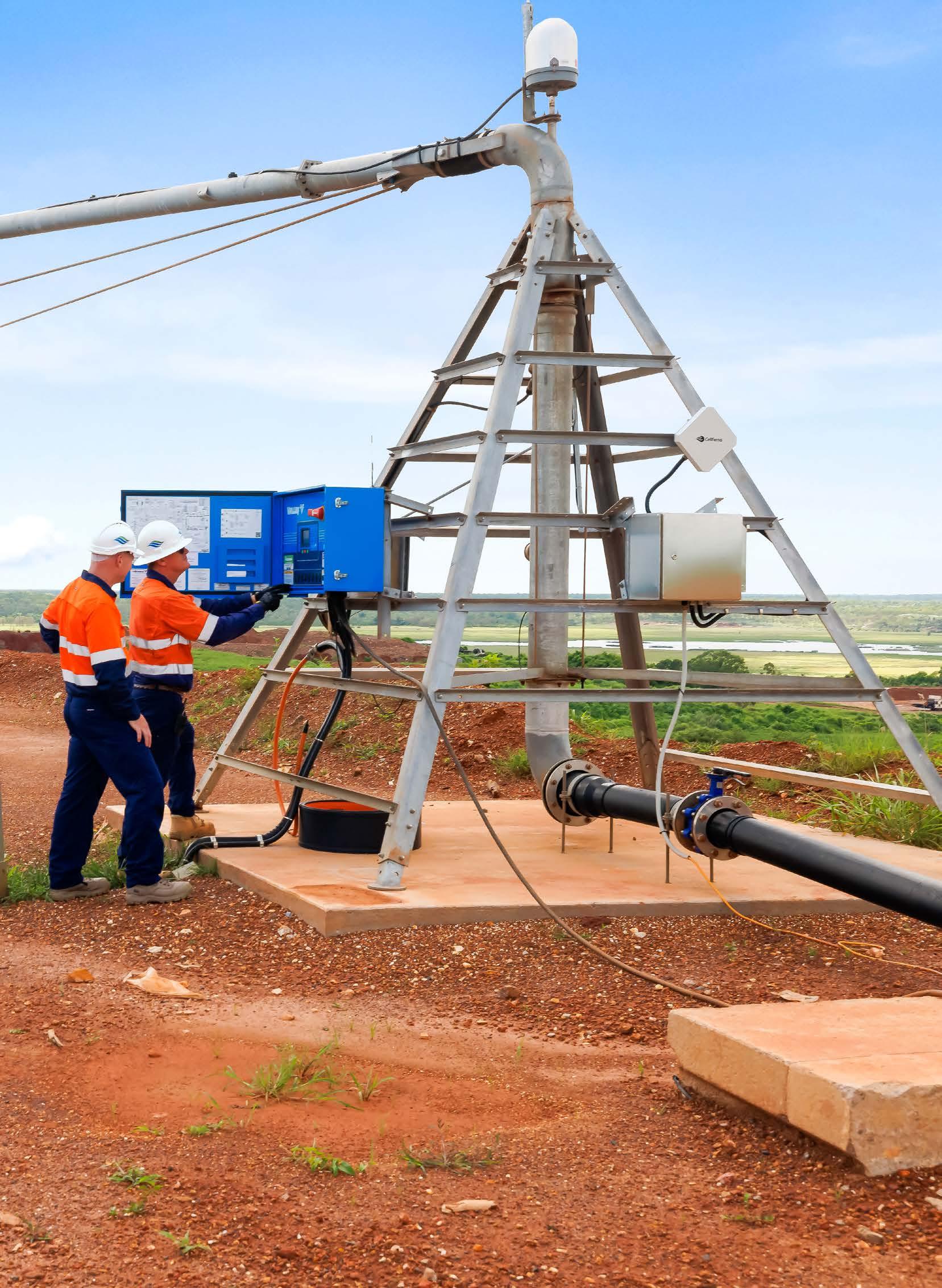
Joey Frawley and Linc Symons from Water & Carbon at Shoal Bay Waste Management Facility, where a custom-designed centre pivot irrigation system helps manage treated leachate in a sustainable, closed-loop process. Photo: Charlie Bliss Photography.
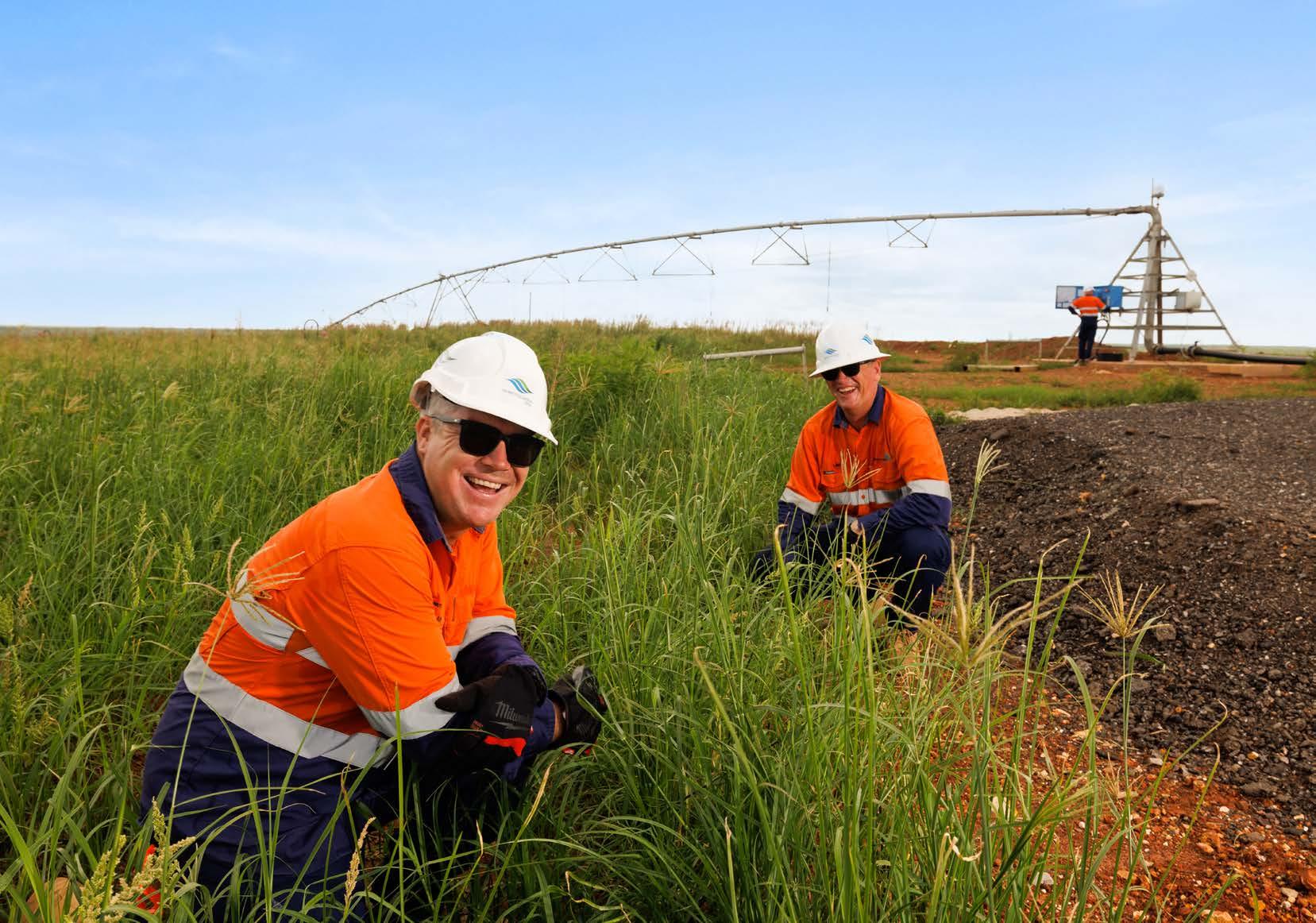
In 2021, Think Water Darwin was engaged to install an irrigation system as part of The Water & Carbon Group’s leachate treatment project at Shoal Bay Waste Management Facility.
This project was unusual because the purpose of irrigation was to manage wastewater rather than support plant growth, with vetiver grass absorbing treated leachate.
Key challenges included steep terrain, leachate contamination, and wind erosion, requiring a customised irrigation solution.
A 176 m centre pivot system with low-mounted sprinklers was installed to ensure even water distribution and minimise losses.
A Valley control system and telemetry automated irrigation, enabled remote operation, and allowed the system to shut down if faults occurred.
All pipes were lined with PVC to resist corrosion, and a Southern Cross Star Pro pump handled high-pressure operation.
The system operates daily in the dry season, working in sync with the treatment plant in a closed-loop wastewater management process.
When we think of irrigation, we usually picture systems designed to deliver water efficiently to support plant growth. But at Darwin’s Shoal Bay Waste Management Facility, irrigation serves a different purpose. Here, the end goal isn’t to grow plants – it’s to manage wastewater, with plants as part of the solution. Vetiver grass, planted atop a capped landfill, acts as a living filter, absorbing treated leachate that would otherwise pose a toxic risk to the environment.
In Darwin’s northern suburb of Karama, the Shoal Bay Waste Management Facility is the central hub for waste and recycling operations, processing over 180,000 t of waste every year in a unique tropical climate.
The facility faced the challenge of managing leachate – wastewater generated within landfill. Leachate contains contaminants, including PFAS (Perfluoroalkyl and Polyfluoroalkyl Substances), toxic ‘forever chemicals’ found in everyday products such as cleaning and personal care products. Darwin’s high rainfall and limited
evaporation exacerbate the problem by allowing leachate to accumulate.
In 2021, Shoal Bay engaged environmental engineering firm The Water & Carbon Group (Water & Carbon) to construct a leachate treatment plant to treat more than 50 ML per year of leachate.
The first stage of the treatment process is the extraction of PFAS using Water & Carbon’s patented LEEF System®. This is followed by a biological treatment process, which is an important part of the treatment train dealing with ammonia, nutrients and heavy metals. The final stage involves a surface flow (polishing) wetland before using the treated leachate to irrigate a 6.5 ha site on top of the capped landfill cells, planted with vetiver grass.
Irrigation for a different purpose
Unlike conventional irrigation systems designed primarily to support plant growth, this system was built to manage and dispose of treated wastewater through plant uptake. The vetiver grass acts as a natural filtration and absorption system, removing contaminants while creating a zero-liquid-discharge, closed-loop treatment solution.
“Irrigation is a critical step in the treatment process,” said Jim Hunter, CEO of Water & Carbon. “Without it, there would be no viable way to manage the treated wastewater, as there are no available discharge pathways to the environment.”
Water & Carbon engaged the Think Water Darwin team to design and install the irrigation system for the site.
“This was a fascinating job,” said Adam Stockwell, managing director of Think Water Darwin. “While the irrigation system design itself was fairly standard, the project was anything but. We weren’t just irrigating crops or turf – we were dealing with toxic wastewater on a capped landfill site on steep terrain, which subsides over time. That meant we had to carefully consider how the system would perform over time.”
This specialised purpose required a custom irrigation system capable of delivering water precisely while adapting to the site’s environmental constraints. The system
operates automatically, working in sync with the treatment plant. Irrigation rates are adjusted based on weather conditions, such as rainfall, high winds, or extended dry periods, to optimise water use and prevent over-application.
In the early years of operation, the facility did not harvest the vetiver grass, allowing it to establish and provide ground cover for erosion control. “Now that the grass is well established, we expect to harvest it annually,” Jim said. “We’ll also test the plant tissue to determine whether the harvested material can be used as general mulch.”
“While the irrigation system design itself was fairly standard, the project was anything but. We weren’t just irrigating crops or turf – we were dealing with toxic wastewater on a capped landfill site on steep terrain, which subsides over time. That meant we had to carefully consider how the system would perform over time.”
The irrigation system
Design challenges. The Think Water Darwin team designed and installed an irrigation system to deliver 8 mm a day of treated leachate to the vetiver grass site.
The main design challenges that the team faced were:
• the steep terrain of the site to be irrigated, and its elevation – the water had to be pumped up 40 m from the wetland below
• water quality issues due to leachate contamination
• the effects of wind and erosion on the mounds over time.
Centre pivot. The Think Water Darwin team designed and built a customised irrigation system to pump the leachate to the top of the disposal site and irrigate the vetiver grass with a centre pivot.
Vetiver grass (Chrysopogon zizanioides) is a hardy, deep-rooted, perennial grass native to India but now cultivated worldwide for various uses. It is commonly used for erosion control, soil stabilisation, water conservation, and phytoremediation due to its extensive root system, which can reach depths of up to 3–4 m.

To ensure even water distribution in windy conditions, the team selected a 176 m Pierce CP600 centre pivot fitted with Nelson R3030 sprinklers. These sprinklers, mounted on drop tubes positioned close to the ground, minimise wind drift and evaporative losses. The system also produces larger water droplets, which are less prone to drifting in strong winds, ensuring water reaches the intended area.
A Valley control system was installed, allowing operators to customise irrigation rates for different sections of the site. The system also controls the end gun, enabling targeted irrigation where needed. Telemetry provides additional automation, allowing the system to switch to a potable water source for flushing, detect malfunctions, and shut down when necessary.
To accommodate grass harvesting and extreme weather events, the pivot includes a manual mode, making it easy to move out of the way during maintenance or secure it before a storm.
The system operates every weekday during the dry season, ensuring consistent irrigation of the treatment plant’s output. Operators control the entire system remotely via a mobile app, streamlining management and reducing the need for onsite adjustments.
Pipes and pump. Leachate is highly toxic and corrosive, requiring specialised materials for durability and safety. To prevent corrosion and extend the system’s lifespan, all pipes, including those in the centre pivot, were lined with PVC, while the pump was fitted with silicon seal faces for added protection.
A Southern Cross Star Pro pump (model 80x50-160), powered by a 15 kW WEG motor, was installed to transfer water to the site. It delivers 40 m³ per hour at a head height of 54 metres, with water transported through 160-mm pipes rated for 10-bar (PN10) pressure.
Telemetry was added as a necessary safety measure, allowing the system to shut off the feed pump automatically if a fault occurred. Although not part of the original design, it was essential for handling leachate safely and was integrated with the Valley control system.
This project highlights how irrigation can play a role beyond agriculture and turf – helping to safely dispose of treated
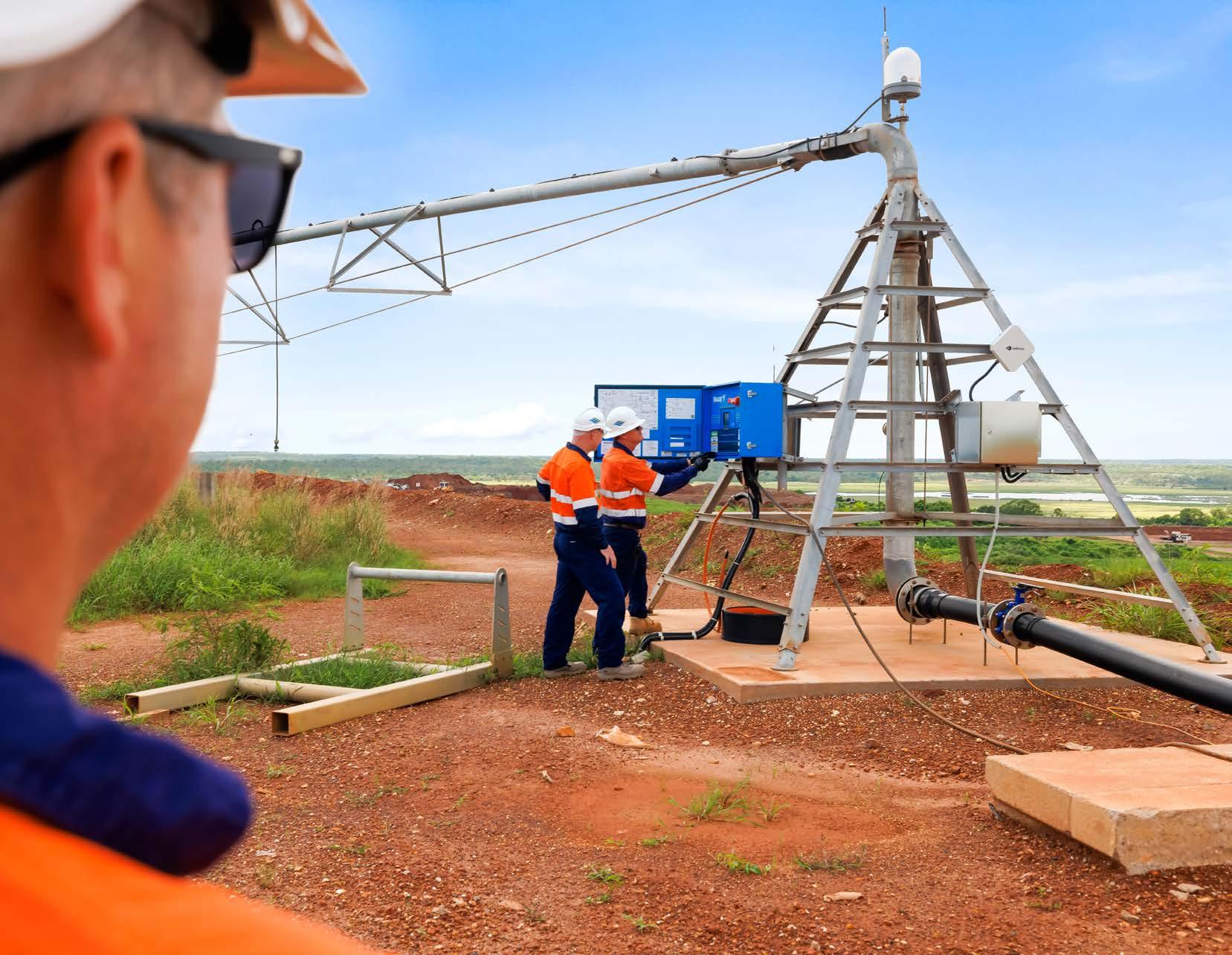




BY EVE WHITE, IRRIGATION AUSTRALIA

Victoria’s 18 water corporations have committed to 100 per cent renewable electricity from 2025 and net-zero emissions by 2035.
Since 2019–20, sector-wide emissions have fallen by 19 per cent, equivalent to taking 78,000 cars off the road.
This article describes how GoulburnMurray Water (GMW) reduced emissions to below its 2025 target ahead of schedule.
GMW’s transition includes large-scale solar and battery storage and fleet electrification.
Each water corporation needs to take a different approach to reducing emissions, and extreme weather and rising energy demand pose challenges to maintaining long-term emissions reductions.
Victoria’s 18 water corporations are working towards ambitious emissions reduction targets, having committed to 100 per cent renewable electricity by this year and net-zero emissions by 2035. In 2019–2020, the sector produced nearly one million tonnes of carbon emissions – equivalent to the emissions from 410,000 passenger vehicles over a year. Since then, emissions have fallen by 19 per cent, a reduction comparable to taking 78,000 cars off the road.
While the sector still has progress to make, seven water corporations have already surpassed their 2025 emissions targets, including Goulburn-Murray Water (GMW). This article examines how GMW achieved this.
Goulburn-Murray Water is Australia’s largest rural water corporation, covering an area the size of Tasmania. It delivers water to about 25,000 customers and manages 11 million ML of water storage. Keeping water flowing across such a vast area takes large amounts of energy, particularly for pumping.
To meet Victoria’s 2025 renewable electricity target, GMW committed to sourcing 100 per cent renewable electricity, cutting its total emissions by 75 per cent. This reduction accounts for electricity-related emissions, while some remaining emissions sources, such as fuel use and infrastructure operations, will require further action to reach net zero by 2035.
Goulburn-Murray Water’s Business and Finance General Manager Michael Gomez emphasises that emissions reduction efforts must also be financially responsible. “At GMW, we make sure that any initiatives to reduce emissions are commercially viable. Installing solar at our offices comes with an initial expense, but these expenses are offset within a few years due to reduced power fees,” he explains. “Similarly, purchasing electric vehicles and installing charging stations at our offices reduces long-term expenditure on fuel.”
A key initiative in GMW’s transition is the Mitiamo Pump Station and Stock and Domestic Pipeline, a 300 km pipeline
“Installing solar at our offices comes with an initial expense, but these expenses are offset within a few years due to reduced power fees.”
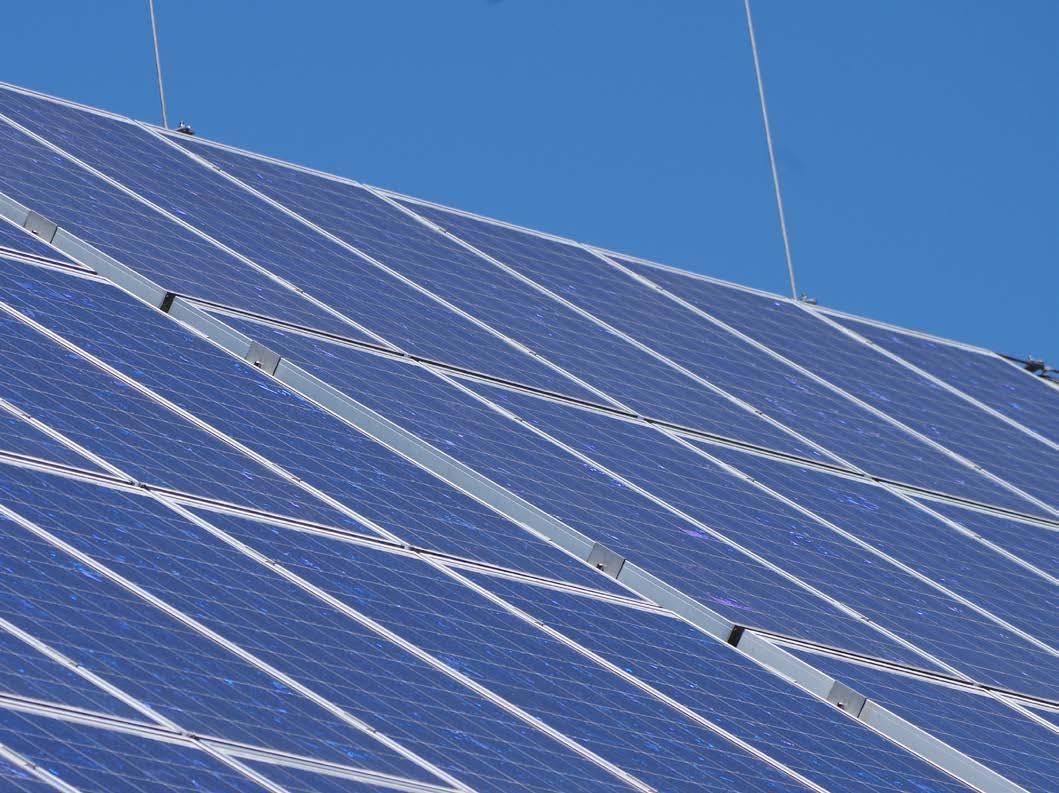
servicing 58,000 ha of farmland. A 99.7 kW solar array and a 404 kWh battery system now power the pumps, ensuring operations even in low-sunlight conditions. Over 25 years, the system will generate 3.9 gigawatt-hours of clean energy, significantly cutting emissions.
As well as the Mitiamo transition, GMW is also:
installing solar panels at its Tatura headquarters, home to 200+ staff
• planning to roll out solar at four more offices during 2025 using hydropower to harness energy from water movement at multiple water storages
• investigating how pump scheduling can be optimised to act as a ‘solar sponge’, using surplus solar power from the grid.
GMW’s vehicle fleet has also been a major emissions source. To address this, it is shifting to low-emission and electric vehicles:
The SUV fleet is primarily made up of hybrid vehicles.
• The first electric vehicle (EV) was added in 2023, with a charging station installed at Tatura.
• More EVs and charging stations are planned for 2025 at four additional locations.
Target: A fully zero-emission fleet by 2030, pending the availability of electric utilities.
Goulburn-Murray Water is also closely monitoring developments in electric utilities and other low-emission transport options to ensure it can meet its long-term sustainability goals.
While GMW and other Victorian water corporations have made progress, many still have considerable reductions to make to reach their 2025 targets, according to a recent report. Even once targets are met, with rising electricity demand and climate-related disruptions, maintaining emissions reductions long-term will remain an evolving challenge.
• Extreme weather events, such as flooding, can disrupt infrastructure, increase energy demand, and reduce the effectiveness of on-site renewable generation.
• Some corporations are experiencing rising electricity consumption, which could outpace their investment in renewables.
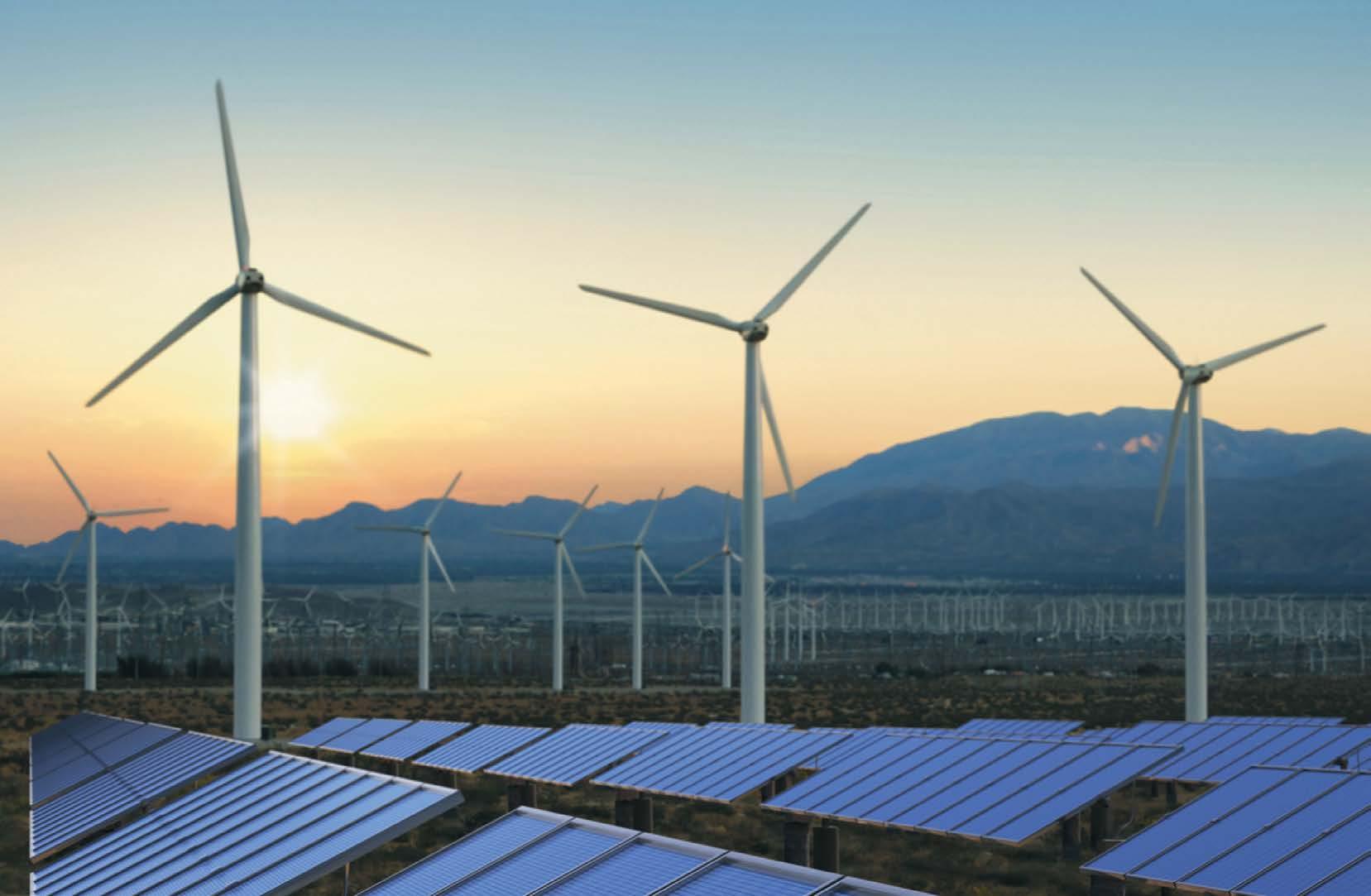
• Meeting the 2025 and 2035 targets will require continued investment in renewable energy, efficiency measures, and climate resilience strategies.
While the 2025 and 2035 targets are clear milestones, GMW continues to monitor market trends and emerging technologies to ensure long-term sustainability. Gomez says the organisation remains committed to seeking out new solutions: “We constantly monitor the market for any trends and innovations that could support us in further reducing emissions.”
Each water corporation faces different challenges and opportunities, meaning their approaches and timeline to net zero will vary.
Acknowledgment. Thanks to GoulburnMurray Water for providing insights for this article.
Information. Read about Victorian Water Corporations' progress towards emission reduction targets in the report What goes up. Victorian Water Corporations Greenhouse Gas Emissions 2023-24
Meeting the 2025 and 2035 targets will require continued investment in renewable energy, efficiency measures, and climate resilience strategies.
Scope 1 emissions – Direct emissions from sources a company owns or controls. For water corporations, this includes:
emissions from fuel use in company vehicles and machinery
• methane and nitrous oxide released during wastewater treatment processes.
• on-site gas combustion (e.g., in backup generators or heating systems).
Scope 2 emissions – Indirect emissions from purchased electricity used by the company.
• Most emissions in Victoria’s water sector come from electricity used for water pumping and treatment.
• The push for 100 per cent renewable electricity by 2025 is primarily focused on eliminating Scope 2 emissions.
Scope 3 emissions – Indirect emissions from a company’s supply chain, including:
emissions from suppliers and contractors (e.g., emissions generated in producing materials for infrastructure projects).
• waste disposal and landfill emissions
• business travel and other indirect operational impacts.
WHAT IS VICTORIA’S WATER SECTOR FOCUSING ON?
Victoria’s water corporations are prioritising reductions in Scope 1 and 2 emissions, particularly:
Scope 1 emissions – These are harder to reduce, but efforts include:
• replacing fossil fuel-powered vehicles with electric vehicles (EVs)
• using biogas from wastewater treatment to generate electricity
• optimising pumping schedules to reduce energy consumption.
Scope 2 emissions – By switching to 100 per cent renewable electricity by 2025, these emissions will be effectively eliminated.
Scope 3 emissions are not currently required under the Statement of Obligations (Emission Reduction), but some corporations are beginning to track and report them. Initiatives such as Yarra Valley Water’s carbon in construction tool suggest a potential future shift towards addressing Scope 3 emissions.



Irrigation Australia and Goheadhunt have partnered to launch the Irrigation Australia Talent Hub a dedicated industry-wide platform designed to attract, develop, and connect skilled talent with leading employers across the sector


Access a Growing Talent Pool - Engage with newcomers, apprentices, career switchers, and experienced professionals eager to build careers in irrigation.
Industry-Led Workforce Development – A long-term solution ensuring a continuous pipeline of skilled workers for the industry
Diversity & Inclusion – Supporting women in irrigation, First Nations people, and individuals from diverse backgrounds
Smart Recruitment Tools – Video interview recordings, smart matching, and applicant management systems designed to streamline hiring

IAL & Goheadhunt are launching a large-scale digital marketing campaign to attract talent and promote career opportunities in irrigation
Employers can join with a free standard account, allowing candidates to join their talent pool
Industry programs are currently leading the way in recycling plastic irrigation products. Photo from this video about circularity in resources by Rivulis.

Plastic plays a crucial role in modern farming, from mulch films to irrigation tubing, but its end-of-life management presents a challenge.
This article explores two strategies for tackling agricultural plastic waste: finding alternatives where possible and improving recycling systems for plastics that can’t be replaced.
Biodegradable mulch films and organic alternatives are emerging as replacements for plastic mulch, helping to reduce waste while maintaining soil health.
Drip irrigation recycling programs help growers recycle used drip lines and drip tape instead of sending them to landfill.
PVC irrigation pipes can last over 100 years and are highly recyclable. Initiatives led by PIPA and major manufacturers are working to increase recovery rates and reuse in new products.
Despite progress, challenges remain, including high collection costs, inconsistent recycling availability, and limited national coordination.
Industry leaders stress that while recycling is vital, it should be the last resort – the focus should be on reuse, longevity, and sustainable product design.
BY EVE WHITE, IRRIGATION AUSTRALIA
Plastic is woven into almost every aspect of modern farming. From mulch films that suppress weeds to drip irrigation tubing that conserves water, plastic has enabled agriculture to become more efficient and productive. But while plastic plays a critical role in food production, its end-of-life management poses a significant challenge. What happens to plastic once it’s no longer useful? And what are the alternatives?
The problem with on-farm plastic waste
Plastic removal isn’t just an environmental concern; it’s also an economic one. The cost of removing, transporting and disposing of plastic can significantly eat into a grower’s bottom line. Removing plastic mulch can also result in valuable topsoil loss, undermining soil health and productivity.
This article explores two key approaches to managing agricultural plastic waste: finding viable alternatives to plastic where possible and improving recycling systems for plastics that cannot yet be replaced. The sections below examine solutions for plastic mulch, irrigation tubing, and PVC piping, along with industry-led recycling initiatives.
Plastic mulch is widely used in agriculture. It helps retain moisture, suppress weeds, and improve crop yields. However, its disposal presents ongoing challenges, from high removal and landfill costs to the risk of plastic contamination in soil and waterways. There is also a risk of plastics breaking down into microplastics and entering the food chain. As concerns about plastic waste grow, many farmers are exploring alternative solutions that offer similar benefits without the long-term environmental impact.
To address the issue, growers are exploring alternatives that are both cost-effective and environmentally friendly. Two primary options stand out: organic mulches and certified soil biodegradable mulch.
Organic mulches. Organic materials, such as straw, wood chips, and cover crops, provide natural weed suppression and soil protection.
• Straw mulch helps retain soil moisture and prevent erosion but does not provide the same warming effect as plastic mulch.
• Wood chips contribute to long-term soil health by enhancing organic matter but must be sourced carefully to avoid contamination.
Living mulch (cover crops) can provide additional benefits, such as nitrogen fixation and pest deterrence, though they require careful management.
Certified soil biodegradable mulch.
A growing alternative is certified soil biodegradable mulch, which is designed to break down naturally in the soil. Unlike conventional plastic mulch, which must be collected and disposed of, this mulch decomposes into carbon dioxide, water, and biomass through microbial activity. However, it’s important to verify that products meet the ISO 23517 certification, as some so-called biodegradable plastics simply fragment into microplastics instead of fully degrading.
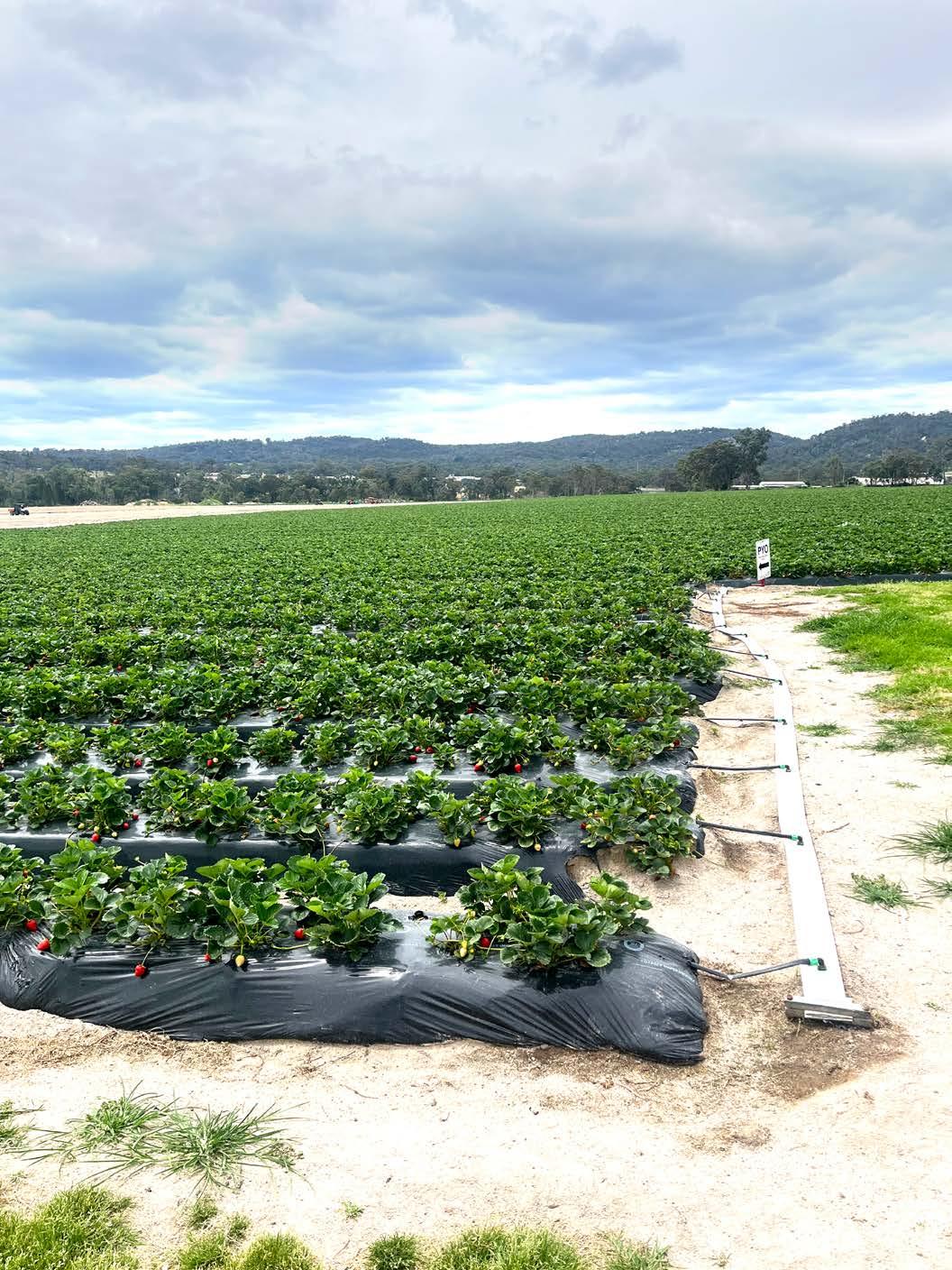
Plastic mulch is useful for retaining moisture, suppressing weeds and improving yields in many crops but farmers are increasingly exploring alternative solutions.

Cost is an important factor to consider. While certified soil biodegradable mulch has a higher upfront cost than conventional plastic mulch, it eliminates removal and disposal expenses. Studies indicate that when factoring in labour and transport costs for plastic mulch disposal, biodegradable alternatives can become more cost-effective over time. Growers should assess the full lifecycle costs before making a decision.
While viable alternatives exist for plastic mulch, other agricultural plastics, including irrigation tubing and pipes, are not as easily replaced. In these cases, recycling is the best available solution, with industry-led programs helping to manage plastic waste in essential applications.
Drip line and drip tape recycling. Netafim’s ReCoil Program, running since 2006, provides a recycling pathway for growers to return used drip line, preventing waste from accumulating on farms. Growers collect used drip line and use Netafim’s ReCoil retrieval machine to prepare it for transport. The recoiled material is then sent to recycling partners for processing, and growers receive a Certificate of Recycling once it has been recycled. To further close the loop, Netafim’s ReGen program incorporates recycled plastics, including old dripline, into new irrigation products – reducing reliance on virgin plastics.
Rivulis also runs a recycling service, supporting growers in the Lockyer Valley, southern NSW, Victoria, South Australia, and more recently, Bundaberg. Growers can stockpile used drip tape on-farm, where a recycling operator arranges collection. To improve processing efficiency, tape should be separated from plastic mulch. In February this year, 40 t of trickle tape were collected from the Bundaberg Waste Management Facility for recycling into new irrigation products.
PVC pipe recycling. Executive general manager of the Plastics Industry Pipe Association of Australia (PIPA), Cindy Bray, emphasises that not all plastics are the same. “Unfortunately, ‘plastics’ is a term that is generalised, when in fact there are many different types and not all of them have the characteristics or physical properties of single-use plastics.”
PVC pipes are designed for service lives of more than 100 years and at the end of their useful life, they can be reused and recycled, with studies showing that PVC pipes can be recycled up to 10 times.
“Although recycling is important, in a circular economy recycling is the last resort. We want products to stay in use for as long as possible, then be repaired and reused, and then recycled.”
The Plastics Industry Pipe Association of Australia plays a crucial role in promoting best practices for PVC recycling within the irrigation and construction industries. By collaborating with manufacturers of PVC pipes and fittings who have established recycling programs, PIPA supports sustainable waste management solutions for agricultural plastics.
Plastic pipe manufacturers such as Vinidex, Pipemakers, Australian Plastic Profiles, David Moss Group and Iplex (Pipeback) with their recycling initiatives, have established
collection points for PVC irrigation pipes and fittings. These programs provide a pathway for materials to be processed, rather than being sent to landfill.
"However, due to their long lifespan, there is often a low and inconsistent volume of material available. “Our industry is always looking at ways to work collaboratively with waste management companies, major distributors, and suppliers to collect viable volumes of plastic pipes for designated recycling,” Bray explains.
The industry is already advanced in incorporating recycled material into pipes, with technology enabling manufacturers to use up to 95 per cent recycled content in the inner core of PVC non-pressure pipes. “We want to ensure plastic pipes manufactured with recycled content perform just like a pipe made from virgin material – durability and performance are critical,” Bray notes. “Although recycling is important, in a circular economy recycling is the last resort. We want products to stay in use for as long as possible, then be repaired and reused, and then recycled.”

is always looking at ways to work collaboratively with waste management companies, major distributors, and suppliers to collect viable volumes of plastic pipes for recycling.
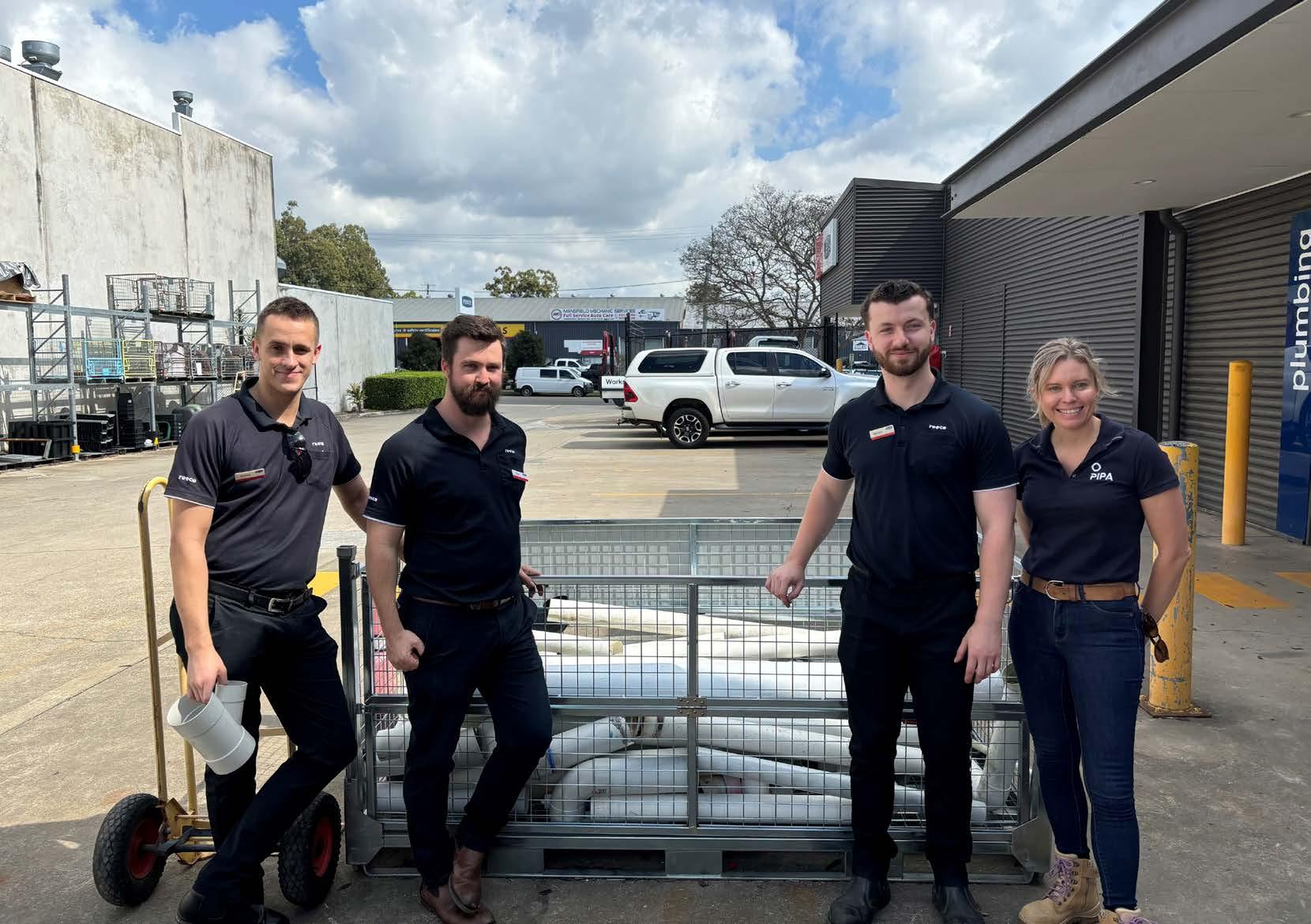
The future of agricultural plastics
Australia's 2024 goals for circular economy and waste management are shaping how plastic waste is handled across many industries, including agriculture. But progress on recycling agricultural plastics has been patchy, with efforts advancing in some areas while stalling in others.
Grieg Graham, managing director of Rivulis Irrigation, notes that while industry programs provide recycling options for materials like drip irrigation equipment, a coordinated national approach remains difficult.
According to Dr Anne-Maree Boland, principal at RMCG, extended producer responsibility – where producers are held accountable for the environmental impact of their products across their entire life cycle – could be a long-term solution for managing agricultural plastics more sustainably. In the meantime, regional and industryled initiatives are stepping in to help. Dr Boland pointed to local governments such as Southern Downs and Bundaberg Regional Councils in Queensland and Swan Hill Regional Council in Victoria, which are working with local growers to support plastic recycling on the ground.
Information.
You can download a useful factsheet about alternatives to soil mulch from the Soil Wealth ICP website
• Find out about Netafim’s Recoil program here
• Read about PIPA’s recycling program here


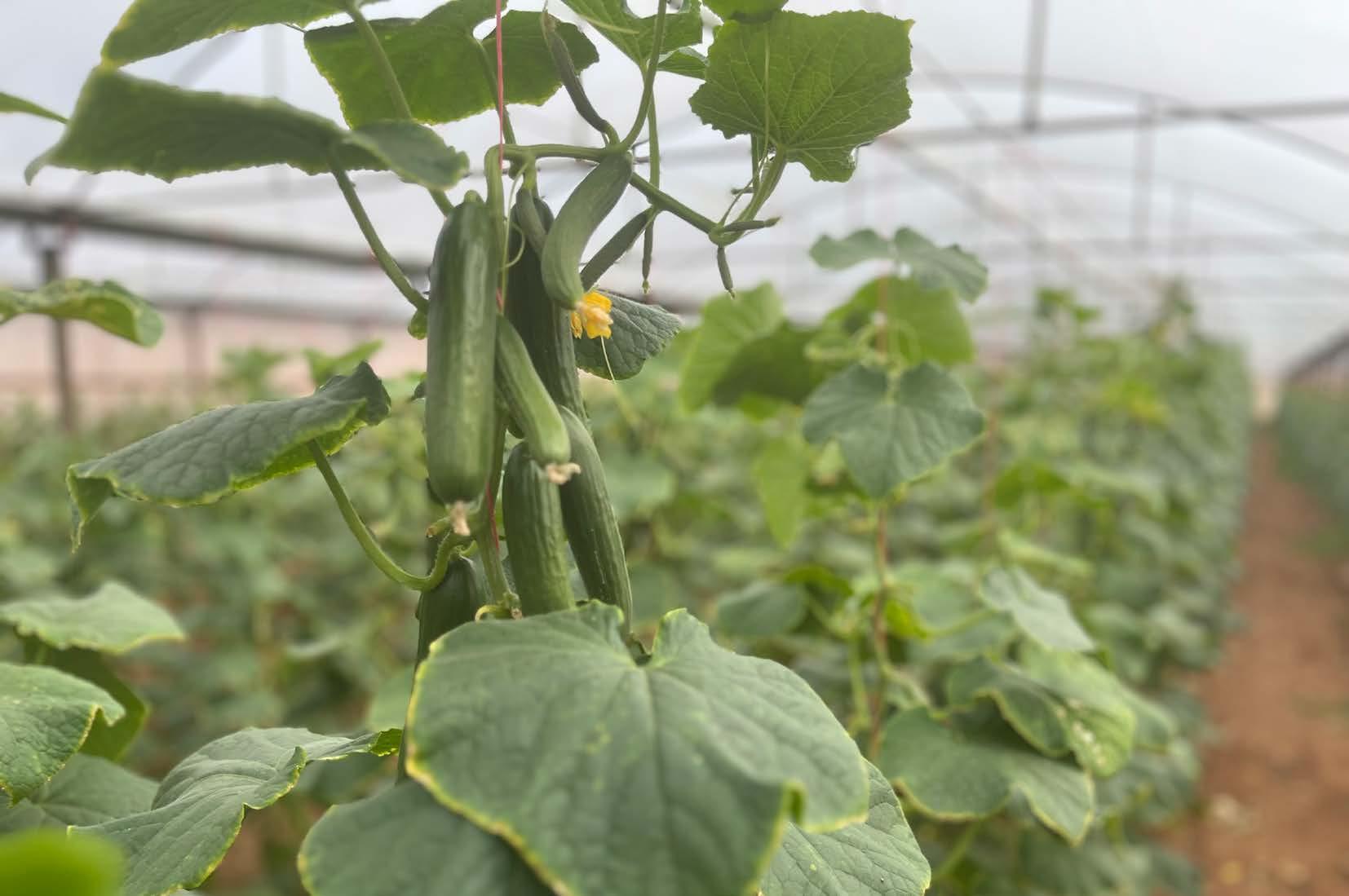
A cucumber farmer in Western Australia set out to improve its irrigation system, overcoming challenges with climate, single-phase power, and investment capacity.
Great Northern Rural Services (GNRS), a Geraldton-based rural water specialist, collaborated with Davey Water Products to recommend a solution.
Instead of installing an electric pump, a petrol-powered pump was used, achieving the required flow and pressure.
No adaptations were necessary, apart from sufficiently sized pipework in/ out of the pump, which is started and stopped manually.
The pump has the ability to be mobile, and run various applications, making it versatile for use.
Maintenance requirements align with existing service schedules for other small engines on the property.
The pump currently uses a mix of mains and dam water from tanks, with plans to capture rainwater as the primary source in the future.
This case highlights the importance of practical irrigation solutions for growers facing budget and infrastructure challenges; and the value of collaborating with local specialists who understand regional conditions and the technical aspects of water management.
When a cucumber grower in Geraldton, Western Australia, set out to improve their irrigation system, they faced a major hurdle: their farm’s existing infrastructure only supported single-phase power. Supplying enough water to multiple hot houses required a high-capacity pump capable of delivering 800L/min at 300 kPa, but standard electric pumps with that level of performance typically require three-phase power. Upgrading the farm’s electrical system would have been an expensive and time-consuming undertaking.
At the same time, the farm’s irrigation equipment needed to withstand the harsh conditions of the Mid-West WA climate, where heat, wind, and dust can put extra strain on outdoor machinery.
To meet the grower’s needs without major infrastructure costs, Great Northern Rural Services (GNRS), a Geraldton-based rural water specialist, collaborated with Davey Water Products to explore alternative solutions. Instead of installing an electric
pump, they recommended the petrolpowered Davey 5113HE FireFighter pump, a 13HP single impeller model capable of achieving the required flow and pressure.
By using a petrol-driven system, Aidan Gregan, Territory Manager for Davey Water Products, explained that the grower could achieve reliable irrigation without modifying their electrical infrastructure. He said that no adaptations were necessary, apart from sufficiently sized pipework in/out of the pump, which is started and stopped manually.
The pump’s design also provided the durability needed for the demanding local climate. “With the installation being new, the lack of existing infrastructure meant that the output of this pump vs investment required to set up, was favourable,” Gregan said.
Since installation, the new pump has consistently met the grower’s irrigation
requirements, ensuring a steady water supply to the hot houses without performance issues. The ability to bypass the need for three-phase power has not only saved the grower a significant upfront investment; it also provided flexibility for future expansion.
The pump has the ability to be mobile, and run various applications, making it versatile for use on this property. The impact on water efficiency and crop health, Gregan said, is the ability to run a large amount of irrigation with one asset, and vary the output based on requirement at any given time. Currently, the pump is fed by water tanks, drawing a mix of mains and dam water. Future plans aim to capture rainwater, and for this to become the dominant water source.
Regarding maintenance, Gregan said that the pump will align with existing schedules for checking other small engines on the property.
This case highlights the importance of practical irrigation solutions for growers facing budget and infrastructure challenges. It also highlights the value of collaborating with local specialists who have a deep understanding of both regional conditions and the technical aspects of water management.
Power infrastructure limits many operations, especially those lacking provisions for three-phase power, said Gregan. “Single-phase even has limitations for pump sizing, as factors like amp draw need to be considered. Larger operations
may have three-phase power, but growing operations may not be in a position to invest in such infrastructure, while expanding. These types of solutions can be crucial for developing operations.”
When comparing electric vs. petrolpowered irrigation pumps, Gregan noted that both petrol and diesel-powered pumps offered versatility, mobility, and strong performance. “Even if temporary, they can be crucial backups during power outages or for fire mitigation in the event of a fire,” he explained. “The Davey Remote Start FireFighter, for example, can accommodate run signals and timer programs,
increasing versatility and reducing manual interaction.”
Electric pumps, Gregan added, can be adapted to run automatically and integrated into many control systems, making them a ‘set and forget’ option.
Gregan emphasised that offering more power options provides the flexibility to select the best pump for each job, with sizes tailored to the application. He also pointed out that pump monitoring and control systems can be integrated into electric pumps for enhanced functionality.
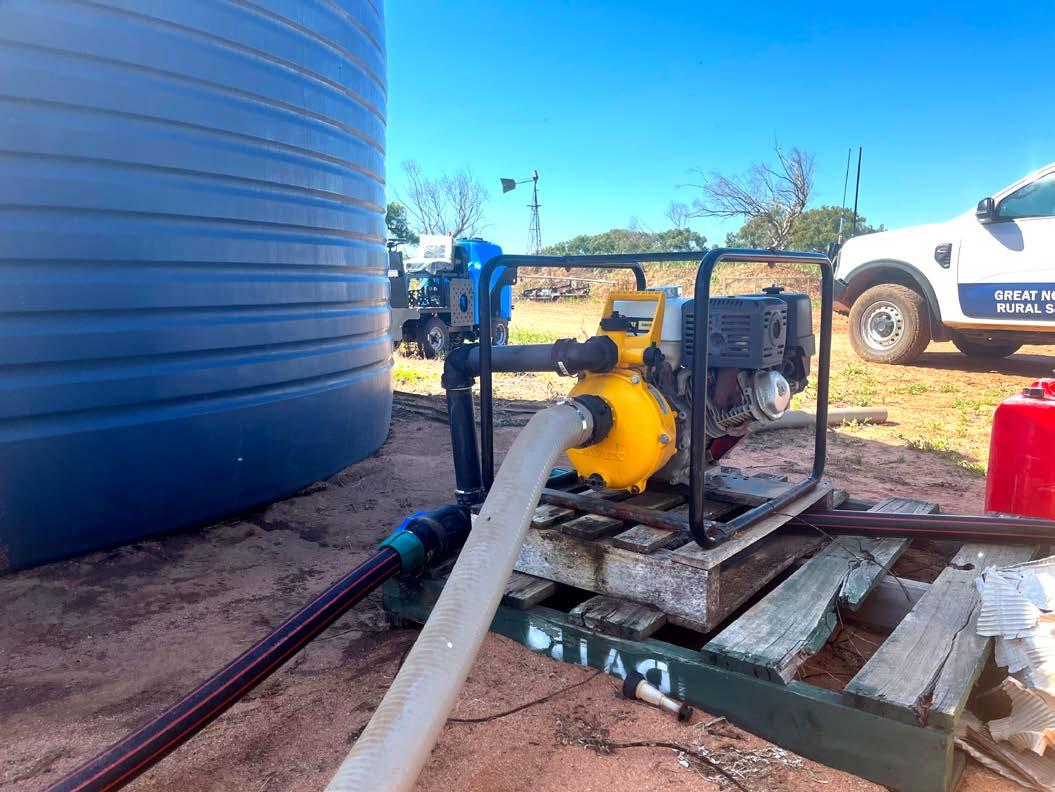


We’ve moved our head office to 1/35 Paringa Road, Murrarie 4172 – pop in and say hi some time! If you’re using Google maps, just go past the point it takes you to on the map and take the first turn right to get to the entrance.
The change was prompted by a big rent hike – it’s given us the opportunity to look at accommodation with a warehouse, which should save us a lot of time with freight and logistics in the long run. We will also have a nice space for our hands-on training. Keep an eye out for announcements very soon, as we re-launch our training delivery on the back of new facilities and some fantastic new learner and student management software.
Our profuse thanks again to Davey for helping us out with warehousing for the last couple of years.
We are pleased to announce the release of our new talent hub, developed in partnership with Goheadhunt. The hub is an industryled initiative designed to build a continuous, high-quality talent pipeline for the irrigation sector. Goheadhunt is led by Adham Ghafary who worked as the Association’s communication and marketing contractor for a long time before establishing this new venture. Adham brings a wealth of knowledge in targeted social marketing. This innovative approach to recruitment is being rapidly adopted.
Goheadhunt and Irrigation Australia have partnered to attract, engage, and connect top talent with industry employers through a significant digital marketing campaign. We are actively promoting careers in irrigation to newcomers, apprentices, skilled professionals, women in irrigation, and career switchers, ensuring that our industry remains strong and future-proof.
Through the platform, job seekers will:
• register their profiles and specify job preferences and location
• complete an AI-powered video interview to showcase their skills
• join company talent pools, allowing employers to connect directly with them.
Irrigation Australia members are invited to join the platform at no cost with a basic employer account, which includes:
• A dedicated company profile with video to highlight your business and work culture
• An exclusive company talent pool where candidates can express interest in working for you
• Access to new industry talent, giving you the opportunity to consider and hire from the pool.
There are no financial kickbacks or commercial incentives for Irrigation Australia – this initiative is purely designed to support the irrigation industry’s workforce development and our careers program by providing a sustainable and ongoing talent pipeline.
The platform offers affordable subscription options to ensure the continuity of this initiative and provide even more advanced hiring tools. However, to get started, all you need to do is confirm that you are happy to join, and the Goheadhunt team will set up your profile for you.
By joining early, you are helping to drive the success of this initiative, ensuring we attract and retain talent that will benefit the industry and your business long-term. Goheadhunt provides an easy-to-use platform, complete with smart recruitment tools and integration options for those who wish to connect with their existing HRMIS systems in the future.
Information. Reach out to Adham Ghafary directly at a.ghafary@goheadhunt.com.au if you’re keen to give it a go.
MEMBER CATEGORY CHANGES – CHECK YOURS IN THE MEMBER PORTAL
We have recently refined our member categories, meaning you can receive more tailored communications. This ensures you receive updates relevant to your sector, including:
• training opportunities
• industry news and more!
To see your membership category, simply log in to the member portal. These enhancements reflect our ongoing commitment to improving how we connect with you and deliver value from your membership.
IN THE
Our newly upgraded website features an enhanced, user-friendly business directory designed to help customers find you with ease. To ensure your business is listed correctly, we need a few details from you:
✔ Send your business logo and a company bio to info@irrigation. org.au
✔ A completed JotForm for privacy compliance – Click HERE to access the form
Important: Without these details, we won’t be able to include your business in the directory. Don’t miss this opportunity – submit your information today!
Please note: This listing is available exclusively to company members and is not included in individual memberships. Certified Professionals can list in the Certification Directory by completing the form HERE
Irrigation Australia last reviewed membership fees in early 2024, with a planned annual adjustment based on the Consumer Price Index (CPI). As previously communicated, a 5 per cent increase now applies to all membership categories – including company, individual, and branch memberships.
Our board has recently engaged a marketing consultant to help us review our membership and sponsorship levels to try to make sure they are both equitable and to help us better encourage membership growth in line with rapidly increasing costs.
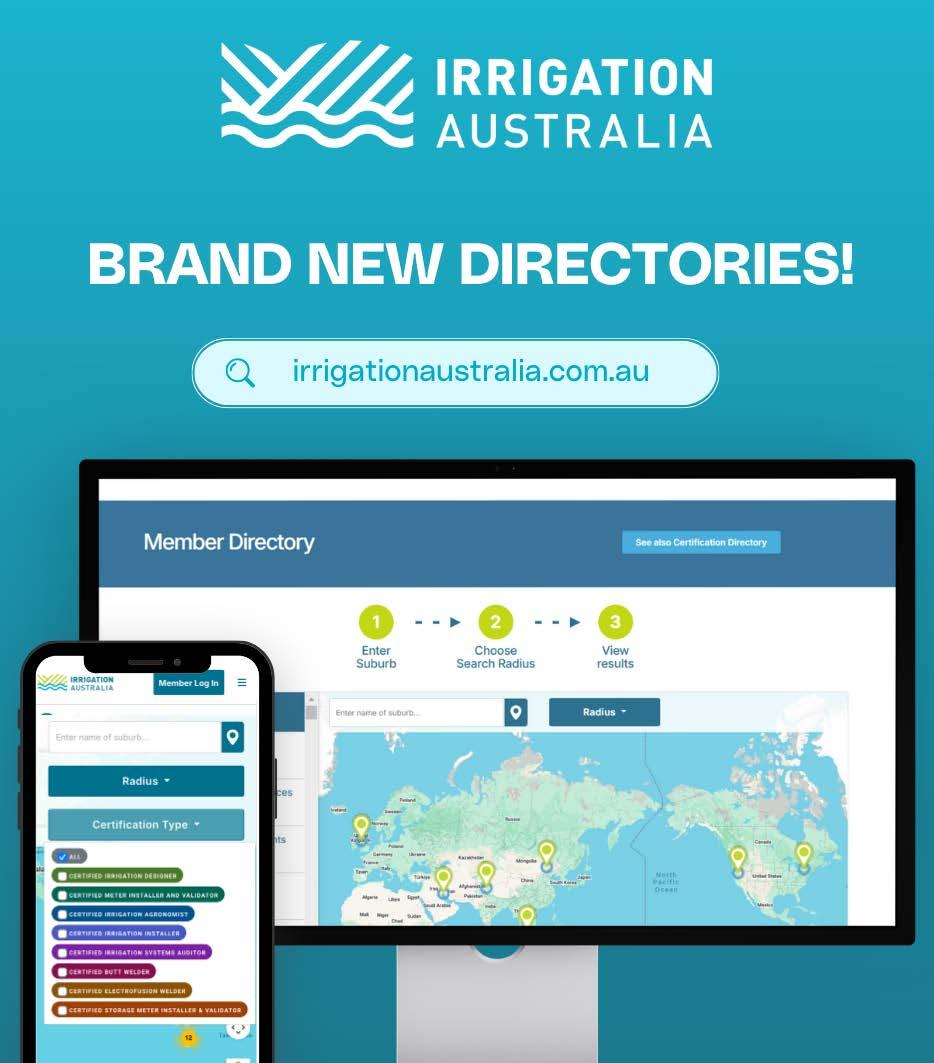
Have you checked out Irrigation Australia’s Waterwise irrigation programs on Facebook?
There are two categories:
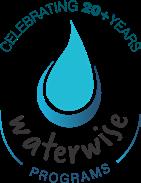
• Waterwise Garden Irrigator for professional installation and maintenance services
• Waterwise Irrigation Design Shop for expert advice and quality parts
The Facebook page aims to provide the wider community with #waterwise tips and advice and promote members.
Use the QR code and jump on Facebook to find out more and keep up to date.


One of our goals with the journal is to help foster a sense of community and engagement among members. With this new regular column, we aim to introduce and celebrate the newest members of our network, highlighting their expertise, interests, and what brought them to our organisation. In each issue, we’ll feature a couple of our latest members, giving you the chance to learn more about your peers and the diverse skills and perspectives they bring.
When a large melon farm in Chinchilla, QLD, faced a costly irrigation failure, they needed a reliable solution fast.
A layflat hose on their sub-main stretched and twisted under pressure, shifting underground lines out of place. The system had to be dug up and re-positioned –costing time and money. The farm turned to a Dixon distributor for help.
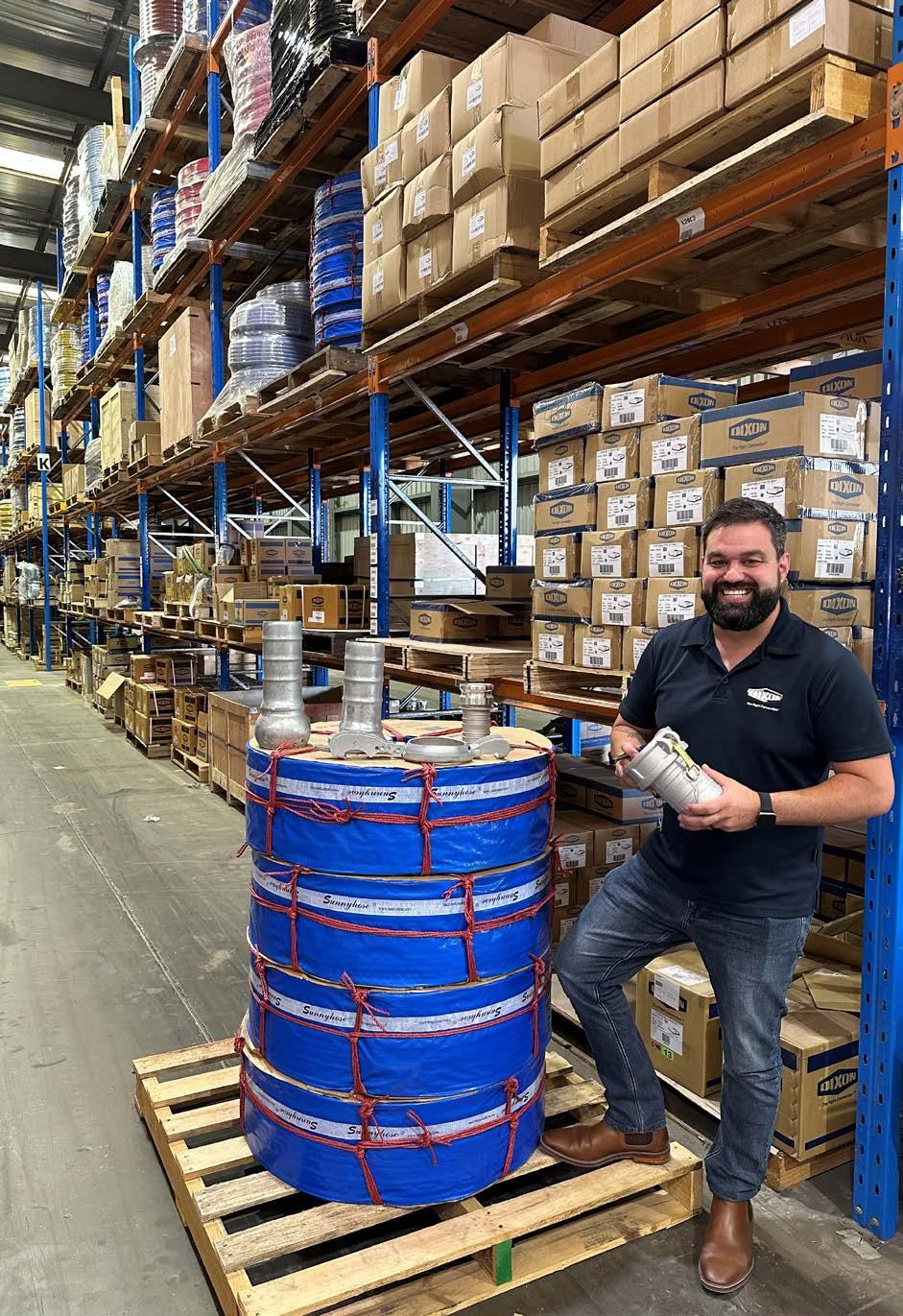
A Dixon territory manager assessed the issue and recommended Sunny Layflat – a reinforced layflat hose designed for stability and resistance to twisting. Unlike the previous hose, which failed as soon as the pumps were turned on, Dixon said that Sunny Layflat maintained its shape and position, preventing costly reinstallations and ensuring consistent water flow.
With six distribution centres across Australia, Dixon supports irrigation professionals with durable products that stand up to tough conditions said Adam Burdon of Dixon Australia. “Our goal is to provide reliable solutions that improve efficiency and reduce downtime for irrigation professionals. Irrigation Australia membership will allow us to engage with industry leaders, share expertise, and continuously improve our product offerings to meet evolving irrigation demands,” he said.
Visit Dixon Australia’s website
“Our goal is to provide reliable solutions that improve efficiency and reduce downtime for irrigation professionals. Irrigation Australia membership will allow us to engage with industry leaders, share expertise, and continuously improve our product offerings to meet evolving irrigation demands.”
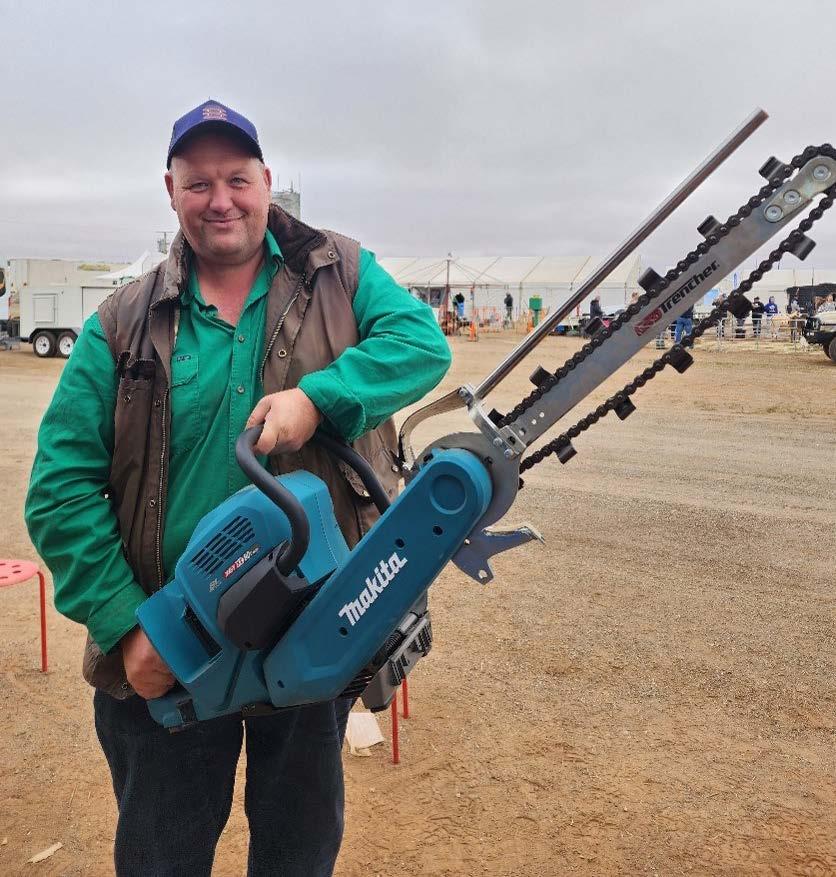
“We look forward to the networking and credibility that comes with being part of Irrigation Australia.”

Simon Treptow (Chair) Irrigear Stores, Mornington, Vic
Valentina Tripp (Deputy Chair) Individual member, Vic
Peter Brueck
Waterwise Consulting, Bangor, NSW
Greig Graham Rivulis, Brendale, Qld
Rob Nadebaum
INTRODUCING GEOTRENCHER: SUPPORTING IRRIGATION PROFESSIONALS WITH HAND-HELD TRENCHERS
Welcome to new Irrigation Australia member, GeoTrencher. Led by Olivia and David McNabb, GeoTrencher distributes and services hand-held trenchers from New Zealand.
David said he loves hearing positive feedback from people who have used their products, especially stories about new ways irrigation professionals have
used the trenchers – from running lines under footpaths, to trenching close to buildings, or even removing plants like agapanthus. “We get calls saying, ‘Without this machine, I wouldn’t finish my apprenticeship’ or ‘I wouldn’t take these jobs on.”
David and Olivia joined Irrigation Australia to connect with industry professionals and increase awareness of their work. “We look forward to the networking and credibility that comes with being part of Irrigation Australia,” David said.
New members are invited to introduce their business with a free spotlight article. Submit a short profile and photo for consideration. To explore paid advertising options, download the Journal media kit or email: Maddison.Coward@irrigation.org.au
Individual member, Vic
Matthew Binder
Individual member, SA
Carl Walters Goulburn Broken Catchment Management Authority, Shepparton, Vic
Clinton Hort Rodney Industries, Chermside, Qld
Gennaro Vellotti
Netafim Australia/New Zealand, Adelaide, SA
Lucy Wilson TWS Evolution, Blayney, NSW
GOING
The Queensland committee has had a busy start to the year, working to deliver events, funding opportunities, and policy engagement that support the irrigation industry across the state. Here’s a snapshot of what’s been happening and what’s coming up.
SAVE THE DATE. The first Queensland Regional breakfast event will be held in May, hosted by Rodney Industries at Chermside in Brisbane’s North. The morning will include refreshments, a factory tour, and an opportunity to meet with the Queensland committee to discuss industry issues and priorities for 2025.
FUNDING APPLICATIONS SUBMITTED ON BEHALF OF MEMBERS:
Renewal of Skills Assure Supplier status for delivering funded qualifications in Queensland, particularly Certificate III in Irrigation Technology.
• Submission to the Queensland Training Ombudsman requesting increased funding for several qualifications and proposing the introduction of state funding for Certificate IV in Irrigation Management.
• Application for funding to support key skill sets including Certified Irrigation Installer and Certified Meter Installer and Validator.
• Successful application for microcredentials funding! Keep an eye out for the new course ‘Irrigation Efficiency and Practical Skills’ from 20–21 May. Designed for new employees and delivered online over eight hours, this course is exclusive to Queensland members. It is heavily subsidised by the Queensland Government and will cost just $100 +GST per participant. We encourage members to take advantage
of this opportunity, as strong uptake will support future applications for similar flexible training programs.
POLICY AND ENGAGEMENT:
• Active participation in the Queensland Government Water Engagement Forum.
• Ongoing collaboration with the Queensland Government on metering regulation and capacity building.
• Ongoing discussions with the Queensland Government regarding licensing requirements for irrigation.
• Involvement in the Rural Job Skills Alliance and the early stages of developing funded training for on-farm activities through a program managed by Queensland Farmers’ Federation (QFF).
The Western Australia committee has been actively driving industry engagement, event planning, and training initiatives to support irrigation professionals across the state. Here’s a summary of recent activities and upcoming developments.
ALL EYES ON THE WA EXPO. A huge amount of work has gone into organising the Expo in August. It’s shaping up to be an incredible event with great support from exhibitors and plenty of interesting presentations. Thanks to our amazing committee members for their incredible effort and commitment.
BUILDING WOMEN’S CAREERS. A major funding application was submitted for the Building Women's Careers initiative. Unfortunately it was unsuccessful but we
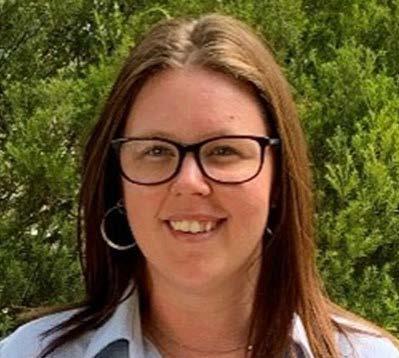
are looking to build on the idea to further our careers program in the region.
TRAINING AND WORKFORCE DEVELOPMENT:
• Ongoing discussions with Food, Fibre, and Timber Industries on traineeship and apprenticeship options.
• Continued engagement with the Department of Training and Workforce Development.
• Discussions with Water Corporation and the Department of Water and Environmental Regulation for training exclusively for Waterwise councils.
URBAN AUDITOR CERTIFICATION. The committee is progressing interest in an urban version of the auditor certification, similar to Victoria.
LOCAL WATER-SAVING INITIATIVE. South-West water utility Busselton Water, has launched a weather-based irrigation controller rebate.

13 August 2025

Novotel Vines Resort, WA 7am – 5pm
The Waterwise Irrigation Expo is just around the corner! Mark your calendars for Wednesday, 13 August 2025, at the Novotel The Vines Resort in Perth, Western Australia.
As the premier event for the urban landscape industry, this must-attend gathering brings together industry professionals, providing the perfect platform to network, discover the latest innovations, and showcase cuttingedge water-efficient technologies.
Don’t miss this exciting opportunity to connect, collaborate, and elevate your presence in the industry!

The Victoria committee has been focused on building relationships, delivering events, and progressing key conversations around regulation and industry collaboration. Here’s a snapshot of recent activity in the region.
EVENT HIGHLIGHTS. The committee hosted a successful Greening Communities event and annual breakfast event.
UTILITY ENGAGEMENT AND TRAINING. Productive discussions are underway with South-East Water and other utilities around membership and the potential for waterwise, and auditor courses for the region.
REGULATORY ADVOCACY. The committee is investigating plumbing regulation issues impacting members in the region.
INDUSTRY COLLABORATION. As part of the annual conference, the committee participated in discussions with WSAA and other stakeholders, contributing to the development of a white paper on irrigation–utility partnerships. The paper explores best practice reuse, potential industry codes and real-world case studies to inform future collaboration.
The South Australia committee has been actively exploring opportunities to strengthen training and industry development in the region. Here’s a brief overview of recent progress.
FUNDING AND COLLABORATION OPPORTUNITIES. The committee has held meetings with SkillsSA and other organisations to identify potential funding opportunities. These include equipment
grants and funding to support the design of short courses, as well as resources for running an industry workshop to conduct a regional training needs analysis.
TRAINING DEVELOPMENT. The committee is investigating funding for SA-specific short training courses, and interest in scheduling courses in the coming months including:
• Irrigation Efficiency
• Irrigation Installer and System Auditor.
MEMBER EVENT - is in the works. Stay tuned for your invitation!
The New South Wales committee has been actively engaging with government agencies and progressing key training and regulatory issues on behalf of members. Here’s what’s been happening across the region.
METERING ENGAGEMENT. Ongoing interactions with WaterNSW and DCCEEW continue regarding metering issues.
FUNDING SUCCESS. A successful funding application has secured the delivery of three AgSkilled courses, scheduled for March to May.
LICENSING ADVOCACY. The committee has initiated correspondence with Fair Trading and the relevant minister concerning significant changes to licensing in NSW. The changes, which have been implemented without appropriate industry consultation, include:
The addition of plumbing units to existing irrigation training
• A shift in who can certify license holders as competent.
The department has agreed in principle to a broader meeting with stakeholders to develop suitable compromises.
For more information, contact Rebecca New, Membership Manager, at rebecca.new@ irrigation.org.au
BY SAM O’BRIEN, TRAINING BUSINESS MANAGER
The past quarter has been a dynamic and transformative period for Irrigation Australia’s training division. A key milestone was the successful launch of our new Learning Management System (LMS) and Student Management System (SMS) platform, Ammonite. This innovative platform, introduced last month, has already received very positive feedback from both students and trainers.
Ammonite provides a more streamlined and efficient approach to the theory components of our courses, freeing up valuable time for practical, hands-on, and field-based training. This shift resonates strongly with our students, as it enhances their learning experience by focusing more on real-world applications. By the end of June, all courses and deliveries will be fully transitioned to this new platform, ensuring a consistent and enhanced learning journey for all participants.
Irrigation Australia is the peak national organisation representing the entire irrigation industry. With jobs in irrigation never running short, Irrigation Australia (RTO #91313) provides a range of courses, both accredited and non-accredited. Its unique blended learning experience provides practical training opportunities, online and face-to-face. Courses can be tailored to varying LLND (language, literacy, numeracy and digital) levels, with a key focus on providing hands-on learning experiences. All Irrigation Australia trainers are qualified industry experts, with years of experience in their respective fields. To find out more click here

As we enter our busiest period for training delivery, we are pleased to report that a growing percentage of our scheduled courses are private training sessions. These include specialised courses such as Poly Welding, Certified Meter Installer, Irrigation Auditor, and Irrigation Efficiency, among others. Private courses offer significant advantages, including tailored content, fixed pricing, and delivery at a location convenient to the client. The flexibility and customisation of these courses lead to higher engagement, increased student interest, and improved completion rates.
We encourage anyone interested in arranging a private training course to reach out to discuss their needs. Our team is always eager to collaborate with industry professionals and organisations to develop training solutions that best fit their requirements.
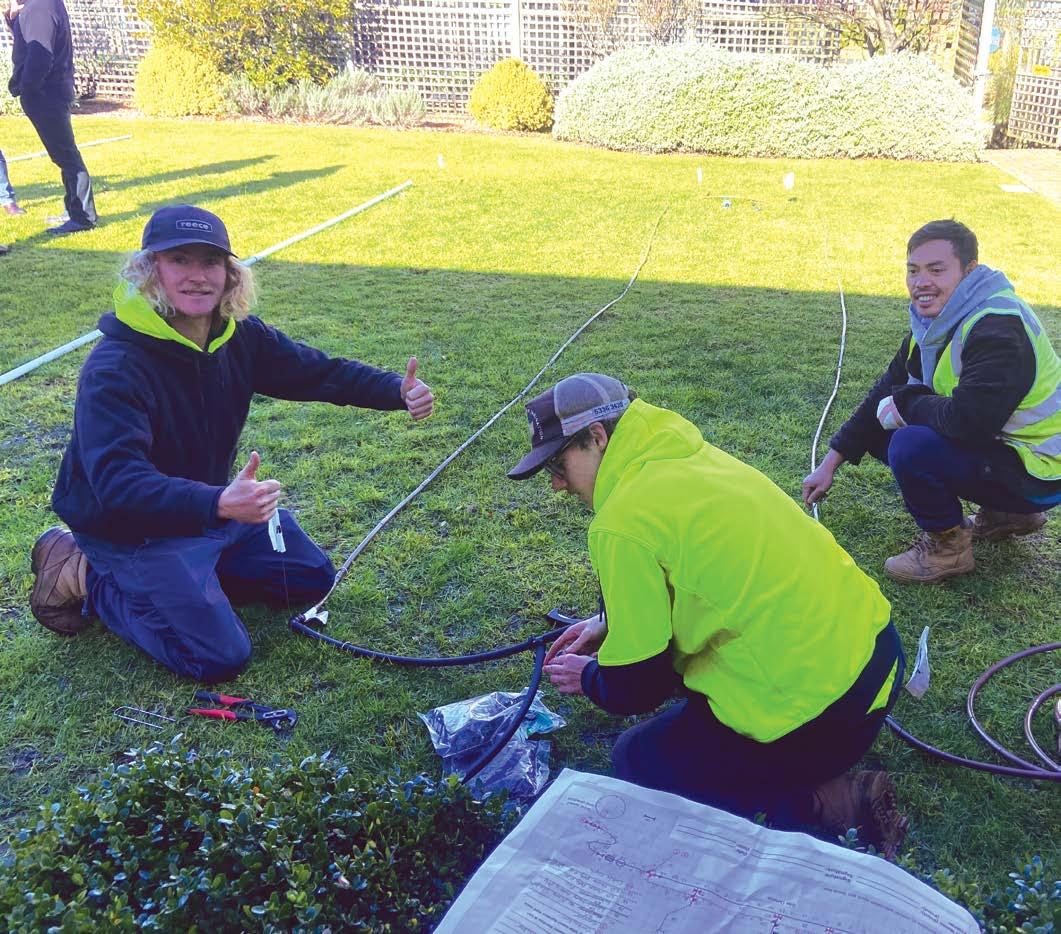
Private courses offer significant advantages, including tailored content, fixed pricing, and delivery at a location convenient to the client.
Finally, I would like to extend my sincere gratitude to our exceptional trainers, who consistently receive outstanding feedback from students. Their expertise, dedication, and passion for the industry are invaluable to the success of our training programs.
Thank you to all our students, trainers, and industry partners for your ongoing support. We look forward to continuing to enhance our training offerings and delivering highquality education to the irrigation industry.
For more information, visit our training webpage or contact us at Irrigation Australia: P: 07 3517 4000, E: training@ irrigation.org.au.

Irrigation Careers is your ultimate destination for forging a rewarding career in the irrigation industry! Regardless of what stage you’re at in your career pathway, this platform is designed to help you thrive in a field dedicated to sustainability and innovation. Help keep Irrigation Careers a valuable resource by sharing your passion and expertise. Contact us today to contribute quality content, career testimonials, and feedback to inspire and empower the future leaders of irrigation!
Explore a diverse array of career opportunities
Get inspired with career testimonials from experienced professionals


Start your journey in irrigation today
Learn more about Irrigation Australia's nationally recognised Training & Certification programs
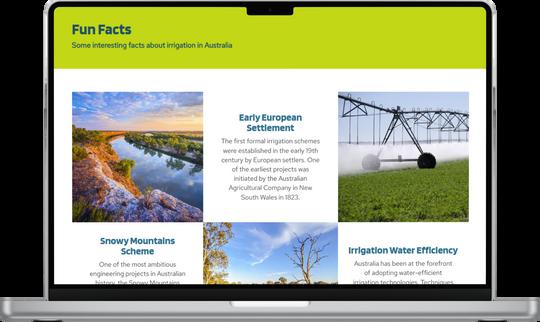
Enrol in one of our introductory courses!
Ready to kickstart your journey in the irrigation industry? The Irrigation Insights - Induction Course is a free online learning resource, designed as the ultimate introduction for newcomers
Offering a comprehensive overview of the industry, this course is the perfect starting point for those exploring career options, gaining work experience, or looking to onboard new employees
Discover fun facts about the irrigation industry
Are you reading to dive into the basics of irrigation in Australia’s unique environment?
The Introduction to Irrigation (Part A) is an online course, designed to provide foundational knowledge for anyone entering the industry
This course offers practical, easy-to-understand insights to get you started, awarding you with a Statement of Completion at the end!
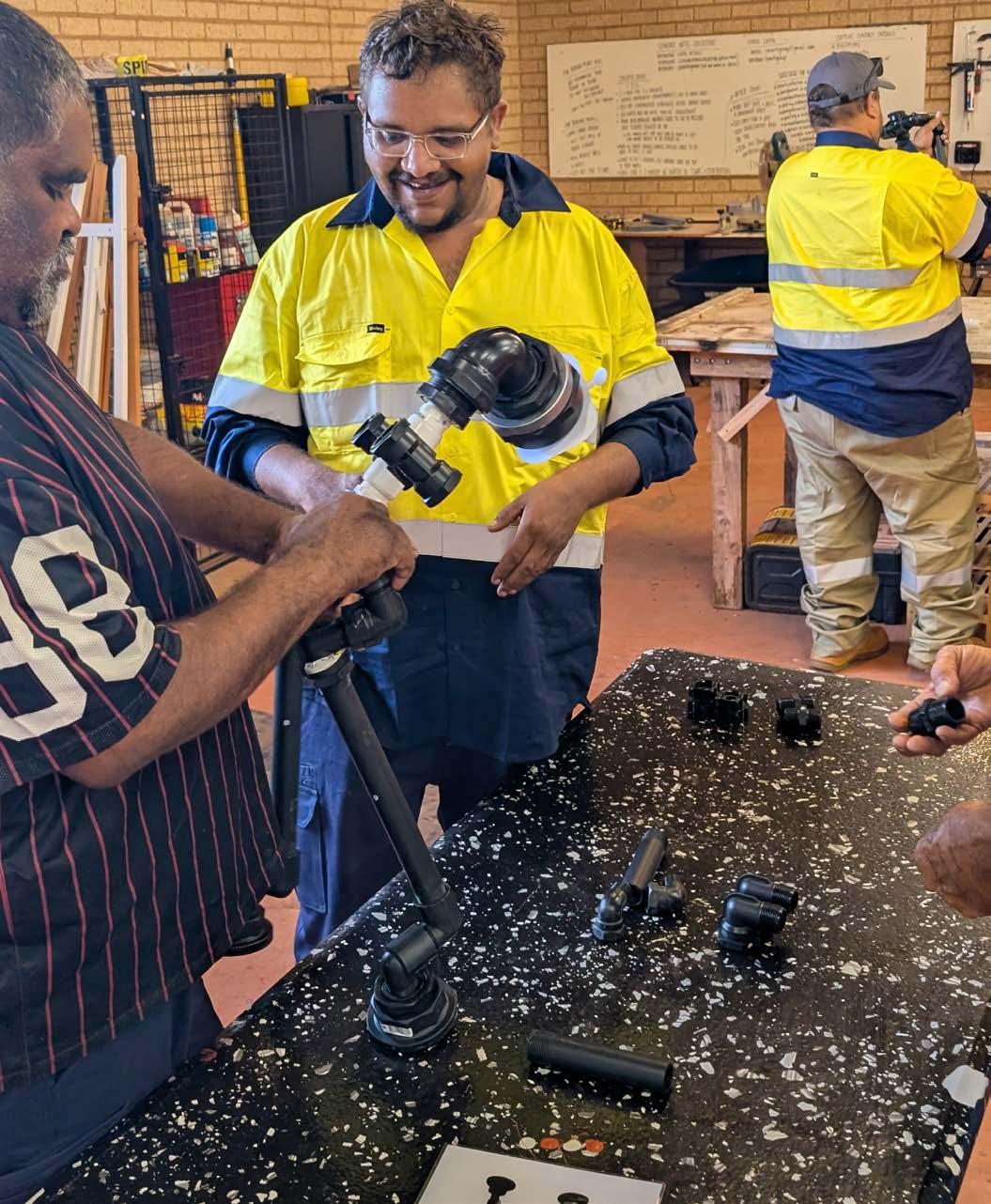
This workshop activity shows course participants following a process they developed to complete Irrigation Australia’s timed “Gary” project.
The Waalitj Foundation recently engaged Irrigation Australia to deliver on-site training in irrigation efficiency in Leonora, Western Australia.
To accommodate different levels of skills and knowledge within the group, Irrigation Australia worked collaboratively with Waalitj Foundation to customise an intensive workshop “An Introduction to Irrigation System Efficiency”.
Over the course of three full days, most of the training was spent in the workshop practicing techniques and pulling components apart. Each day had a different session aim, providing different but complementary outcomes.
Participants applied newfound knowledge to design a pressurised irrigation
system which they built, installed and commissioned. They learned to troubleshoot issues, operate systems, measure irrigation performance, work as a team and to perform tasks safely.
Calvin Ashwin, senior activity supervisor for Waalitj Foundation said that designing the course for those attending, and providing hands-on activities made the course the success it was. Calvin was particularly impressed with the trainer’s people skills, saying that Stuart Alexander (Irrigation Australia) made the course fun and that he communicated well with the group.
Skills and knowledge obtained from the workshop were linked to outcomes supporting better employment options and will be applied to a hydroponic system that grows tomatoes, cucumbers and bok choy for Leonora’s community.
Skills and knowledge obtained from the workshop were linked to outcomes supporting better employment options
> Seventy-five per cent of participants elected to undertake additional training.
> One hundred per cent of those who attended on day one, attended day two and three. “Attendance can be an issue in remote communities, so this is a solid achievement,” said Irrigation Australia trainer, Stuart Alexander.
Tips from Waalitj Foundation
For others who may be interested in organising similar training, Calvin said that planning was key to getting good outcomes. He suggests allowing at least one month of preparation – to get a group of committed participants together, to allow time to understand the group’s abilities and skills, and to design a course around them.
To find out more about Waalitj Foundation, visit their website

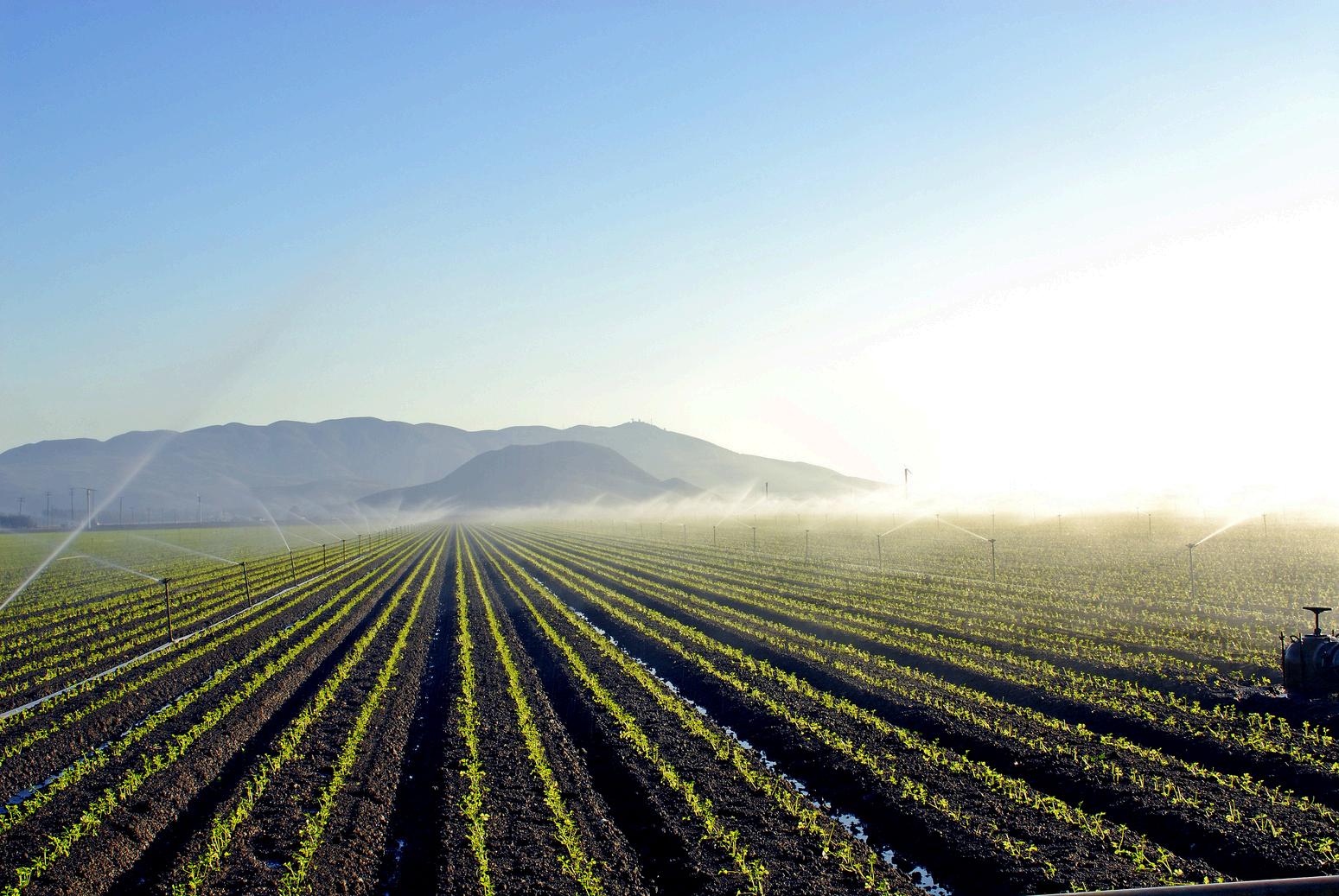
Irrigation Australia is proud to introduce several new partnerships that reinforce our commitment to strengthening the irrigation workforce:
Introducing the Irrigation Australia Talent Hub
In collaboration with GoHeadhunt, we are launching the Irrigation Australia Talent Hub - a smart platform connecting skilled professionals with leading employers in irrigation, water management, and landscaping.
Benefits for job seekers:
Access exclusive job opportunities
AI-powered recruitment tools
Personalised career support and mentoring
Direct connections with top employers
More details on this partnership will be shared soon!
Benefits for employers:
Access to a curated talent pool
Smart hiring tools for streamlined recruitment
Featured job postings for increased visibility
A cost-effective recruitment solution
Expanding employment pathways with atWork Australia
We are also beginning an engagement process with atWork Australia, a national employment services provider offering tailored workforce solutions across the country.
This collaboration provides employers with access to a diverse pool of job-ready candidates, financial support for accredited training, and government wage subsidies of up to $10,000. By working together, we aim to enhance workforce planning, reduce hiring costs, and create meaningful employment pathways within the irrigation industry
Introducing myfuture - A career resource for future irrigation professionals
In late 2024, we collaborated with Education Services Australia to elevate our industry’s profile on myfutureAustralia's national career information service myfuture supports career planning, pathways, and transitions by providing insights and resources for those guiding career choices. We're excited to announce that Irrigation Careers has been added the the myfuture site as a helpful industry website under select occupation profiles!
BY STUART ALEXANDER, IRRIGATION AUSTRALIA
In the irrigation industry, a one-sizefits-all approach to training doesn’t always meet the diverse needs of our communities and workers. Irrigation Australia can deliver customised workshops to meet the needs of your organisation.
Our recent course for the Waalitj Foundation in Leonora, Western Australia, is a great example of how we can adapt training to meet community and individual needs.
Tailored training can offer clear benefits:
• It can include micro-credentials and pave clear pathways to further qualifications.
• Collaboration with local stakeholders, community, and industry representatives ensures content is relevant and culturally appropriate.
• It boosts learner confidence, increases participation and helps develop skilled, job-ready irrigation professionals.
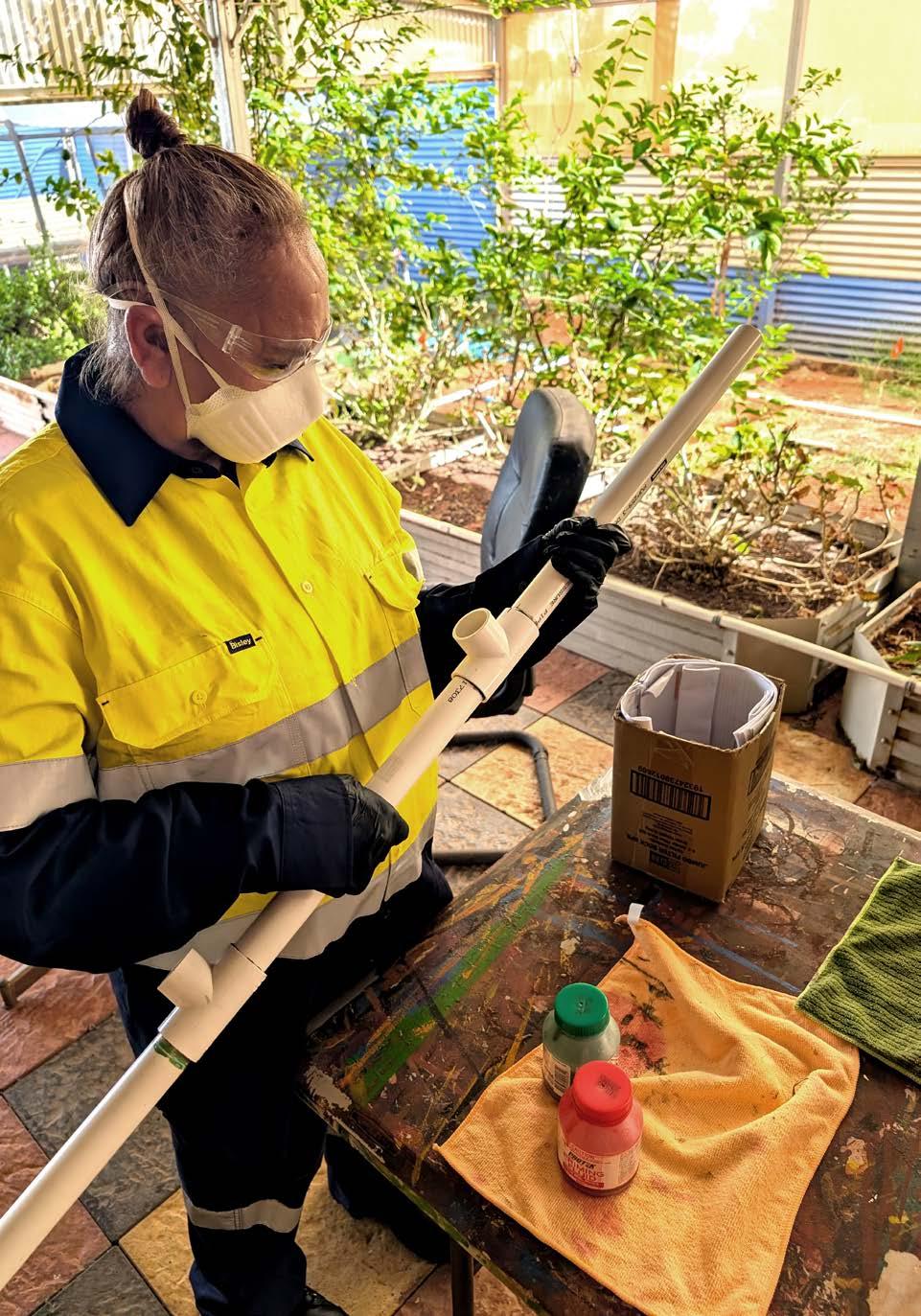
Flexible training solutions
Not everyone learns best in a traditional classroom setting with a trainer, a TV, and a workbook full of questions.
Customised workshops take a different approach. They are flexible, fitting around individual schedules, employment, and seasonal work demands – this is important in our industry. They also cater to various learning styles, making it easier for everyone to build skills, no matter their experience or education level. These workshops will focus on hands-on learning, with knowledge gained naturally through workplace discussions.
Customised workshops take a different approach. They are flexible, fitting around individual schedules, employment, and seasonal work demands – this is important in our industry.
Integrating micro-credentials
Customised training can incorporate micro-credentials – targeted, short training sessions that rapidly build specific skills.
Some examples are:
• Basic Concepts of Irrigation Pumping Systems
• Irrigation Efficiency and Practical Skills Irrigation and the Environment
• refresher sessions in Electrofusion and Butt Welding.
Micro-credentials often award digital badges, which complement traditional certifications and give participants tangible proof of their competencies. These verifiable digital credentials enhance employment opportunities, allowing jobseekers to highlight their practical skills online to potential employers.
Customised workshops and microcredential courses deliver immediate, hands-on experience that is directly relevant to industry needs. Participants can improve their employability, job satisfaction and career development.
A major advantage of customised workshops is their integration with recognised qualification frameworks. Participants gain practical skills and clearly defined pathways to certifications such as the Certificate III in Irrigation Technology. This structured progression motivates learners, supports career development, and encourages continuous professional advancement.
Community feedback shows just how valuable these customised workshops are. Participants appreciate having access to quality training that suits local needs, even in remote areas. They gain confidence, better employment prospects and stronger engagement in learning. Prospective employers also benefit, as they can hire candidates who have local training, are keen to learn new skills, and are working towards qualifications in the irrigation sector.
The Leonora approach, developed and delivered by Irrigation Training Australia RTO #91313, provides a model that can be used elsewhere. Training – whether accredited or not – can be designed around community and individual needs. In 2025 we aim to expand our range of microcredentials and digital badges.
Customised training workshops help build a strong, skilled workforce. Investing in training and micro-credentials isn’t just useful – it’s essential for the future of our industry. As the sector evolves, this training approach will continue to play a key role in preparing professionals for the opportunities and challenges ahead. Every career path needs to start somewhere.
For more information, visit our training webpage or contact us at Irrigation Australia: P: 07 3517 4000, E: training@irrigation.org.au
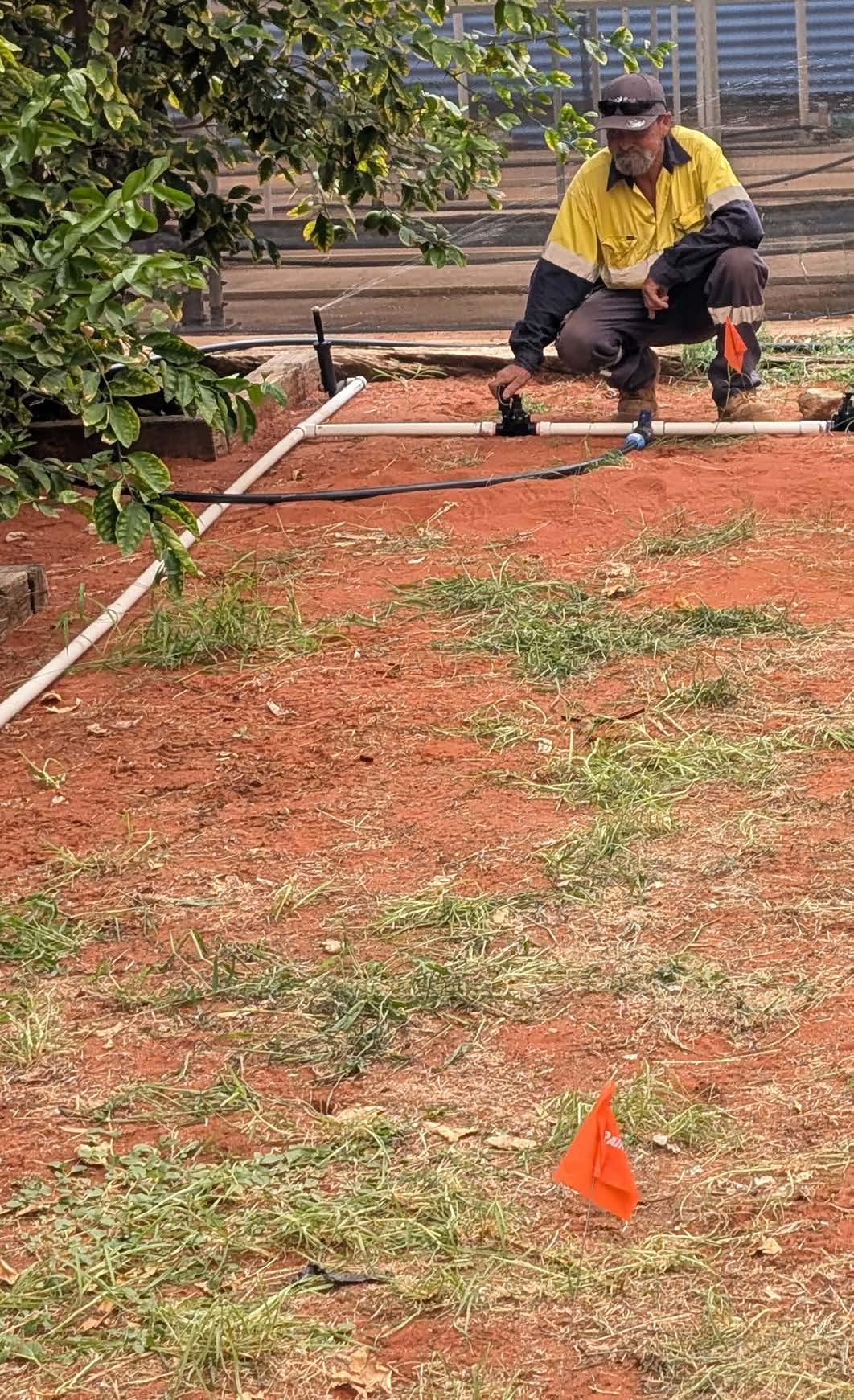
Customised training workshops help build a strong, skilled workforce. Investing in training and micro-credentials isn’t just useful – it’s essential for the future of our industry.
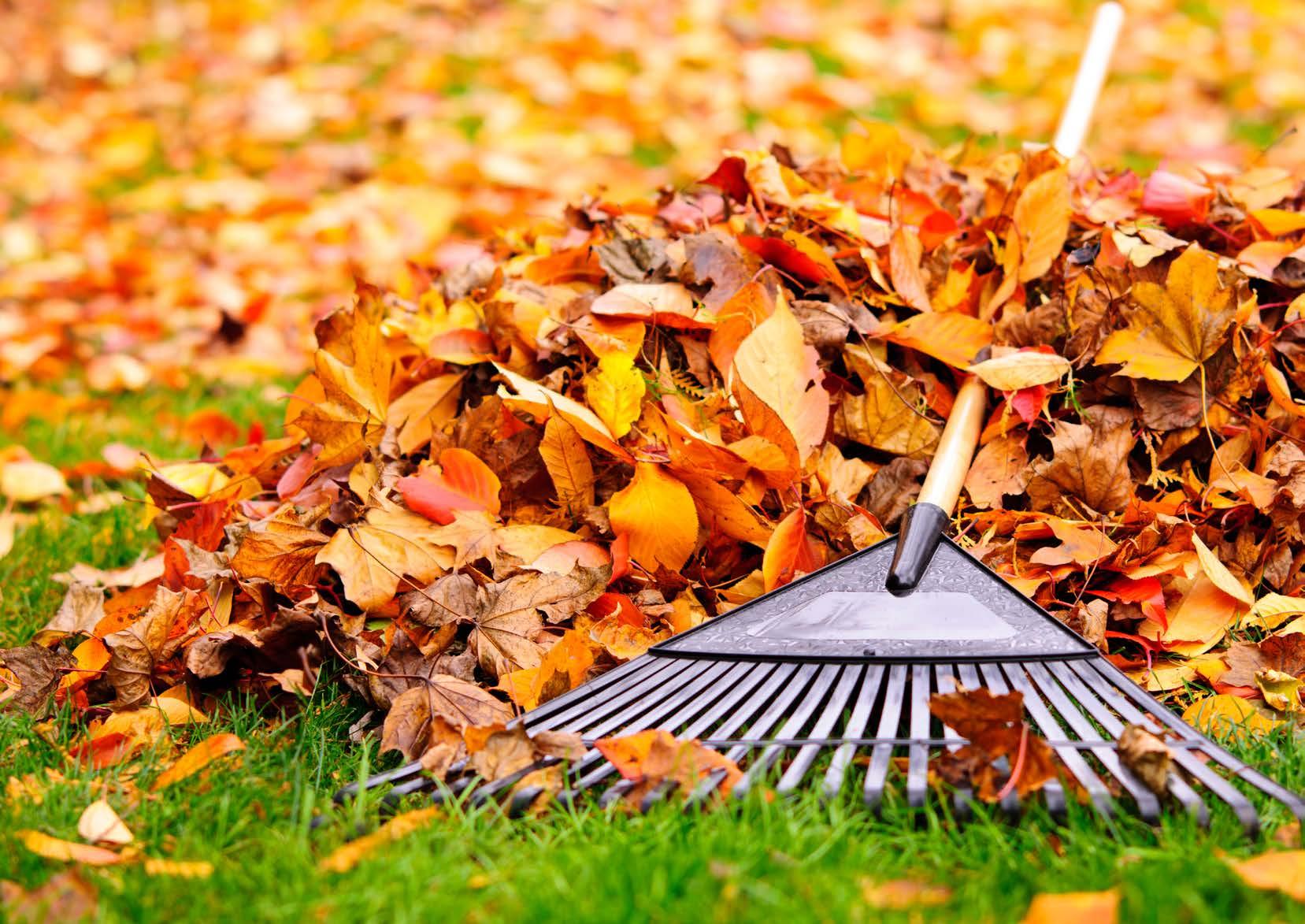
As seasons shift and the long days of summer give way to the cooler air of autumn, many in the irrigation and agricultural industries feel the change not just in the environment but also in their mental well-being. Seasonal change can have profound effects on mood, enthusiasm and motivation. Autumn in particular, can present unique challenges as workloads adjust and daylight hours lessen.
The impact of seasonal change on mental health
Research shows that seasonal transitions can affect mental health. Seasonal Affective Disorder (SAD) is a form of depression that follows the seasons and can be made worse by reduced daylight and changing routines (Melrose, 2015). While SAD is commonly associated with winter, autumn can also bring feelings of fatigue, low energy, and anxiety about the months ahead.
For workers in the irrigation sector – many of whom operate in remote rural areas –these seasonal shifts can be compounded by the physical demands of the job, isolation, and unpredictable workloads.
The increase in seasonal demand in certain regions adds pressure, sometimes leading to burnout and fatigue (Safe Work Australia, 2023). Acknowledging these mental health challenges is the first step in addressing them.
Unlike urban workplaces, regional areas often lack direct access to mental health resources, making it essential to encourage conversations and support networks within the community. Organisations like TIACS (This Is A Conversation Starter) bridge the gap by providing free, professional mental health support to workers in trade and rural industries. TIACS’ model ensures that those in isolated regions can access the help they need without financial barriers, offering support via phone and text services.
Australian Workplace Health and Safety (WHS) laws state that employers have a duty of care to provide a safe and
healthy workplace, including addressing psychological risks (Work Health and Safety Act, 2011). Safe Work Australia identifies work-related psychological hazards, such as excessive workload, isolation, and poor organisational culture, as key risk factors for mental health issues. Employers are encouraged to implement controls such as:
• Regular mental health training and awareness programs.
• Flexible work arrangements where possible, to support work-life balance.
• Encouraging open communication and a positive workplace culture.
• Ensuring workers have access to Employee Assistance Programs (EAPs) and mental health resources.
Autumn is a prime time to reinforce the message that mental health is just as critical as physical safety. Encourage open conversations among teams, check in on colleagues, and take proactive steps to manage stress.
Toolbox talks are a great way to start a conversation around mental health and to get on top of SAD before it really takes off.
1. Prioritise daylight exposure – With shorter days, maximising natural light is crucial. Natural light helps regulate mood and sleep patterns and can help take the gloom out of the day.
2. Stay connected – Social isolation is a risk factor for declining mental health. Encourage connection through community groups, sporting clubs, industry networks, or a simple chat with a co-worker.
3. Seek professional support – Services like TIACS provide free access to mental health professionals who understand the unique pressures of working in rural settings and remote workplaces.
4. Monitor workload and fatigue – To prevent more severe mental health issues, recognise the signs of burnout and take proactive steps to rest and recover.
5. Normalise the conversation – Employers and industry leaders can encourage open discussions around mental health, reducing the stigma that is too often attached to the conversation. Promote a culture where workers feel safe to seek help.

As autumn sets in… It’s important to remember that just like in nature, change isn’t always predictable. The leaves may not drop exactly when expected, or where we may expect them to – almost certainly they won’t drop in the mulch heap. The same goes for our mental health, we need to ‘rake up and deal with those bits that fall outside the comfort zone’. By recognising the impact of seasonal shifts and taking positive steps to support mental well-being both individuals and the entire industry will benefit.
Social isolation is a risk factor for declining mental
health. Encourage connection through community groups, sporting clubs, industry networks, or a simple chat with a coworker.
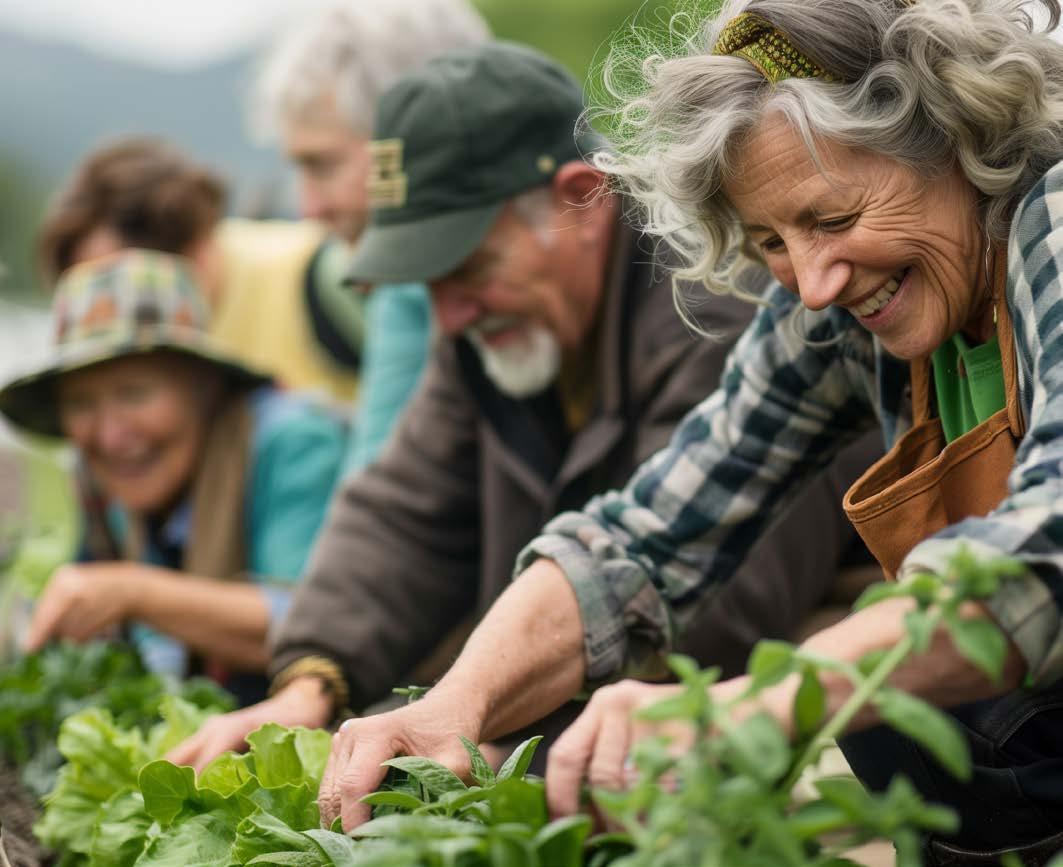
A pile of leaf litter, when controlled and well maintained, provides nutrient and influences soil and crop health. Control and manage your mental leaf litter and see how it benefits you. Particularly in those autumn months when your Leaves Don’t Always Drop as Expected.
If you or someone you know is struggling, TIACS is an invaluable resource. Their free, confidential support service is available to anyone in the trade and rural sectors, including the Irrigation Industry. Some of us can recall the inspiring address at last year’s conference in Sydney by Jason Banks. Call or text 0488 846 988 to start the conversation.
Further information and training For additional support and training on workplace mental health, visit:
• Safe Work Australia: https://www. safeworkaustralia.gov.au TIACS: https://www.tiacs.org
• Beyond Blue: https://www.beyondblue. org.au
• Black Dog Institute: https://www. blackdoginstitute.org.au/
• WorkSafe (State-based safety regulators): Visit your local WorkSafe website for specific guidance on psychological health and safety.
References
• Melrose, S. (2015). Seasonal Affective Disorder: An Overview of Assessment and Treatment Approaches. Depression Research and Treatment, 2015, 1-6. https://doi.org/10.1155/2015/178564
• Safe Work Australia. (2023). Workrelated psychological health and safety: A systematic approach. Retrieved from https://www.safeworkaustralia.gov.au
• TIACS. (2024). This Is A Conversation Starter. Retrieved from https://www. tiacs.org/


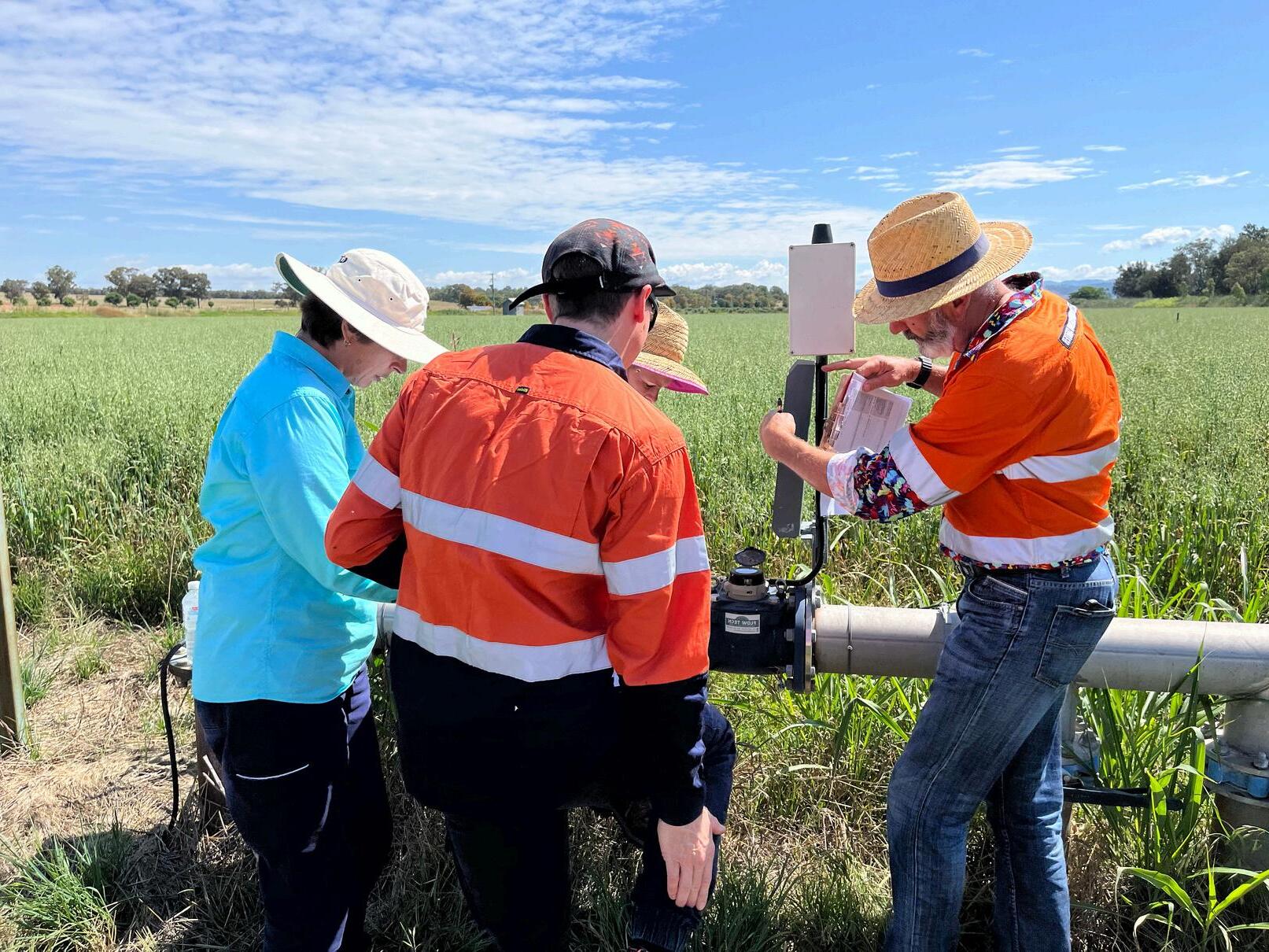
Expand your opportunities in an industry full of growth!
Irrigation Australia provides a wide range of high-quality training programs, delivered by industry experts who are passionate about the training that they are delivering.
We provide a unique blended learning experience, focusing on a practical approach, which allows our students to learn by doing!
PRACTICAL FOCUS
BLENDED LEARNING
COURSE VARIETY
REGISTER YOUR STAFF FOR A PRIVATE IRRIGATION TRAINING COURSE!
Irrigation Australia is proud to offer tailored training solutions for private groups across the country. Whether you’re part of a company, community group, or organisation, our industry-recognised training programs are designed to meet your unique needs
With a minimum group size of 8-10 participants, we provide flexibility in course content, resources, equipment, and trainer selection, ensuring the training aligns perfectly with your goals.
Get in touch today to discuss how we can bring customised, high-quality irrigation training directly to you! Email Sam.OBrien@irrigation.org.au for more information
15 Knowledge pathways to discover!
PROFESSIONAL DEVELOPMENT
Are you interested in training but can’t find the right program, location, or dates that suit you?
Click here to complete our easy Expressions of Interest form and our team will be in touch soon!

Surveying water storage for future metering.
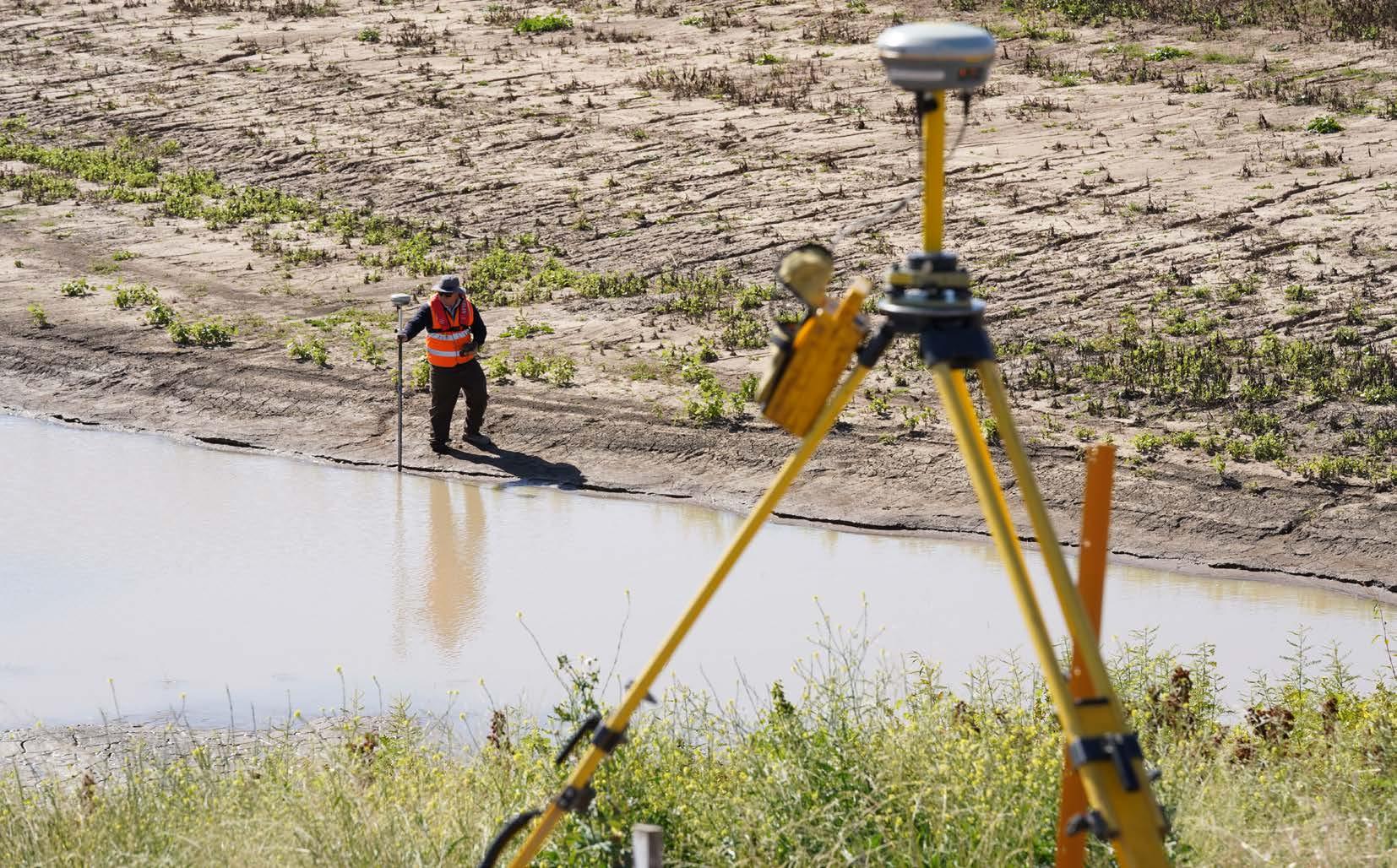
NSW has introduced a metering system for floodplain harvesting in the northern Murray–Darling Basin, with about 80 per cent of the total volume of licences issued.
Floodplain harvesting, previously unmeasured, is now tracked to improve transparency and sustainability.
Water is metered using storage-level measurement (radar sensors or pressure transducers) or point-ofintake meters, with data sent via telemetry.
Implementation challenges include a shortage of qualified professionals for meter installation and telemetry coverage gaps in remote areas.
While compliance obligations have increased, Dan Connor, Director of Metering and Licensing at the NSW Department of Climate Change, Energy, Environment and Water, says that reliable measurement is expected to build public trust and improve on-farm water management.
Ongoing system improvements and collaboration between government and industry are needed for effective implementation.
After years of debate and policy development, New South Wales has introduced a metering system for floodplain harvesting to improve accuracy and transparency of water taken in the northern Murray–Darling Basin. With around 80 per cent of intended licences now issued, floodplain harvesting – which was previously unmeasured – is now being tracked for the first time.
Floodplain harvesting has been a controversial issue, with concerns about fairness, transparency and sustainability. But with the new metering rules in place, irrigators in northern NSW must now measure and report the water they collect from floodplains.
According to Dan Connor, Director of Metering and Licensing at the NSW Department of Climate Change, Energy, Environment and Water (DCCEEW), this shift marks a major change in how floodplain harvesting is managed. "Floodplain harvesting metering wasn’t possible without a licensing framework in place," Connor explains. "With the licensing framework now in place, we can require metering for floodplain harvesting. This is a significant step forward in water management in NSW.”
The new system ensures that water harvested during floods or heavy rainfall –typically stored for later irrigation use – is recorded and monitored within a regulatory framework.
How is floodplain water being metered?
There are two main ways to meter floodplain harvesting, depending on how water moves through each property.
1. Storage-level measurement (about 85 per cent of users). Most irrigators are metering their floodplain water based on changes in on-farm storage levels. Two types of technology are used:
• Radar sensors – measure water levels by detecting the distance between the sensor and the water surface – from the top down. This technology is widely used in mining and petroleum industries and is used in agriculture in on-farm management systems but is new to floodplain water measurement
Pressure transducers – submersible devices that release gas pulses and measure pressure differences between the sensor and the water surface – from the bottom up. This method has been used in river gauging worldwide but is being applied to floodplain harvesting for the first time.
Both technologies send data via telemetry to the department and to the regulator, allowing for real-time monitoring and compliance.
To ensure accuracy, all water-level measurements in these on-farm storages must be converted to a volume. "One of the key requirements is that these on-farm
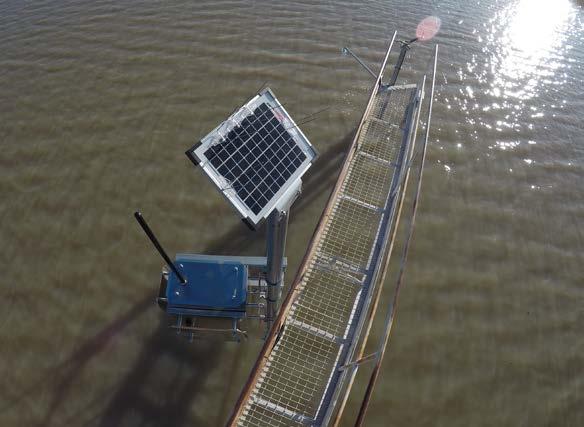
storages be professionally surveyed to establish an accurate relationship between water level and storage volume and to align all level measurements to the Australian Height Datum (AHD)," Connor explains
2. Point-of-intake meters. For some properties, it is easier to measure water at the point where it enters the farm. These ingress meters work like traditional nonurban water meters, are pattern approved by the National Measurement Institute and are installed in compliance with AS4747 standards at water entry points.
Transitioning to metered floodplain harvesting has come with challenges. The diversity of properties means there is no simple, one-size-fits-all approach, and irrigators have had to adjust to new compliance requirements.
One major challenge has been a shortage of certified professionals to install and verify meters and to survey storages – referred to as Duly Qualified Persons (DQPs). "There’s been a shortage of both meter installers and surveyors," Connor says. "The demand for surveyors, especially with competing infrastructure projects, has slowed progress. But we’re working with industry to address these bottlenecks, including subsidising training courses."
Another challenge has been telemetry coverage in remote areas, which is essential for automatic data reporting. While most properties transmit data in real time, a "black spot" exemption allows for manual reporting where necessary. The department is reviewing telemetry requirements to improve system reliability, usability and utility.
While the floodplain harvesting licensing is a significant step forward in water management, industry representatives have raised concerns about the implementation of the framework. The NSW Irrigators’ Council (NSWIC) supports the need for floodplain harvesting measurement but is
concerned about its complexity, arguing that it is too prescriptive. There have been several regulatory changes to address some of these problems, but the pathway to compliance remains challenging.
“Despite efforts to comply, many water users face barriers beyond their control, including issues with accuracies of works approvals, delays in meter installation and a lack of duly qualified professionals to complete the required work,” an NSWIC spokesperson said.
The Council also notes that water users need greater access to their own metering data in real time, rather than relying on daily reporting, to better manage their water use. Additionally, they have raised concerns about the financial burden of compliance and the economic impact of reduced floodplain harvesting allocations.
Connor says that for irrigators, the shift to metering means new compliance obligations but also potential benefits. Reliable, tamper-evident measurement helps to build public trust in the industry, providing transparency and addressing concerns about water use.
Some irrigators also see opportunities to use metering data beyond compliance, integrating it into on-farm systems for better water management.
While the licensing and metering system is well underway, there is still work to be done. Connor says ongoing improvements will be needed to keep the system practical and effective.
"The job is never done, there is always room for improvement," he says. "We need to continually review our processes, improve technology, and work with industry to ensure effective implementation."
Irrigation Australia continues to offer training and certification programs for DQPs. We have made major improvements to course content in the last few months and are developing more flexible delivery options.
We are in regular discussions with the department to ensure changes to policy are communicated effectively and look forward to working with all stakeholders including DCCEEW to help ensure a practical approach to the rollout of new floodplain requirements.
Find out more about Irrigation Australia’s certification programs here
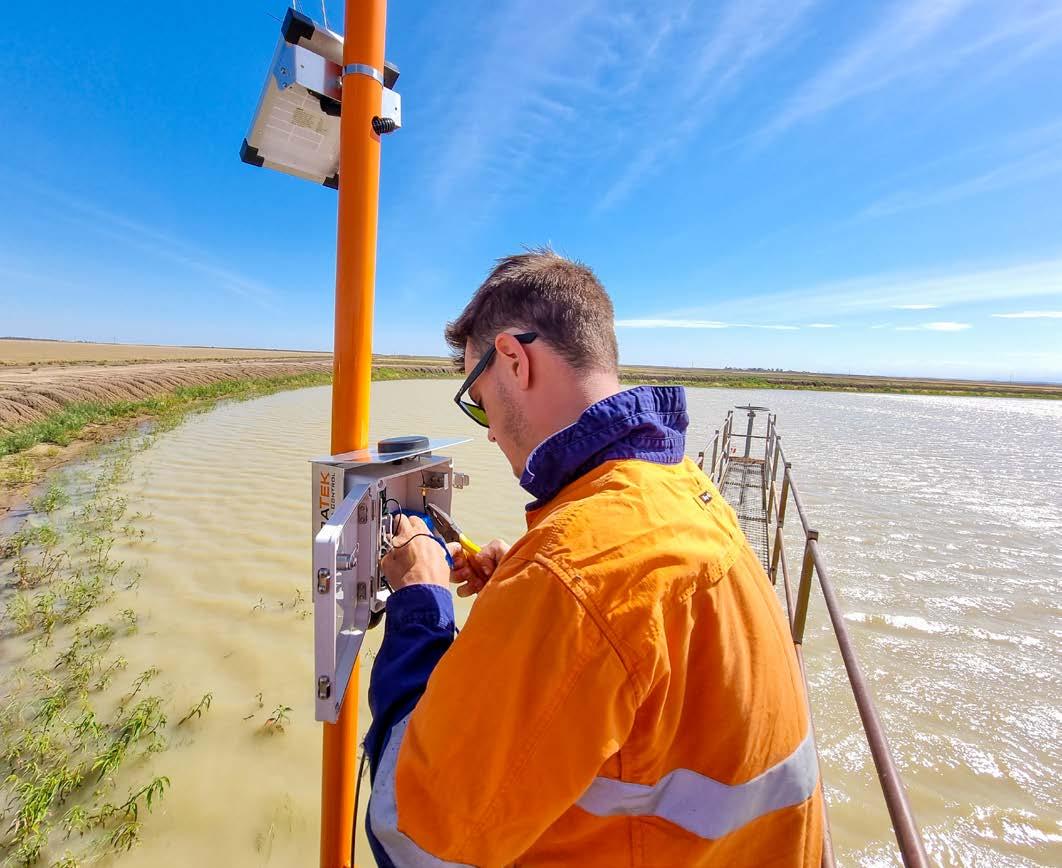
The newly redeveloped sports oval at MacPherson Park Recreation Reserve, irrigated using a VSDcontrolled pump system for improved efficiency and reliability.

MacPherson Park Recreation Reserve in Melton, Victoria, recently upgraded its irrigation system to improve efficiency and reduce costs.
The project included Australia’s first installation of the Hydrovar X variable speed drive.
The system uses two Lowara e-SV 10SVX06 pumps with variable speed technology, reducing energy use and equipment size.
Smart controls, including Bluetooth connectivity, allow real-time monitoring and adjustments.
A rain sensor prevents unnecessary irrigation, and a brick pump house enhances security.
The new system operates more quietly and efficiently than previous setups, with positive early feedback from users.
Managing energy and water use efficiently is critical in large irrigation projects, where operating costs and sustainability go hand in hand. Variable speed drives (VSDs) offer a cost-effective solution by adjusting motor speed to match demand, reducing energy consumption, lowering running costs, and extending equipment lifespan. MacPherson Park Recreation Reserve in Melton, Victoria, recently put this technology to work as part of a major redevelopment. With a newly developed sports oval and a growing number of users, the reserve needed an upgraded irrigation system that could balance performance, reliability, and cost efficiency.
To achieve this, the principal consultant, local council, and Brown Brothers Engineers Australia collaborated to install Australia’s first Hydrovar X
VSDs. These advanced drives allowed for a smaller pump and motor size, reducing both upfront investment and ongoing operational expenses − without compromising irrigation performance.
David Gardiner from ULS Group led the installation of the pumps and supporting infrastructure, working with Brown Brothers Engineers’ Business Development Manager Michael Garas on system specifications.
The irrigation system was designed to deliver 6.32 L/sec at 650 kPa, ensuring the optimal balance between performance and energy efficiency.
To achieve this, two Lowara e-SV 10SVX06 pumps, each fitted with a Hydrovar X VSD, were installed in parallel. This configuration allowed the pumps to share the workload, improving efficiency while
ensuring increased redundancy due to the wider performance envelopes of each pump.
The VSDs played a key role in reducing system size and costs. They adjust pump output to meet demand, ensuring efficient energy use while maintaining the required pressure for irrigation.
“The original design specified dual 10-stage pumps with 4.0 kW motors,” Michael explained. “By incorporating Hydrovar X, we were able to downsize to 6-stage pumps with 3.0 kW motors. This reduced both upfront supply costs and long-term energy consumption.”
The system includes additional features to improve reliability and simplify maintenance. An INCA surge protection panel was installed to safeguard electrical components, and the pumps draw water from a rain-fed tank equipped with a rainwater sensor. The sensor ensures that irrigation only occurs when necessary, automatically shutting off the system in periods of excessive rainfall.
The project also included practical design choices to improve durability and security. The pumps were housed in a brick shed rather than a tin enclosure to better protect them against theft. Valve banks were installed off-field, under bench seating, making them more accessible for maintenance while remaining out of sight for aesthetic reasons.

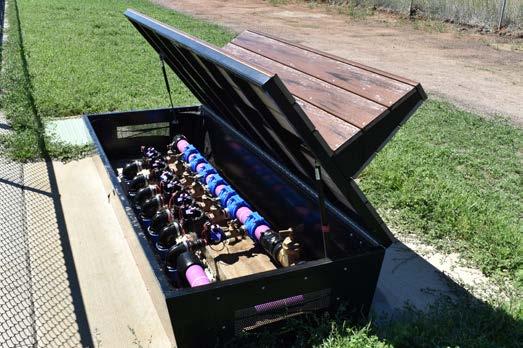
Insert february2025contractorscornerpic3 and february2025contractorscornerpic3
Variable speed drives (VSDs) are particularly useful in applications where:
Caption: The pumps draw water from a rain-fed tank equipped with a sensor (left). Valve banks were installed off-field, under bench seating, making them accessible for maintenance while remaining out of sight.
• water demand fluctuates significantly, such as irrigation systems that operate under varying load conditions
The Hydrovar X offers user-friendly controls that simplify operation. Irrigation managers can make real-time adjustments using Bluetooth connectivity, ensuring efficient performance without needing to be physically at the pump shed.
With the system now fully operational and the turf laid in late 2024, early feedback has been positive, with the client appreciating the ability to monitor and adjust the pump remotely. Key benefits of the upgraded irrigation system include:
• Energy efficiency – Variable speed drives optimise energy use, reducing operational costs.
• Lower maintenance – “With fewer moving parts and a smaller system, we introduce fewer potential failure modes,” Michael noted. “That means less downtime and lower ongoing maintenance costs.”
Two Lowara e-SV 10SVX06 pumps, each fitted with a Hydrovar X VSD, were installed in parallel. This configuration allowed the pumps to share the workload, improving efficiency while ensuring increased redundancy due to the wider performance envelopes of each pump.

• energy savings are a priority, as VSDs adjust pump output to match demand, reducing unnecessary power consumption
• equipment lifespan is a concern, as VSDs help reduce wear and tear by minimising abrupt starts and stops
• noise levels need to be controlled, as VSD-driven pumps typically operate more quietly than fixedspeed alternatives.
A built-in Setup Genie streamlined the initial configuration, while Bluetooth connectivity enabled technicians to monitor and adjust settings via a smartphone app. According to Michael, one of the biggest advantages of this system is that technicians can step away from the pump shed and fine-tune the system in real time while observing rotor performance on the oval.
However, VSDs may not be necessary or cost-effective in cases where:
• the system operates at a consistent load, with little to no variation in demand
• the additional upfront cost of a VSD does not justify the expected energy savings over time
• simpler, on/off pump control is sufficient for meeting operational needs.
Another key function, the advanced pipefill mode, gradually fills pipes at a lower speed, preventing pressure fluctuations that could trigger nuisance tripping or damage pump components. Once fully pressurised, the controller transitions smoothly to full operating speed.
• Quiet operation – “Compared with the park’s other ovals, this system is noticeably quieter,” David said. “We’ve installed many Lowara pumps, but these ramp up more quietly and operate smoother, making a real difference in day-to-day operation.”
• Improved sustainability – Smaller, lighter pumps reduce material use and energy consumption, lowering the system’s overall carbon footprint.
• Remote monitoring and control – The system allows real-time adjustments via Bluetooth, improving usability and efficiency.
With variable speed technology and smart controls, the project team created an efficient, cost-effective, and sustainable irrigation system for MacPherson Park Recreation Reserve.
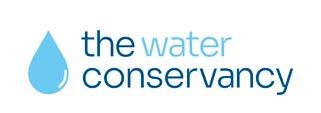
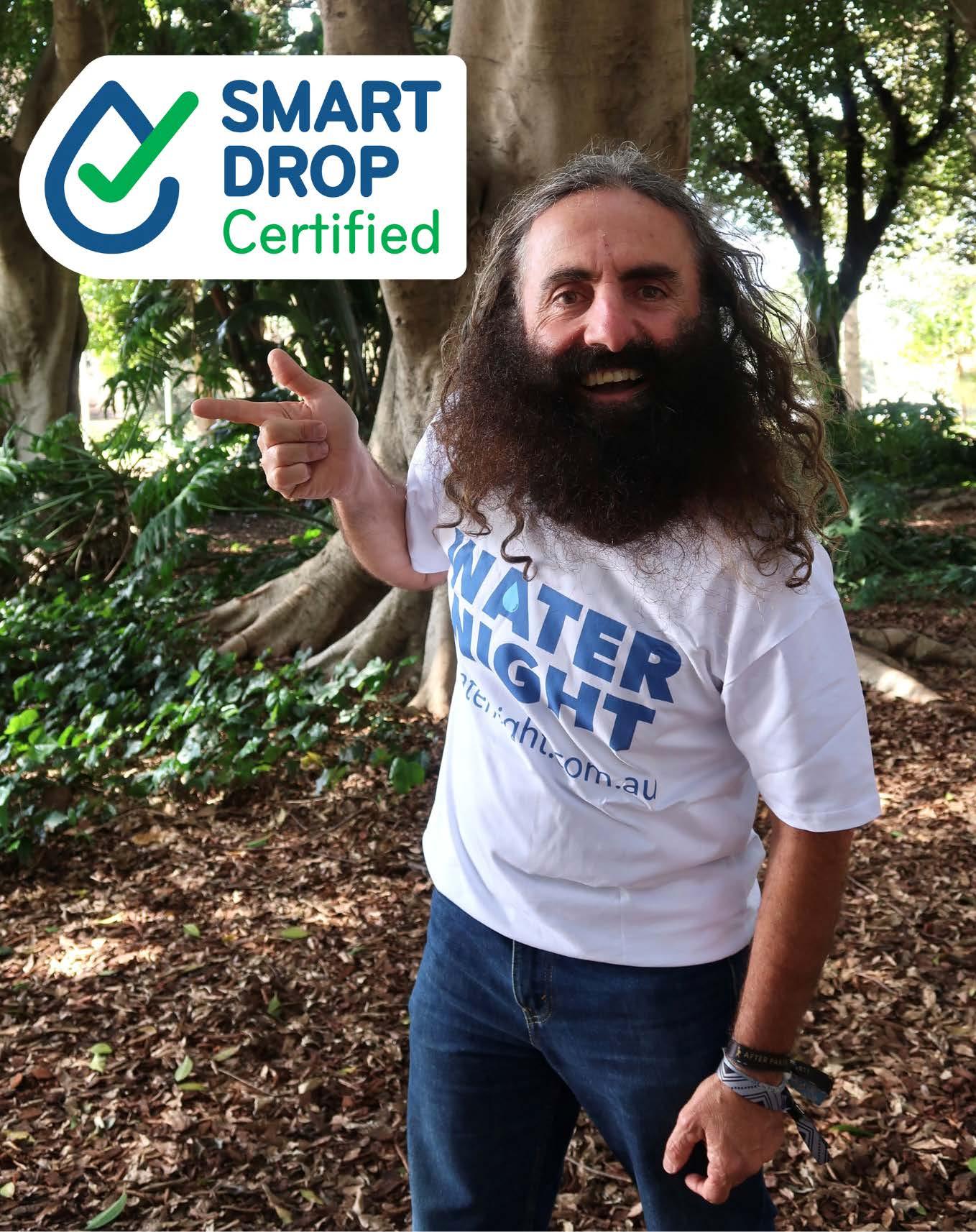
Australians are increasingly considering the environmental and ethical impact of their purchases. Multiple sustainability labels exist, but transparency varies.
Smart Drop Certified, formerly Smart Approved WaterMark, is a trusted, independent certification for watersaving products.
This article outlines the certification criteria and how irrigation companies can benefit from Smart Drop certification.
As Australian consumers become more aware of the environmental and ethical impacts of their purchases, manufacturers are keen to meet this demand. With dozens of eco, ethical and sustainability labels on the market, navigating certifications can be confusing. While some certification schemes are transparent about their assessment methods, others are less clear. Smart Drop Certified, formerly Smart Approved WaterMark, is a widely recognised and trusted certification in Australia. With a strong presence in the irrigation sector, it has established itself as the go-to label for water-saving products for homes and gardens.

Smart Drop Certified is a label that consumers trust. It simplifies product selection, streamlines rebate management, and encourages manufacturers to innovate. Smart Drop is rigorous in its independent assessment of claims.
To date, 24 irrigation companies have products that are Smart Drop certified. The companies benefit from:
• Credible, independent endorsement –companies can add the logo to product packaging, marketing materials, websites, social media posts and expo stands.
• Qualification for Waterwise Accreditation under Water Corporation in Western Australia.
• Eligibility for water utility rebate offers – Smart Drop is the standard governments and water utilities use to identify rebate-eligible products such as:
- SA Water Wifi Irrigation Rebate
- Water Corporation Wifi Irrigation Controller Rebate
- Tamworth City Council Pool Cover Rebates.
• Annual award opportunities – certified products can be entered for the Smart Drop Excellence Awards (opening July 2025).
• Full product listing at www.smartdropcertified.org
• Industry networking and promotion
– Smart Drop is owned by the Water Services Association of Australia and is managed by The Water Conservancy –both well-connected in the water sector.
To be eligible for certification, products and services must meet all of the following criteria and provide verifiable evidence.
The primary purpose of the product or service must be to reduce water use or to improve water efficiency, with a direct correlation between use of the product and water savings.
• The Independent Expert Panel requires all claims – especially water-saving claims – to be independently verified through testing, case studies or comparative reports.
• Applicants must demonstrate how the product achieves water-savings and
calculate the amount of water it saves. Unsubstantiated marketing claims do not qualify as evidence.
2. Fit for purpose.
The appropriate product or service must be used as intended and align with supplied instructions.
• Applicants must provide examples of the instructions that customers receive.
The product or service must meet industry standards and regulatory requirements.
• Proof of compliance often requires thirdparty verification.
• Applicants must provide certificates or evidence of compliance with national and state regulatory, health, plumbing (WaterMark), and electrical standards requirements.
• All plumbing and drainage products must have WaterMark certification.
• Applicants should check the WaterMark Schedule of Products or visit the Australian Building Codes Board site to confirm requirements.
• Greywater products sold in WA must be approved by the Department of Health.
• All pool and spa covers must have the SAWM Fit for Purpose Certificate.
4. Environmentally sustainable
The product or service must be environmentally sustainable, and not negatively impact the environment in other areas, despite its ability to save water. Note that services provided by a manufacturer to assist in sales will not be considered. Applicants must provide evidence that the product does not harm the environment.
• If there are potential health or environmental risks, applicants must submit safety data sheets (SDS) or other consumer safety information.
Have a product or service that meets the criteria? If your product or service qualifies, apply for certification at www. smartdropcertified.org
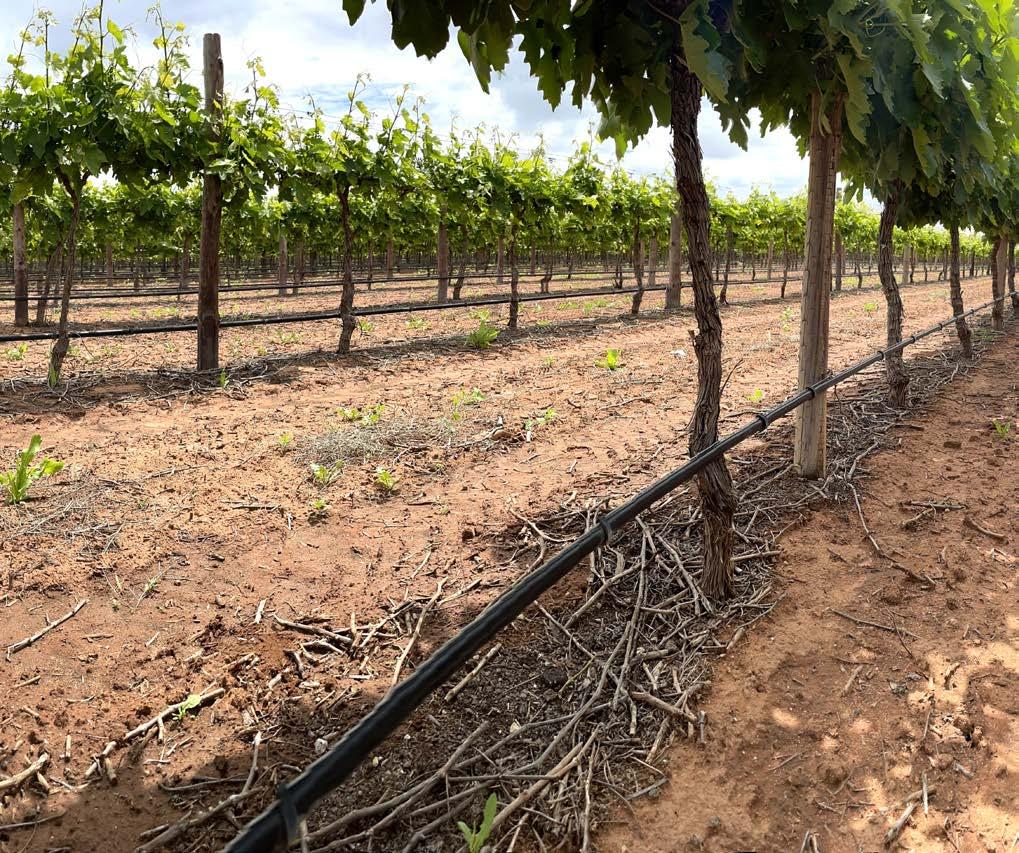
A case study on how climate change affects vineyard irrigation in the Riverland is helping a Basin-wide project guide other growers in making informed water decisions.
Researchers from the South Australian Research and Development Institute (SARDI) used climate, soil and crop data to project future changes in rainfall, temperature and evapotranspiration (loss of water from plants, soil and other surfaces due to evaporation and transpiration) – key factors affecting irrigation demand.
Findings showed a 27 per cent decline in seasonal rainfall and an 8.2 per cent increase in evapotranspiration by 2099. As a result, irrigation needs in the
Loxton region are expected to rise by 4.2 per cent by 2039 and up to 17 per cent by the end of the century, driven mainly by reduced rainfall.
The study validates the One Basin CRCbacked project, ‘Predicting the impact of climate change on irrigation demand across the One Basin’, a Charles Sturt University and SARDI collaboration, which will model future irrigation needs for almond, wine grape, cotton, and rice growers (incorporating grower insights). Future phases aim to develop geospatial irrigation demand maps, improving water resource planning.
Information. Read more on the One Basin CRC website
Get involved in testing AgTech Finder’s new features
AgTech Finder is an independent marketplace designed to help Australian farmers and producers search, filter, and compare AgTech solutions. This initiative, led by Food Agility CRC, is undergoing improvements to make technology discovery even easier.
Click HERE to view a complete list of water-saving products certified under Smart Drop
To refine the product directory, they need testers! Whether you're a farmer or a tech enthusiast, your feedback can help refine the platform. If you're keen to help, send an email to info@agtechfinder.com
BY EVE WHITE, IRRIGATION AUSTRALIA
While many in the irrigation industry have deep technical expertise, fewer combine it with strong leadership and a commitment to mentoring others. Stephen Jennings is one of those rare individuals, and his dedication was recently recognised with an Irrigation Australia award. We caught up with the Franklin Electric national sales manager to discuss his career journey, the industry's biggest challenges, and the future of pumping technology.
Stephen Jennings has built his career on innovation, efficiency, and a commitment to mentoring others. His dedication to improving pumping operations and sharing industry knowledge earned him the Emerging Leader Award at the Irrigation Australia Conference last September. Now, as national sales manager at Franklin Electric, he is focused on driving sustainability and adopting new technologies to strengthen the industry’s future.
“I’ve always believed that passing on knowledge is the only way our industry will continue to grow,” he says. “If we don’t teach the next generation, we lose valuable skills.”
A career built on learning and leadership
Stephen began his career as a fitter machinist at Brown Brothers Engineers Australia, where he developed expertise in pump assembly, servicing, and troubleshooting. He credits early mentors Stephen Johnstone and Leo Spoor for shaping his technical foundation and leadership skills, eventually leading him to a workshop management role.
“That early experience gave me a real appreciation for problem-solving,” he says. “It taught me that every system has its inefficiencies, and it’s up to us to identify and fix them.”

His career later took him into drainage, sewer systems, and control system manufacturing, expanding his knowledge of pump controls and circuitry. This technical expertise opened the door to Franklin Electric, where he started as a technical service manager before transitioning into sales and leadership.
Encouraged by mentor Malcolm Eyre, Stephen moved back to Brown Brothers to develop his sales skills before returning to Franklin Electric – this time in a senior leadership role. Now, under the guidance of managing director Vic Tannin, he continues to refine his approach to strategic growth and problem-solving.
Stephen’s leadership is rooted in his belief that the industry’s future depends on empowering the next generation. “I’ve been lucky to learn from great leaders along the way,” he says. “Now, my goal is to pass that knowledge on and help others grow into their potential.”
Challenging the status quo in pumping efficiency
Stephen believes that real efficiency gains in pumping don’t just come from incremental improvements in pump design but from rethinking system design and embracing smarter motor technologies.
“Pumps haven’t changed dramatically in efficiency – it’s physics. But where we see major gains is in system design and energy management.”
The biggest shift in recent years has been the adoption of variable frequency drives (VFDs) and permanent magnet motors, which significantly reduce energy consumption. However, traditional installation practices and upfront costs continue to slow widespread adoption.
“It’s an education challenge. Many still rely on old techniques, but when we can demonstrate real power savings and payback periods, we start to shift mindsets.”
Another key challenge is irrigation system design, particularly mainline sizing, where undersized systems lead to higher friction losses and increased energy costs.
“Irrigation design has come a long way, but we still see systems that aren’t optimised. The good news is that awareness is growing, and we’re seeing more emphasis on education and best practices,” Stephen noted.
Looking ahead, Stephen sees AI-driven pump control as the next major leap in efficiency and energy management.
“Right now, pump control is reactive. AI could change that – allowing systems to make smarter decisions in real time based on demand, energy availability, and cost.”
Future systems could automate efficiency improvements, dynamically optimise energy sources (solar, grid, or diesel), and adapt to real-world conditions.
“We’re already seeing interest in hybrid power sources for pumping – AI could take that a step further by selecting the most cost-effective and sustainable option in real time.”
He also believes tighter energy regulations are needed to raise the standard for pump motors.
“We have pretty loose laws around emissions for stationary engines and minimum energy performance standards (MEPS) for electric motors. Strengthening those would stop inefficient products from entering the market and driving down efficiency standards.”
A vision for growth and industry leadership
At Franklin Electric, Stephen is committed to making the company an indispensable partner to its customers by focusing on quality, availability, service, innovation, and cost.
“We’ve built a strong reputation, but we’re not done yet. There’s still so much potential for improving service, availability, and training – not just within our company, but across the whole industry.”
Investing in training, strategic goal setting, and education is key to long-term success.
“We need to invest in people. The more I can empower those around me, the more challenges I can take on.”
For those starting in irrigation and water management, Stephen’s advice is simple:
“Stick at it, push boundaries, and never accept ‘that’s just how we do it.’ Understand every aspect of what you do, and success will follow.”
With water management and energy efficiency more critical than ever, there has never been a better time for young professionals to challenge traditional thinking and drive meaningful change in the industry.
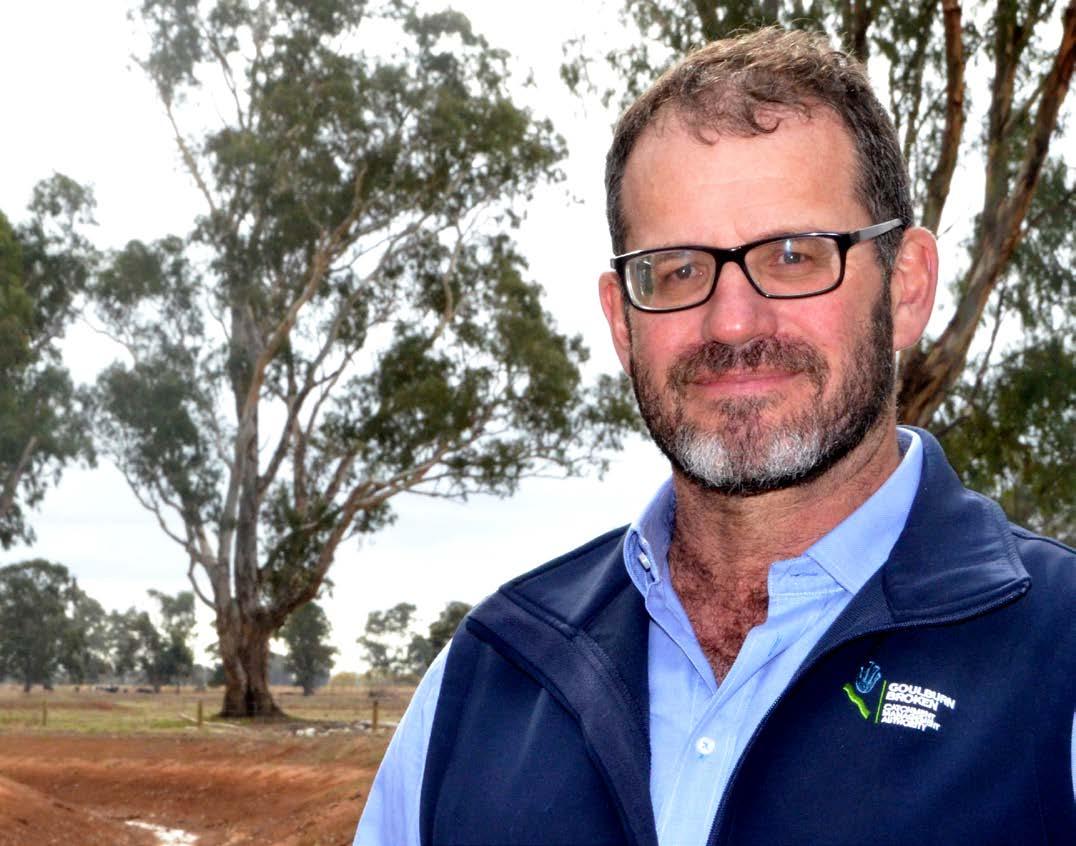
Carl Walters has been appointed CEO of the Goulburn Broken Catchment Management Authority (GBCMA), bringing over 40 years of experience in water and natural resource management in northern Victoria.
Carl has held key roles in sustainable irrigation and river health implementation at the GBCMA, following a 25-year tenure with Goulburn-Murray Water. He says that his leadership will focus on strengthening partnerships, applying research in practical ways, and advancing irrigation practices to address climate change, food production demands, and water management challenges.
As a Director of Irrigation Australia Limited and a Committee member of the International Commission on Irrigation & Drainage Australia National Committee, Carl plays a vital role in shaping water policy and management strategies.
The key challenges ahead for the GBCMA he says, will be balancing environmental and agricultural water needs in the Goulburn River system, supporting communities in adapting to extreme weather events, and enhancing the region’s natural landscapes through collaboration with government, traditional owners, and local stakeholders.
Nutrien Ag Solutions has announced a leadership transition, with Adrian Capogreco stepping into the role of managing director for the company’s Australian operations. Capogreco, previously senior director of finance, brings extensive experience from roles at Nufarm, KPMG, and JP Morgan Chase.
He succeeds Kelly Freeman, who has been appointed executive advisor to Nutrien’s
Latin American operations after leading the Australian business for more than two years.
Nutrien Ag Solutions is one of Australia’s largest agribusinesses, with a national network of over 700 locations. It provides a range of services including agronomy, livestock and wool marketing, water solutions, finance, insurance, merchandise, and real estate.
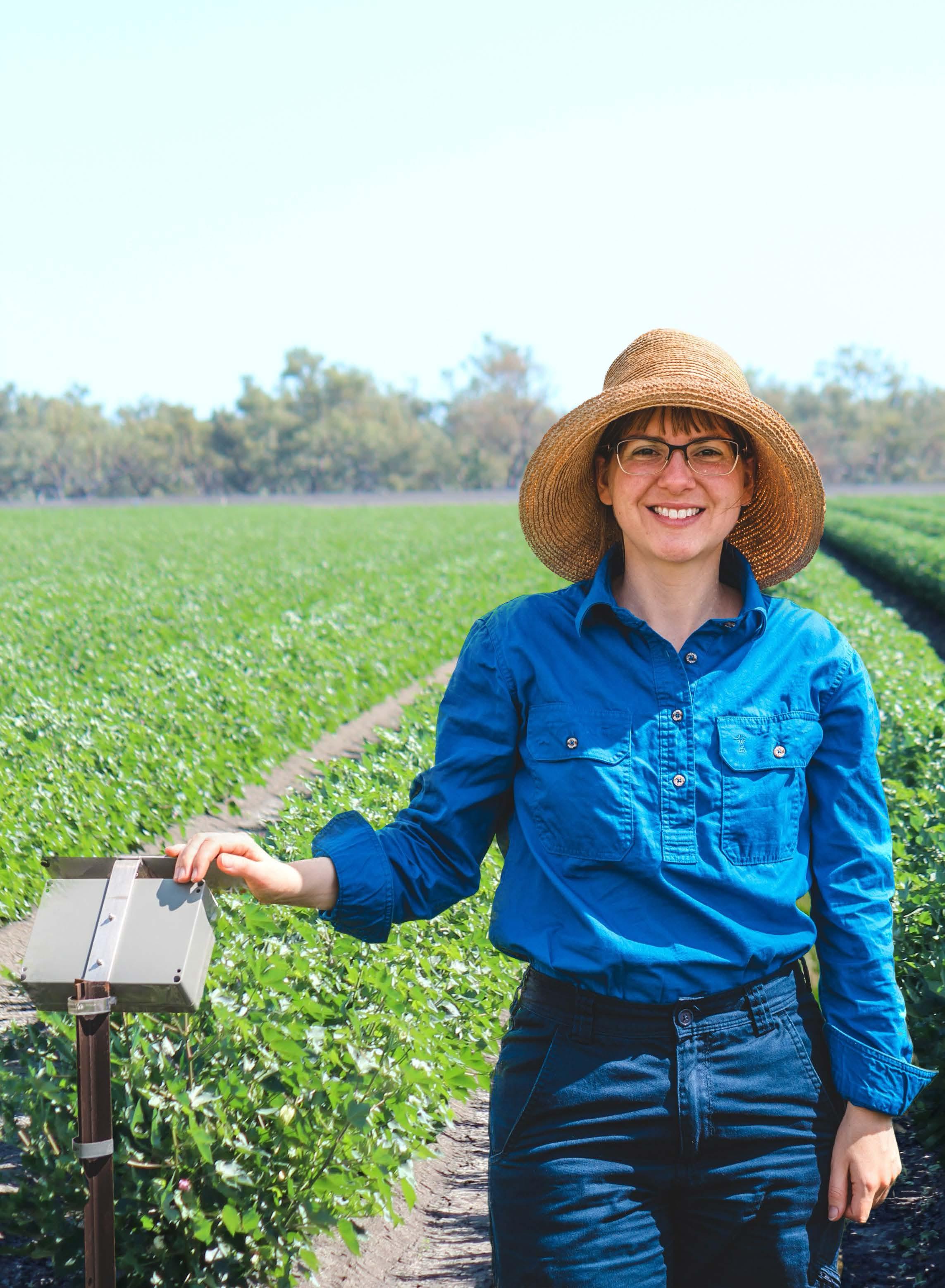

Water scarcity remains a global priority. To highlight excellence in water conservation, the WatSave Annual Awards and World Heritage Irrigation Structure Awards were established by the International Commission on Irrigation and Drainage (ICID). Nominations are now open. The deadline for both awards is 31 May 2025.
WatSave Annual Awards Award Categories:
1. Technology
2. Innovative Water Management
3. Young Professionals
4. Farmers
Winners receive a US$2,000 honorarium and a citation plaque, presented at the annual ICID Executive Council meeting.
If you know an individual or team demonstrating excellence in these areas, now is the time to submit a nomination. Full details HERE
Past WatSave Annual Award winners from Australia
The ICID Australia Committee (IACID) has had some success in nominating Australian professionals in previous years:
• 2022 WatSave Technology Award –Sumith Choy, Varun Ravi, N. Srinivas Reddy, and Satya N. Jaddu for their project improving water efficiency in Karnataka’s irrigation systems through canal automation technology.
2021 WatSave Young Professionals Award – Dr (now Associate Professor) Alison McCarthy (University of Southern Queensland) for developing VARIwise technology, which helps cotton growers optimise water use.
• 2019 WatSave Innovative Water Management Award – James Winter and Tony Quigley for their work on the Trangie-Nevertire renewal project, improving both on-farm and off-farm water efficiency.
These successes highlight Australia’s leadership in water conservation through technology, innovation, and policy.
WatSave Award nomination process
Nominations are open to all Australian professionals and teams who are members of Irrigation Australia. Submissions must be sent to ICID by 31 May 2025 at icid@icid. org. Each member national committee can submit one nomination per category. Full details are available on the ICID website

The World Heritage Irrigation Structures (WHIS) Award recognises both historic and operational irrigation structures of significance. Successful nominees will be included in the ICID Register of Heritage Irrigation Structures and receive a plaque at the 75th International Executive Committee meeting. Full details HERE
• Bleasdale Vineyards Flood Gate; built 1900, Bremer River, Murray-Darling Basin, South Australia.
• Dethridge Outlet/Wheel; built 1910, Tatura, Victoria.
• Goulburn Weir; built 1891, Goulburn River, Central Victoria.
Why nominate?
Show that you recognise and support excellence in water conservation. Submit your nominations today!
Attribution: Goulburn Weir. Mattinbgn, CC By 3.0 <https:// creativecommons.org/ licenses/by/3.0>, via Wikimedia Commons
Momir Vranes (Chair)
Dave Cameron P: +61 7 3517 4001, E: dave.cameron@irrigation.org.au
Naomi Carragher P: +61 7 3517 4002, E: naomi.carragher@irrigation.org.au
Peter Hayes
Eddie Parr
Carl Walters
Richard McLoughlin
Karlene Maywald
Michael Scobie
Claire Miller
Andrew Ogden
Zara Lowien
nebraska.edu/explore-ourconferences/2025-waterfor-food-global-conference
org/
dams.com/africa-2025/
ucdavis.edu/
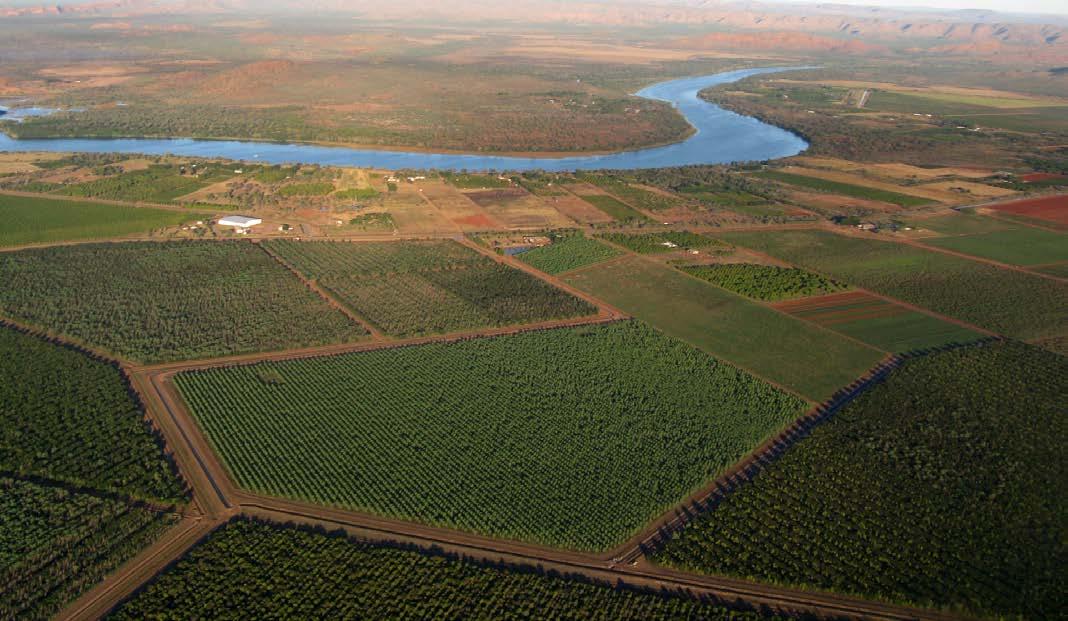
The Australian Government is investing an extra $20 million in the On Farm Connectivity Program (OFCP) to support Australian farmers with cost-of-living relief and improved productivity. This brings the total investment in the program to $53 million, enabling over $100 million in agtech purchases nationwide.
The program is based on the 2021 Regional Telecommunications Review, which found that poor connectivity was limiting the adoption of modern farming technologies.
Previous rounds of OFCP provided rebates of up to 50 per cent – worth up to $30,000 – for eligible equipment and technology. Thousands of farmers have benefited, using ag-tech to monitor activity in real time, improve safety, and enhance productivity.
Following the success of earlier rounds, the government expanded Round 2 funding to $18 million in 2024. Round 3 will open in 2025, with grants distributed in 2025-26. The Department of Infrastructure, Transport, Regional Development, Communications and the Arts says that it will review guidelines to ensure the program continues to meet farmers’ needs.
Source Media release, the Hon Michelle Rowland MP
Information. Learn more about the On Farm Connectivity Program here
The Australian Government is investing over $13 million in four water infrastructure projects across South Australia as part of the $211 million Water Infrastructure for Sustainable and Efficient Regions (WISER) initiative.
The $13.3 million investment comprises $6.6 million in Australian Government funding, through the National Water Grid Fund, and a further $6.7 million from project partners.
The largest project is an $8.8 million extension of the Northern Adelaide Irrigation Scheme (NAIS) recycled water pipeline to Mallala, providing up to 1.3 GL of water per year for high-tech greenhouse vegetable production. Other projects include connecting Wellington East to a drinking water scheme and upgrading wastewater treatment plants in Loxton and Waikerie to supply recycled water.
Source. Media release, the Hon Tanya Plibersek MP, the Hon Susan Close MP.
The NSW and ACT Governments are working together to develop a water trading framework that will release 6.36 GL of environmental water into the Murrumbidgee River. This will help both jurisdictions meet their commitments under the MurrayDarling Basin Plan.
Currently, ACT water cannot be transferred into NSW under existing rules. NSW plans to amend its Murrumbidgee Regulated River Water Source Water Sharing Plan by 1 July 2025 to allow transfer.
Source. Media release, NSW Minister for Water, Rose Jackson.
The Horsham SmartWater Project is an initiative to expand the use of recycled water for agriculture and green spaces. Jointly funded by the Commonwealth Government’s National Water Grid Authority, Agriculture Victoria, and GWMWater, the project includes:
• a desalination plant and upgraded irrigation at Horsham SmartFarm
• a new treatment facility at the Horsham Wastewater Treatment Plant
• a recycled water pipeline to green spaces including the racecourse, cemetery and Dudley Cornell Park
• additional stormwater drainage and green-space connections funded by the Victorian Government’s Integrated Water Management program, Horsham Rural City Council and GWMWater.
With 400 ML of recycled water available annually, local landowners and businesses are encouraged to express interest in using this resource.
Source. GWMWater media release
Information. Find out more on the GWMWater website
Tasmanian Irrigation has launched the second round of water sales for the $301 million Greater South East Irrigation Scheme (GSEIS). This scheme aims to provide reliable and cost-effective irrigation water to landowners in Gretna, Campania, Richmond, Tea Tree, Sorell, and Forcett.
This initiative is intended to transform agriculture in the region, boost local economies, and secure water access for future generations.
Source. Tasmanian Irrigation media release
Information. Tasmanian Irrigation website
Imagine running a town without a clear water management plan – no strategy for capturing rain, cooling streets or preparing for drought. That’s the reality for many councils across Australia, according to a new report highlighting major gaps in local water planning.
The Water Sensitive and Liveable Communities report, conducted by researchers from Monash University, Curtin University, and CSIRO, surveyed 102 councils to understand their biggest water challenges. The findings? Many councils lack the tools, knowledge, and policies needed to ensure long-term water security and liveability –leaving them vulnerable as climate change intensifies droughts and extreme weather.
More than 90 per cent of local government areas can access safe stormwater and wastewater management services.
However, while most councils manage stormwater independently, many rely on external organisations for drinking water, recycled water, and wastewater services. In New South Wales and Queensland, more than 80 per cent of councils manage all water services themselves.
Many councils also lack in-house expertise, depending on external consultants for planning. Remote councils are particularly reliant on outside help.
Despite growing climate risks, more than 60 per cent of councils surveyed do not have an integrated water management plan. This means stormwater harvesting, water recycling, and conservation efforts are often overlooked.
Rainwater collection is also inconsistent. South Australia has a high uptake of rainwater tanks due to past water shortages, but many remote areas still lack access to treated tank water.
With heatwaves becoming more frequent, urban greening and cooling strategies are vital. Yet only 20 per cent of rural councils have an urban greening policy. Many assume existing bushland provides enough cooling, rather than actively implementing strategies like tree planting or watersensitive urban design.

The report identified key priorities for improving water management in regional and remote areas, including:
Most councils are unfamiliar with the latest Australian Government–funded research on water-sensitive cities and heat mitigation. More than 75 per cent of remote councils and 55 per cent of regional councils reported little to no knowledge of these resources.
60% OF COUNCILS LACK AN INTEGRATED WATER MANAGEMENT PLAN
50% OF REMOTE
COUNCILS HAVE NO WASTEWATER RECYCLING PROGRAMS
ONLY 20% OF RURAL COUNCILS HAVE AN URBAN GREENING POLICY
• developing water management tools tailored to local needs adapting existing research for regional and remote applications
• creating a national platform to share best practices investing in infrastructure upgrades and sustainable water reuse
• integrating First Nations cultural water knowledge into planning.
Australia’s water future depends on action at all levels – local, state, and national. Many existing water management tools don’t suit regional and remote areas, so customised solutions, better funding, and stronger collaboration are needed.
Without better planning, councils risk falling further behind. The report highlights the importance of turning knowledge into action before the next drought or heatwave puts even more pressure on already struggling communities.
Information. You can download the full report from the National Environmental Science Program Sustainable Communities and Waste website
The Australian Government’s Working for Women: A Strategy for Gender Equality, is a 10-year plan aimed at improving women’s economic security, leadership, and workplace participation. Key measures businesses should be aware of are:
Superannuation on Paid Parental Leave (PPL) – From 1 July 2025, the Government will pay super on PPL, which could influence workplace policies on parental leave and employee benefits.
New supplier registration for women-led businesses – A voluntary registration process in AusTender will allow the
Government to track and analyse contracts awarded to women-owned and led businesses.
Regular reporting and gender analysis –Government strategies will include gender analysis, and businesses engaging with government contracts may see increased reporting requirements.
Stronger gender representation targets –Government boards and advisory bodies will have expanded targets for women’s representation, including at the portfolio level and in Chair and Co-chair roles.
The Winter 2025 issue of Irrigation Australia Journal will feature:
> Pumps and pumping
> Training and careers in irrigation
Confirm your advertising presence now!
Contact MADDISON COWARD at Tel: 07 3517 4008
Email: Maddison.coward@irrigation.org.au
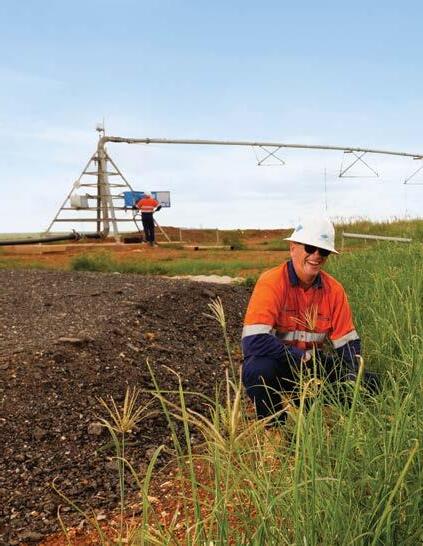
For business owners, these changes signal an immediate and stronger focus on workplace diversity, supply chain opportunities for women-led enterprises, and evolving expectations around parental leave policies. Staying informed on these updates will help businesses align with emerging requirements and potential opportunities.
The full strategy is available at www. genderequality.gov.au
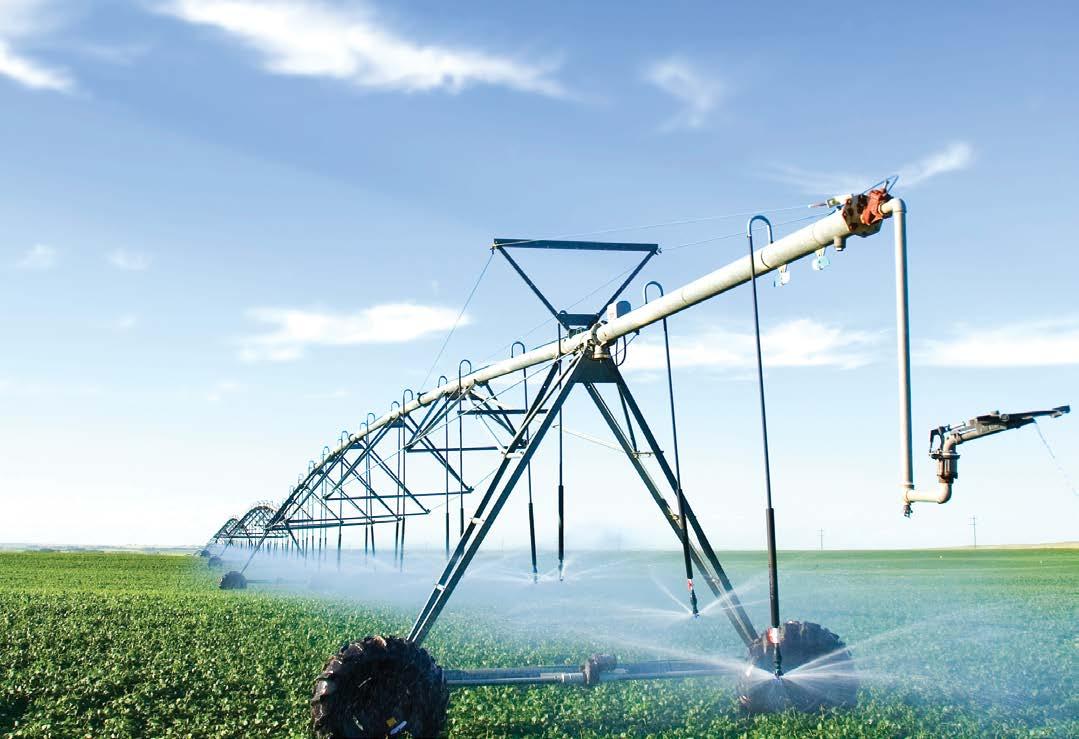


Gain access to the members only portal on the Irrigation Australia website Through the portal you can manage your Irrigation Australia membership, register your staff/employees for training, and access members only documents, presentations, and other materials MEMBERS ONLY PORTAL

Receive significant member dis nationally accredited irrigation t and qualifications delivered by Irrigation Australia in city and regional areas and virtually

ADVERTISEMENT DISCOUNTS ON IRRIGATION AUSTRALIA PUBLICATIONS
Receive significant discounts on advertising in the The Irrigation Journal and The Overflow These publications are distributed each quarter to all members and industry contacts
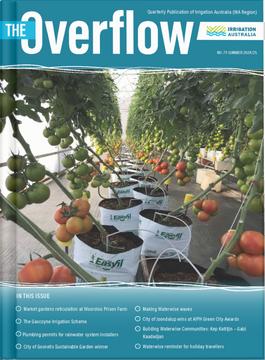

Receive significant member discounts on the joining fee and renewal fee to the Certification Program administered by Irrigation Australia

Irrigation Australia's e-knowledge repository has significant resources of technical papers, conference papers, publications such as The Irrigation Journal and The Overflow, and FAQ's available only for members



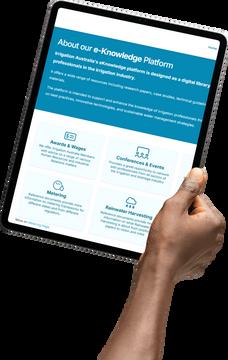

Irrigation Australia hosts a number of regional events and site visits across Australia This is a great opportunity for members and industry colleagues to come together to network, and discuss new challenges and technologies.

Receive member discounts on attending and exhibiting at the Irrigation Australia International Conference & Exhibition, as well as regional Expos


Receive member discounts on the Waterwise endorsement programs, relevant for domestic irrigation contractors, installers, landscapers and retailers
Benefit from Waterwise marketing and merchandise to promote yourself as a Waterwise Irrigation Professional to the community

FREE LISTING ON IRRIGATION AUSTRALIA'S WEBSITE
List your business on our Member Directory on the Irrigation Australia website (available to company memberships and certification holders only)

IRRIGATION AUSTRALIA PO Box 484, Morningside Queensland 4170 T 07 3517 4000 E info@irrigation.org.au W www.irrigationaustralia.com.au

DAVE CAMERON Chief Executive Officer IAL Brisbane Office
Dave.cameron@irrigation.org.au

NAOMI CARRAGHER Business Administration Manager/ Company Secretary IAL Brisbane Office Naomi.carragher@irrigation.org.au

STUART ALEXANDER Senior Trainer & Assessor IAL Brisbane Office Stuart.alexander@irrigation.org.au

MARIKE FRONEMAN Accountant IAL Brisbane Office Marike.froneman@irrigation.org.au

SAM O'BRIEN Business Manager - Training IAL Brisbane Office sam.obrien@irrigation.org.au

MADDISON COWARD Communications Coordinator IAL Brisbane Office Maddison.coward@irrigation.org.au
EDITORIAL Editor Gemma Nardone E MyTinyHQ.com.au
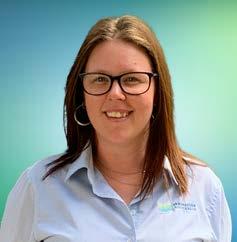
REBECCA NEW
Membership Manager IAL Perth Office
Rebecca.new@irrigation.org.au

AMY HALDANE RTO Compliance OfficerTraining IAL Brisbane Office amy.haldane@irrigation.org.au

ASHLEIGH LANG Training and Certification Administrator IAL Brisbane Office Ashleigh.lang@irrigation.org.au
ADVERTISING Maddison Coward T (07) 3517 4000 E maddison.coward@irrigation.org.au
DESIGN & PRODUCTION
Bubble Creative T 0416 087 412 E annette@bubblecreative.com.au